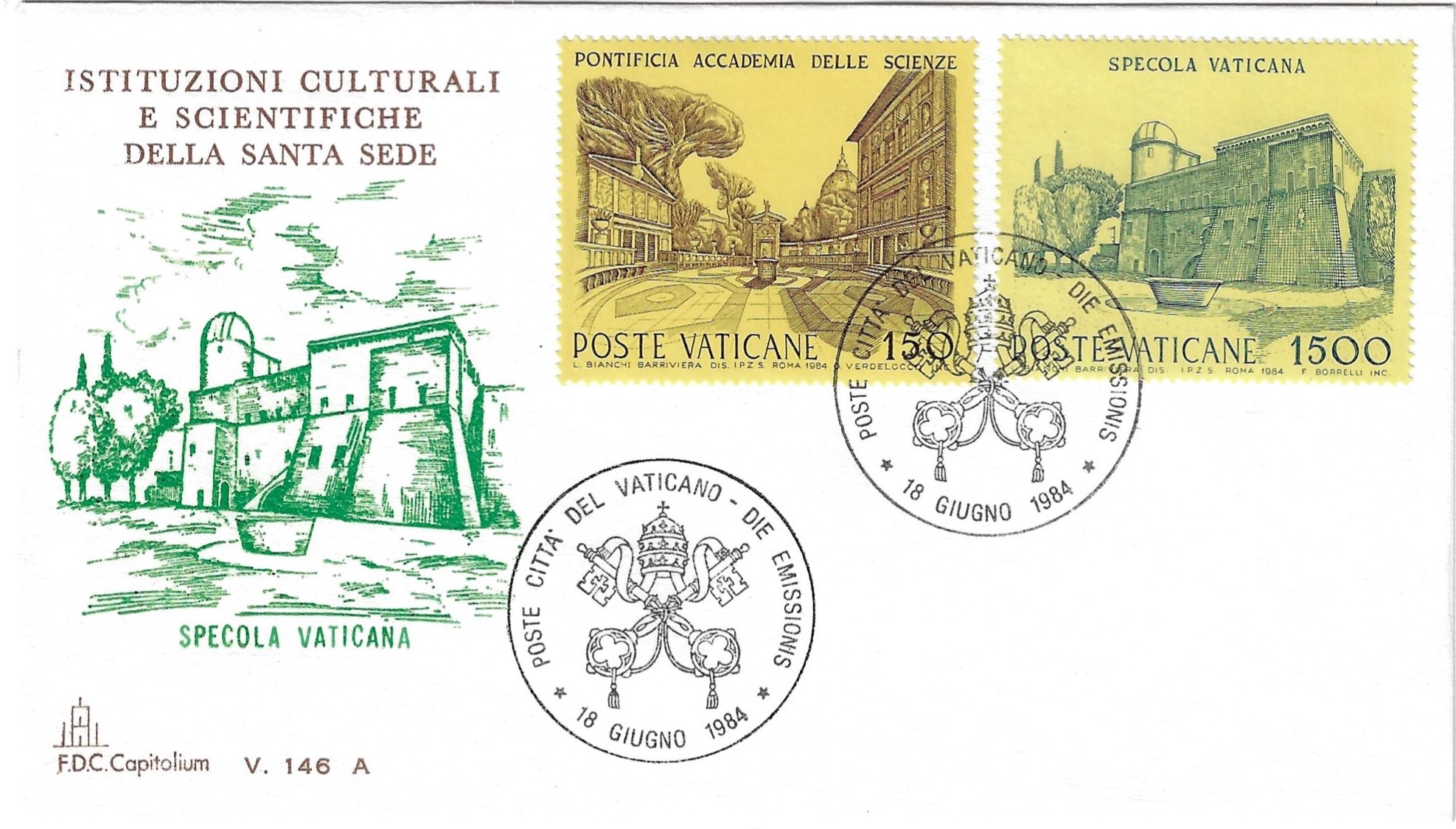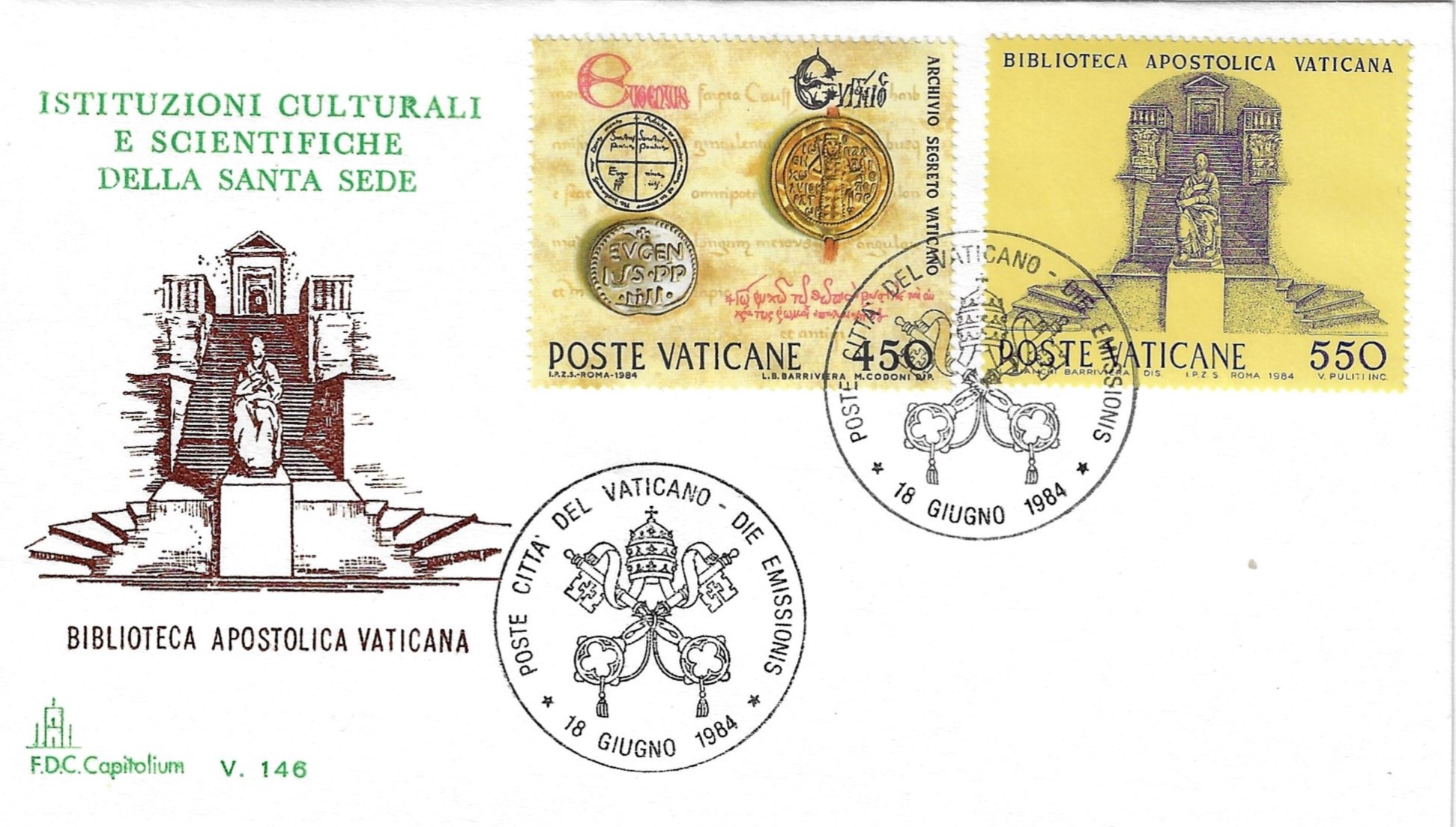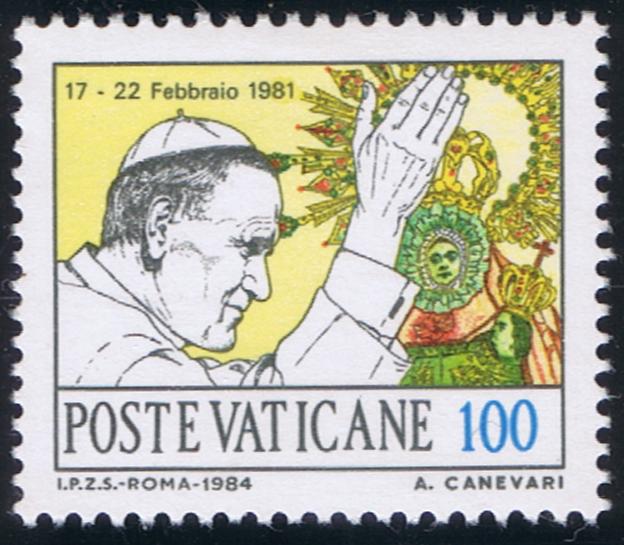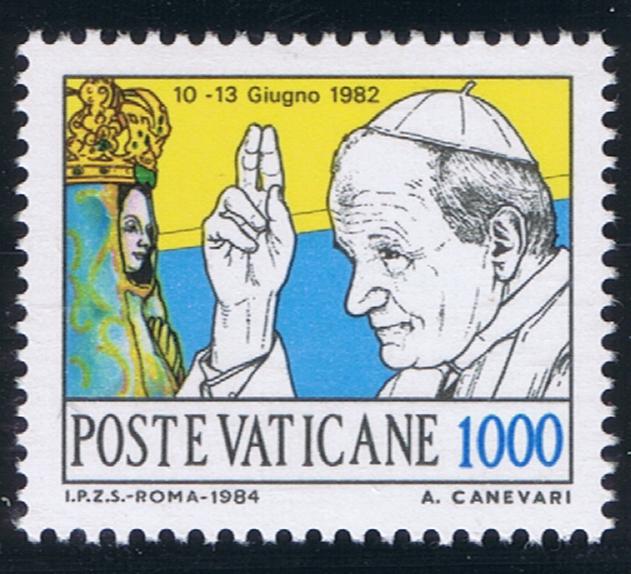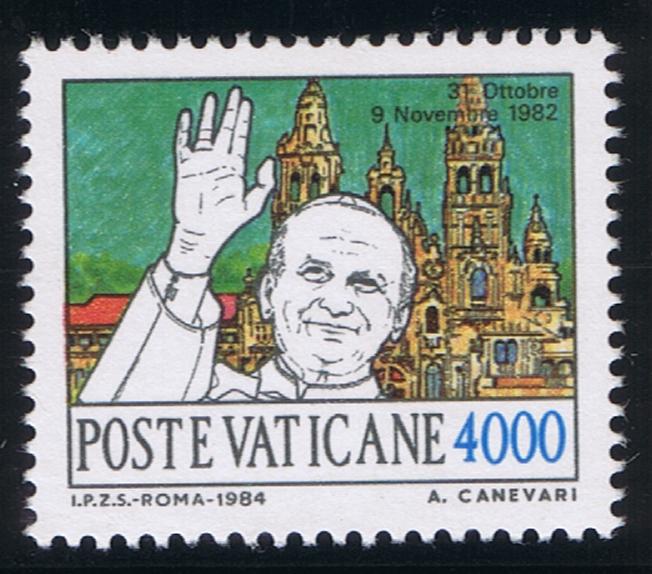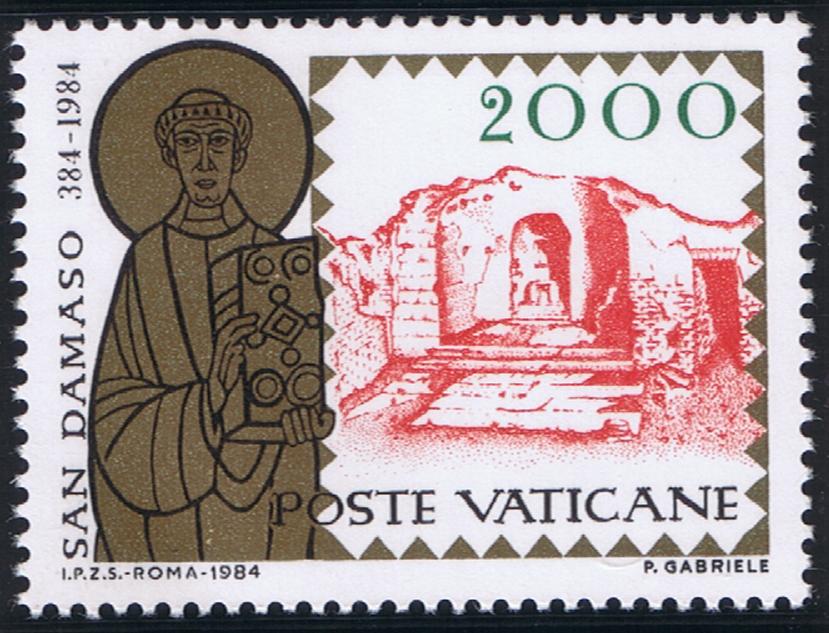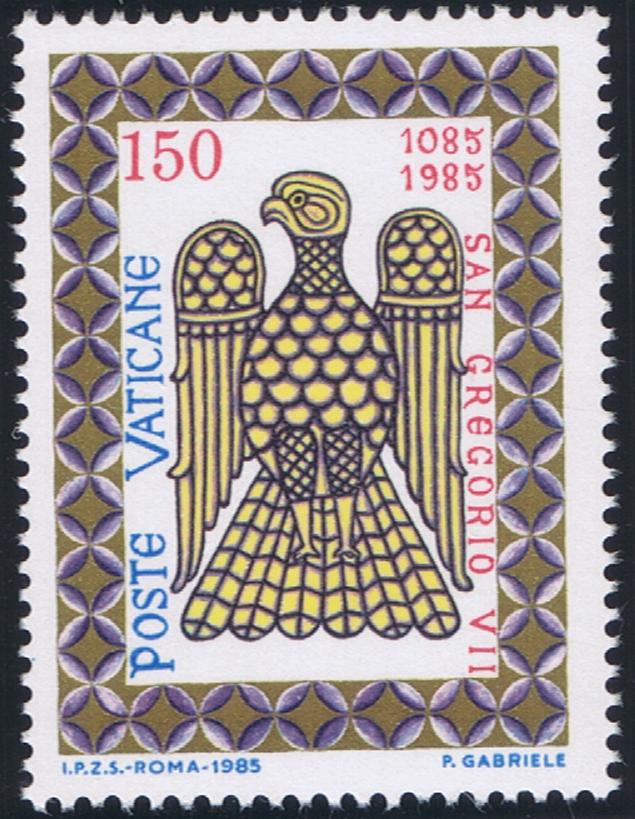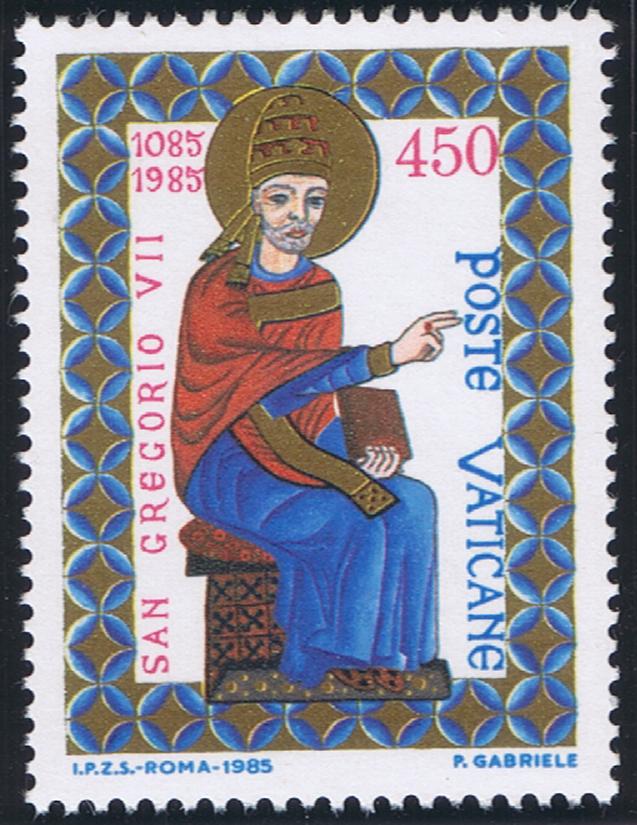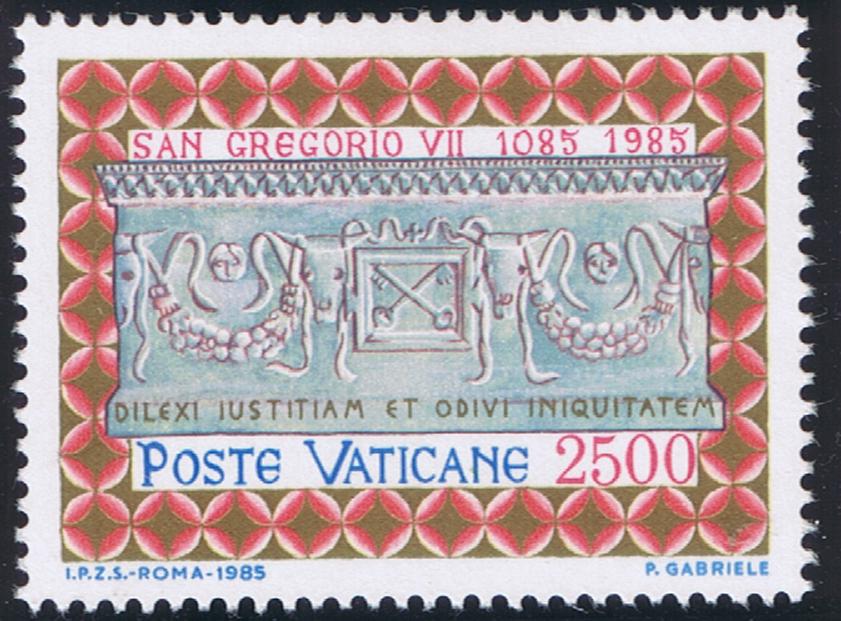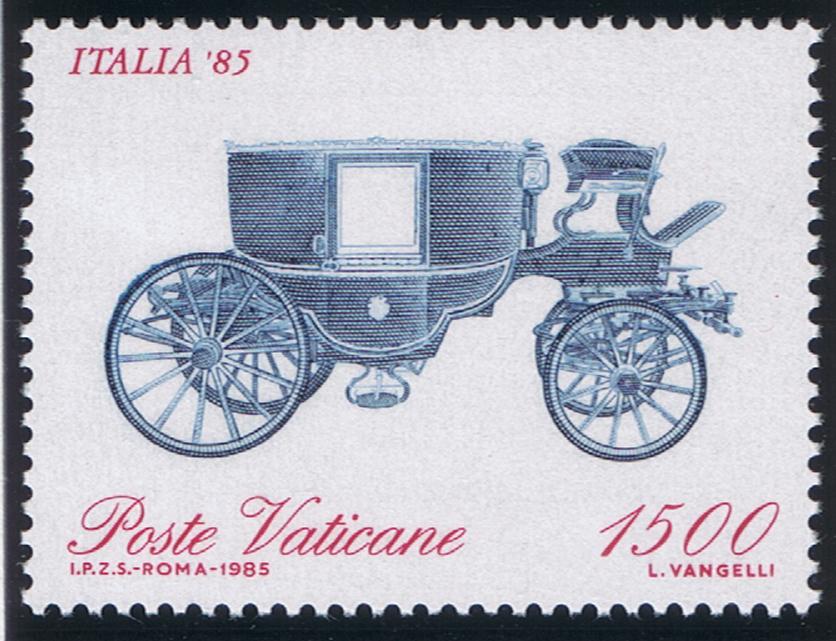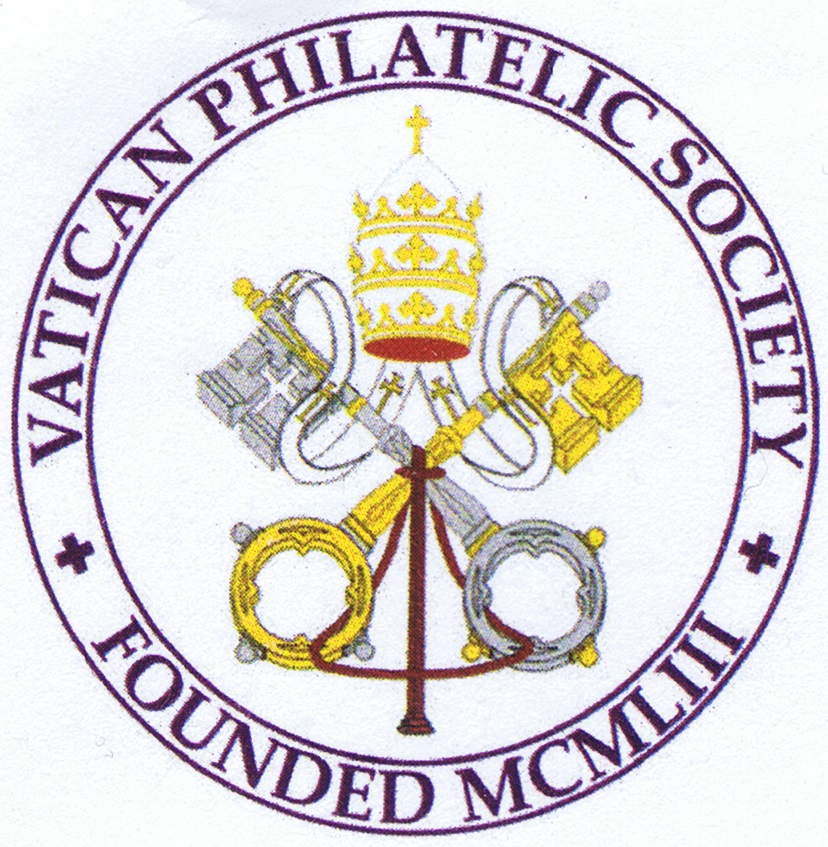
Member











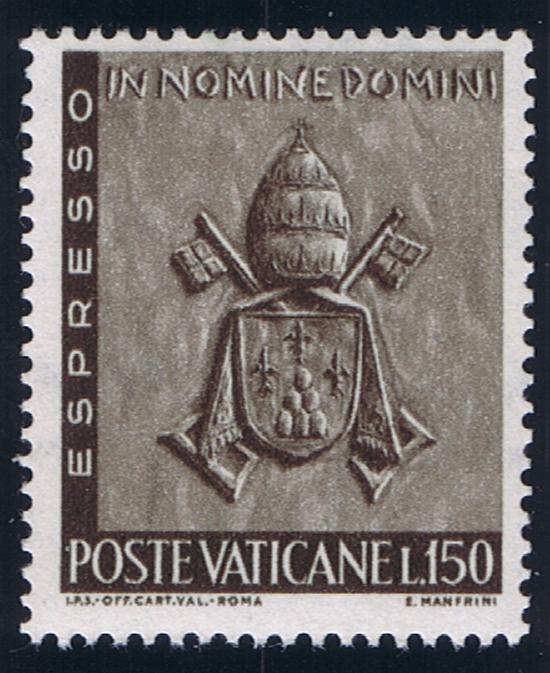
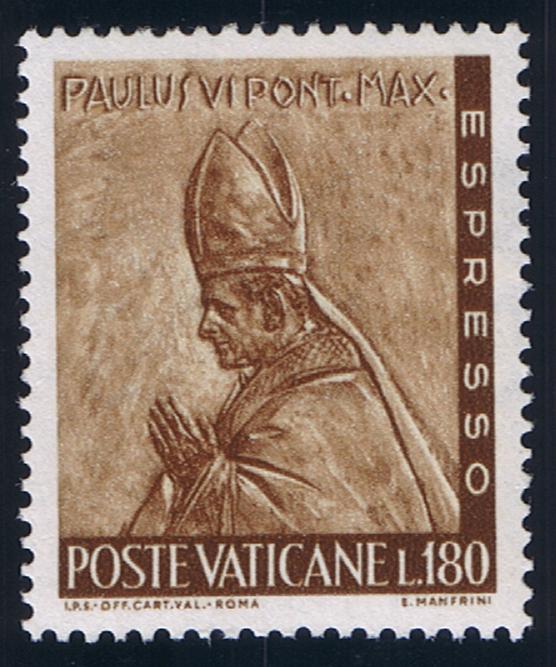
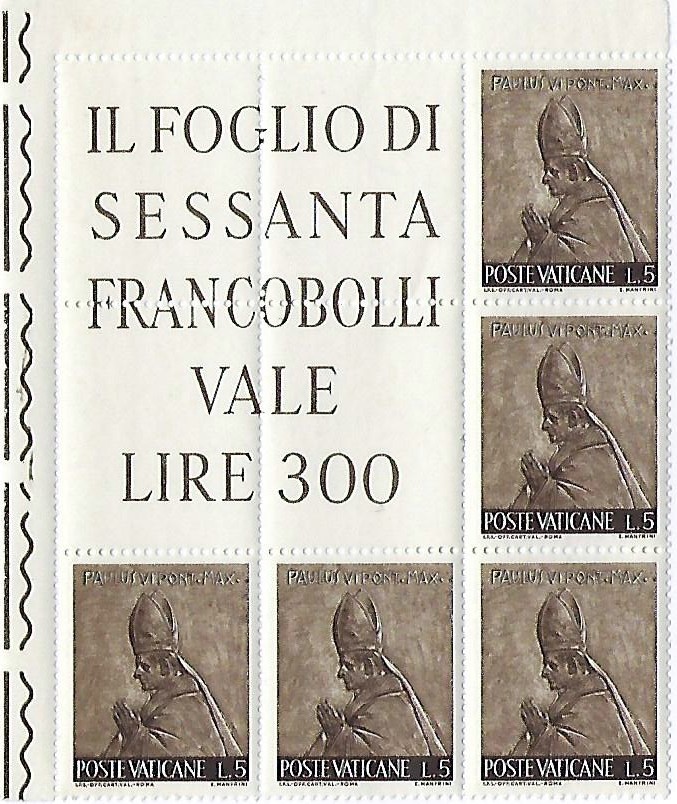




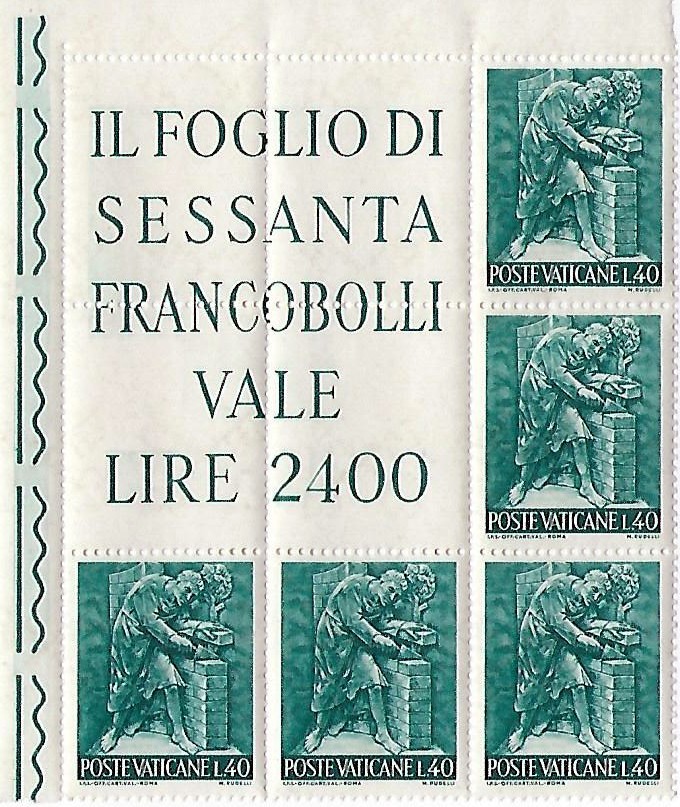
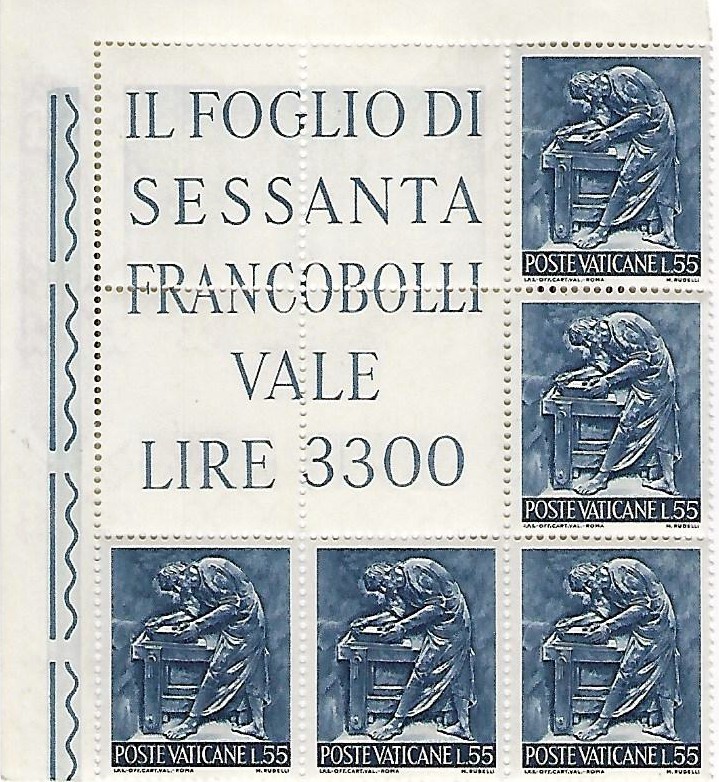
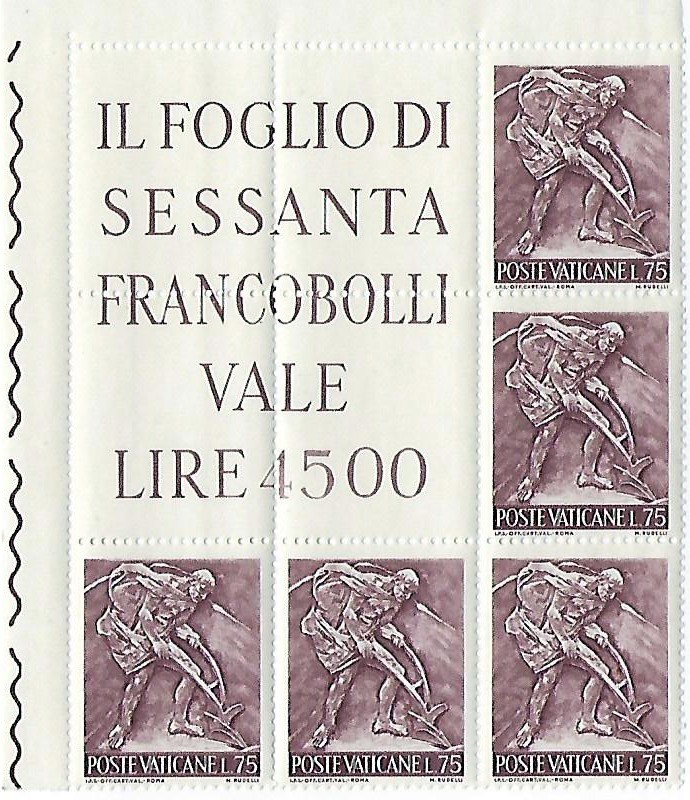










Designs for the
Sacred Millennium of Poland
The Vatican stamp at L.15 bears the portrait of Mieszko I, the ruler of Poland, and of his wife, Dabrowka, the daughter of the King Boleslaus, sovereign of Bohemia. Mieszko, inspired by Dabrowka, was baptized in 966; his court immediately followed suit, and then almost all the Poles living in the northern part of the country. Those in the south were already evangelized by the two great Slav missionaries, Saints Cyril and Methodius. Excavations of ancient Polish churches prove this to be true.
The picture of Mieszko I and Dabrowka is a reproduction of the portrait by the famous Polish painter, Jan Matejko, who is also known in Rome for his large painting: The Victory of King Jan Sobieski, the ruler of Poland, over the Turks at Vienna, Austria.
Above the two rulers' portraits there stands a white eagle, the shield of the royal Polish family of Piast, the grandfather of Mieszko I. The white eagle has always been the emblem of Poland.
Dominating the center of the stamp at L. 25 is the figure of St. Wojciech/St. Adelbert/ bishop of Prague, a friend of Pope Silvester II, of Emperor Otto III and of the Polish King Boleslaus the Great, son of Mieszko I. Expelled from Bohemia, St. Wojciech came to Poland. Soon after, at the suggestion of King Boleslaus, he went on to Prussia, lying northeast of the Vistula River, to convert those Baltic peoples who still were pagans. In the 14th century, the Prussians were annihilated by the Teutonic Knights who came to them under the pretext of converting them to Christianity.
St. Wojciech was murdered by the Prussians. His body, ransomed by King Boleslaus, was placed in the Cathedral of Gneizno. In the year 1000 both Emperor Otto and King Boleslaus made a pilgrimage barefoot to the tomb of their friend, St. Adelbert, where they prayed for the grace of peace and harmony between their peoples, the Poles and the Germans. Immediately after the pilgrimage King Boleslaus, with the approval of Pope Sylvester and Emperor Otto, founded the first metropolitan see at Gneizno and three bishoprics at Wrocsaw/ Bratislav/ in Silesia; at Kotobrzeg/ Kolberg/ in Pomerania; and at Krakow/ Cracow/ in southern Poland. The first archbishop of the new ecclesiastical province was Archbishop Radzimin, brother of the saintly martyr.
On the right of the saint is the Cathedral of Wrocsaw in a section of the country that was christianized by the slav missionaries, Saints Cyril and Methodius at the end of the 9th century. The Cathedral, built by a Polish royal family, was the see of the bishops of Silesia, under the authority of the Polish Metropolitan Archbishop of Gneizno from the year 1000 until half of the 19th century.
On the left is the Cathedral of Gneizno where the body of St. Adelbert was put to rest. Officially it is the seat of the Polish Primate, although since the last war, he resides at Warsaw The picture in the center of the stamp at L.40 is that of Sw. Stanislaw/ St. Stanislaus/ SZCZEPANOWSKI, the bishop of Cracow, a heroic defender of the freedom of the Polish people who were oppressed by their King Bolislaus II, the Brave. Re-proved by the holy bishop, the King went into a rage and under the pretext of high treason, he ordered his soldiers to kill the bishop in 1079. Later, having become aware of the gravity of his crime, he renounced his throne and retired to a monastery where he died repentant.
On the Vatican stamp at L.50 stands Hedwig/Jadwiga, the youngest and most beloved queen of the Polish people. She was the granddaughter of King Ladislaus Lokietek, who with the help of Pope Boniface III unified the loosely organized Polish kingdom. Hedwig was also the daughter of Louis d'Anjou, the king of Poland and Hungary. In 1384 when Hedwig was only twelve years of age, the Polish nobility elected her queen of Poland. During the couple of years she ruled alone, Hedwig, reunited Ruthenia/today's Ukraine/ to Poland and prepared it for a reunion with Rome. Ladislaus Jagiello, the Grand Duke of Lithuania, proposed marriage with Hedwig, promising to embrace Christianity with all his people and to join his country with Poland. For the love of Christ, Hedwig consented - at the price of personal sacrifice of the love of her dearest fiance, William. Jagiello, after his baptism and under the influence of his young and virtuous wife, became a fervent and sincere Catholic. A year after his marriage Jagiello kept his promise of leading his good nation to the Faith and so extended his rule over Bialorus/White Russia/ and the northern part of Russia. Very soon the presence of Hedwig, the queen, at Vilno, the capital of Lithuania, and her angelic goodness to the Lithuanians, gave impetus to the early and peaceful conversion of the people. Queen Hedwig died young and in the odor of sanctity. The picture on the stamp is a copy of the portrait of Jadwiga painted by Jan Matejko.
On the left side of the stamp is the Gate of Vilno, called "Ostra Brame". On the gate is a picture of Our Lady which is held in great veneration by the Poles and Lithuanians. (Cf. Vatican Scott #189-91) (Cf. Vatican Notes, Vol.VIII,#6,pp.11-12 -May-June 1960)
On the right side is the library of the University of Cracow, founded by the uncle of Queen Hedwig, the Polish King Casimir the Great in 1364, and reorganized by the same Queen Jadwiga who offered to its cause all her personal gems and valuables. Behind the gate in the background is a monument to the great Polish astronomer, Nicolas Copernicus, an alumnus of the same university.
In the center of the Vatican stamp at L.150 is the image of the miraculous Madonna at Czestochowa, Queen of Poland. According to a legend the picture was painted by St. Luke. Thousands of pilgrims come each year to this shrine to beg the Blessed Virgin's intercession. (Cf. Vatican Scott #216-18. Cf. Vatican Notes, Vol. IX, 41, pp.11-12- July-August 1960).
On the left of the Madonna is the Basilica of Our Lady of Czestochowa at Jasna Gora, which means "Bright Mountain", and which constitutes the major part of the town of Czestochowa. On May 3 of this year (1966) the Millenium celebrations will culminated at this famous shrine.
On the right of the Madonna is the Cathedral of Cracow, built during the middle ages, destroyed by the Nazis during the last war and rebuilt soon afterwards.
On the stamp at L.220 is the portrait of Pope Paul VI, surrounded by Poles dressed in costumes of various parts of Poland. Pope Montini as a young priest worked for some time at the Polish Nunciature in Warsaw and for that he is well known and very much loved by the Polish people, especially for his efforts to maintain peace in the world. The entire Polish nation would so much desire to pay special homage to the Holy Father at Czestochowa on May 3 and on the occasion of the Millenium celebrations and during the great pilgrimage of Poles from all over the world at Rome from May 12 to 18. (Permission for Pope Paul VI to attend the celebration in Poland was refused by the Polish communist government)
The Polish inscription above the picture is none other than the traditional greeting of the Polish people and means "Praised be Jesus Christ", which is also used to open the Vatican Radio news broadcasts. At the bottom is the response: "For ever and ever. Amen."
Technical Details:
Scott Catalogue - 433 - 438
Date Issued - 03 May 1966
Face Value - 15 l, 25 l, 40 l, €1.25, 50 l, 150 l, 220 l
Perforations - 14x13.5
Printer - The Italian State Printing Works
(Author - Unknown, From Vatican Notes Volume XV, Number 1, July-August 1966, Pages 7-9)






The Closing Of The
Second Vatican Council
On October 11, 1966, the Vatican issued six stamps to mark the closing of the II Vatican Council. The inscription around three sides of the stamp is translated: THE II VATICAN ECUMENICAL COUNCIL CLOSED IN THE YEAR 1965. The special First Day Cancellation is the one that has been in use for this purpose for the past year.
The Lire 10 shows Pope John XXIII being carried in the "sedia gestatoria" or portable throne, recalling the opening of the II Vatican Council on October 11, 1962, during the reign of the Roncalli Pope.
The Lire 15 shows an enthroned book of the Gospels, reading, as best I can describe: INCIPIT EVANGELIUM SECUNDAM IOANNEM (Here begins the Gospel according to John), which contains the prayer of Christ at the Last Supper: "That they all may be one...."
The Lire 55 shows the concelebrated Mass on the Papal Altar over the tomb of St. Peter, under Bernini's canopy, which was offered at the end of the Council.
The Lire 90 shows Pope Paul VI giving the Kiss of Peace to a bishop of the Eastern Rite, who could be either orthodox or uniate.
The Lire 100 features the ring which was received by all prelates attending the II Vatican Council. These are gold plated and were donated by a manufacturer of Milan, and were to symbolize the bond uniting Pope Paul with the bishops. There are three figures on the ring beneath the Greek cross, which even on the ring itself are hard to distinguish. Presumably, the central figure is Christ, and the other two are St. Peter and St. Paul.
The Lire 130 shows Pope Paul VI being carried on the portable throne in front of St. Peter's. Note the crosier which the Pope carries has a crucifix at the top instead of the usual pastoral crook.
Technical Details:
Scott Catalogue - 439 - 444
Date Issued - 11 October 1966
Face Value - 10 l, 15 l, 55 l, €1.25, 90 l, 100 l, 130 l
Perforations - 14
Printer - The Italian State Printing Works
(Author - Unknown, From Vatican Notes Volume XV, Number 4, January - February 1967, Pages 1-2)













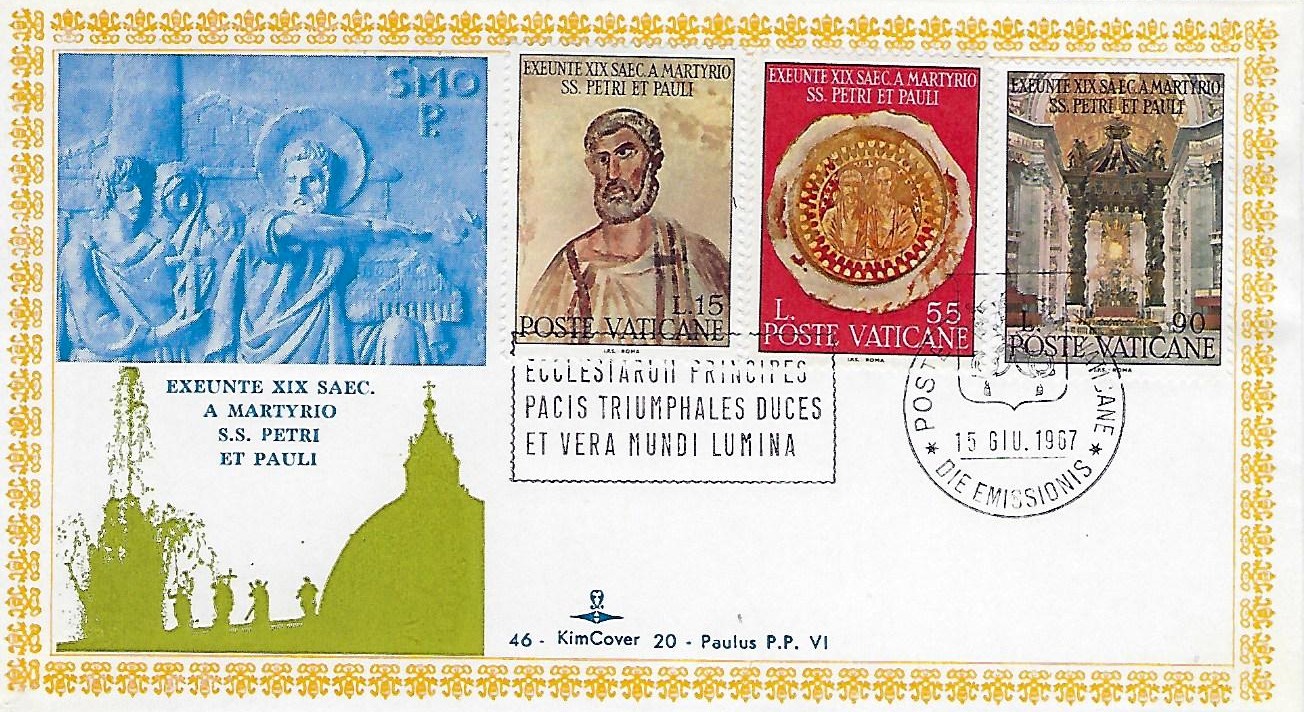
Solemnity of
Saints Peter and Paul


“Both apostles share the same feast day, for these two were one; and even though they suffered on different days, they were as one. Peter went first, and Paul followed. And so we celebrate this day made holy for us by the apostles’ blood. Let us embrace what they believed, their life, their labors, their sufferings, their preaching, and their confession of faith.”


“And so I say to you, you are Peter, and upon this rock, I will build my church, and the gates of the netherworld shall not prevail against it. I will give you the keys to the kingdom of heaven. Whatever you bind on earth shall be bound in heaven; and whatever you loose on earth shall be loosed in heaven.”Although he fled when Jesus was arrested in the Garden of Gethsemane (along with other Apostles), Peter emerges as the leader of the disciples in Acts at the Ascension and later at the Council at Jerusalem (49/50), after which he went to Antioch and then to Rome, the capital of the Roman Empire.



“On the commemoration of all the saints it is right for us to rejoice in this heavenly band, fashioned by God as models of patience and support for our faith; but we must glory and exult even more in the eminence of these two forebears, whom the grace of God raised to so high a summit among all the members of the Church, and established like two eyes that bring light to the body whose head is Christ. As to their merits and virtues, which no words can describe, we should not think of any difference or distinction between them; their calling was the same, their labors were similar, theirs was a common death.”REFERENCES:


III UNIVERSAL CONGRESS FOR THE
APOSTOLATE OF THE LAITY AT ROME
OCT. 11 - 18, 1967
The two stamps represent the symbol of the Congress, as designed by Giovanni Gervasi. They are inspired by the theme of the Congress: "The People of God on the Highway of Humanity". Around the globe, people of the world walk in various dress, size and national origin, under the Cross of Christ.
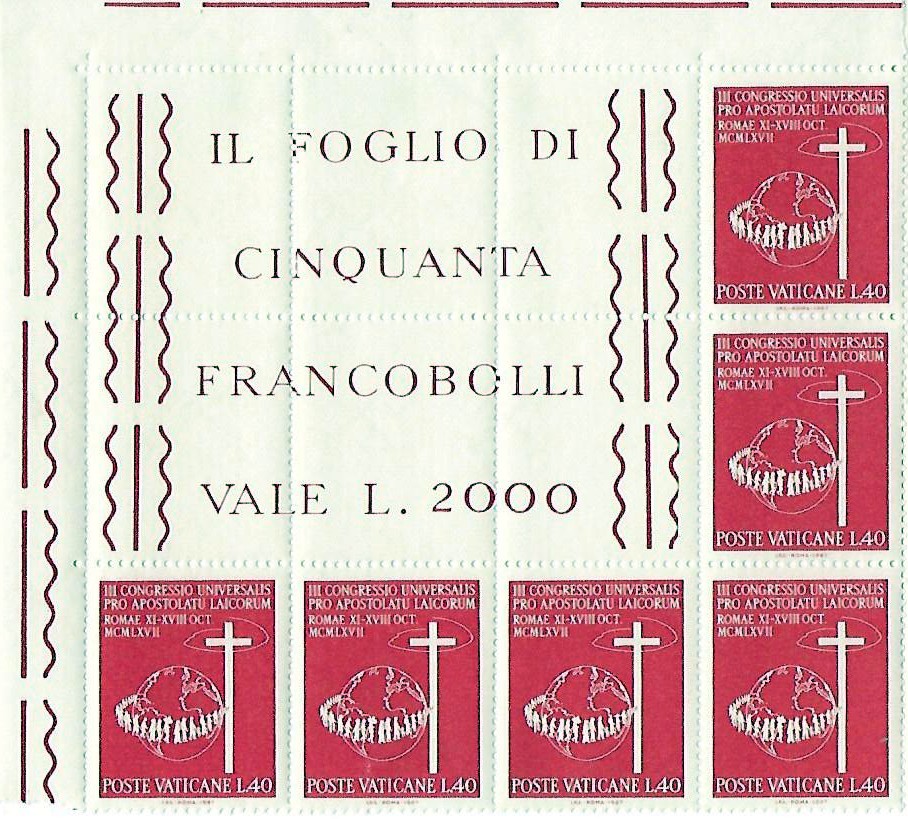
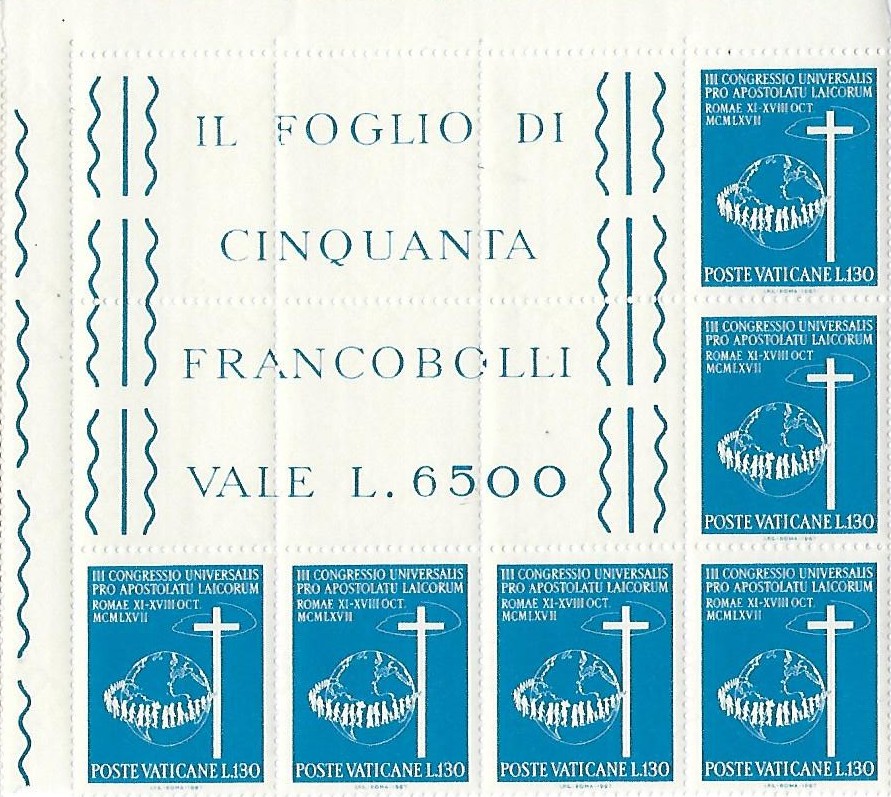




The Fiftieth Anniversary of the
Apparitions of Our Lady At Fatima.
Fatima is a village and parish in the town of Aljustrel, about 70 miles north of Lisbon, Portugal. Lucia de Jesus dos Santos Abobora was born March 22, 1907, the youngest of the seven children of Antonio dos Santos Abobora and his wife, Maria Rosa. Her First cousins, Francesco Marto (b. June 11, 1908) and Jacinta Marto (b. March 11, 1910) were the eighth and ninth children of Manuel (Ti) Marto and his wife Olimpia (sister of Antonio Abobora).
In the summer of 1914 while Lucia was tending flocks with some other girls, having said the rosary after lunch, a white figure like a person wrapped in a sheet appeared to the girls on three occasions. Lucia wrote about this in 1937, and while clear about the fact, is vague in her description of what happened thirty years before when she was a child of seven.
In the early summer of 1916, Lucia, Francesco and Jacinta were tending the combined family flocks near the hamlet of Cabeco. Having finished the rosary after lunch they were startled by a great gust of wind, and saw a radiant figure approaching in the air across the valley. It stopped before the cave where they had gone for shelter. It appeared to be a youth of great beauty, and he spoke to them: "Do not be afraid. I am the Angel of Peace. Pray with me". Kneeling and bowing to the ground he prayed three times: "0 my God, I believe in Thee, I adore Thee, I hope in Thee and I love Thee. I ask pardon for those who do not believe, do not adore, do not hope and do not love Thee." Three times the children recited the prayer with him. Then he said: "Pray thus. The most holy Hearts of Jesus and Mary will be touched by your prayer". Then he disappeared. None of the children mentioned this apparition to anyone.
They were to offer sacrifices and accept sufferings for the conversion of sinners. The Lady opened her hands and streams of light came from them similar to those of Our Lady of the Miraculous Medal. The Lady told them to recite the rosary daily for peace and the conversion of sinners. Then the Lady rose from the tree and disappeared to the east. All had seen the Lady. Jacinta heard all but said nothing. Francesco did not hear the Lady but heard Lucia. The apparition lasted about ten minutes.
On the way home Lucia urged them to mention nothing, but Jacinta blurted it all out that evening. Ti Marto questioned his two children closely. Next morning his wife, Olimpia, visited Maria Rosa, Lucia's mother, and talked the matter over. Maria accused Lucia of lying, but Lucia never wavered in her account. The children spent an uncomfortable month.
June 13 is the Feast of St. Anthony of Padua, a Portuguese, patron saint of Portugal and of the Fatima parish, and was a holiday in the village. The children brought the sheep to pasture and then back home. Lucia went to Mass and then called for the Marto children and started for the Cova da /ria, accompanied by several villagers. Others were waiting at the Cova, making a crowd of 50 people. Maria da Capelinha who was present saw the children kneel before the small tree, heard a sound like the buzzing of bees, which she took to be the Lady talking, saw a little cloud above the tree, and when the children said the Lady was going, heard a sound like a rocket. Lucia asked the Lady what she wanted, and was told to come back the 13th day of July, to learn to read, and to recite five decades of the rosary daily. Lucia was told that Francesco and Jacinta would soon be in heaven, but that she would have to wait longer to help establish devotion to the Immaculate heart of Mary throughout the world. Again the Lady opened her hands and rays of light shone from them. In front of the right hand was a heart surrounded by a crown of thorns which pierced it. Francesco had seen the Lady but heard only Lucia. On the way home Francesco and Jacinta told their parents what had happened and were believed. Lucia's mother was convinced her daughter was lying, and lost her temper when Lucia expressed a wish to learn to read. Off she marched Lucia to the village priest. Fr. Manuel Ferreira. He had already talked to Francesco and Jacinta, and after questioning Lucia was convinced that they were telling the truth, but was not sure that the origin of the apparition was holy or demoniacal. He warned Lucia that it might be a trick of the devil, which upset Lucia, and brought a tongue lashing and blows from her mother. Lucia decided not to meet the Lady on July 13, but changed her mind on the morning of the 13th.
At the Cove da Iria four to five thousand people had gathered. Just before noon there was a flash of light. Ti Marto was near his children and saw a faint mist or cloud settle on the tree, and heard a sound like a horse fly in an empty bottle, but could distinguish no words. The Lady was visible only to the three children, and waited for Lucia to speak, asking: "What do you want me to do ?" She was told to come back the 13th of August and to daily recite five decades of the rosary to obtain peace and the end of World War I. Lucia asked her name and asked that she perform some miracle that all could see, so that they would believe she had appeared. The Lady promised to tell her who she was and to perform a miracle in October. Lucia was told to sacrifice herself for sinners and to practice devotion to the Hearts of Jesus and Mary to make reparation for the sins committed against them.
Toward the end of July, 1916, beside the cottage of Lucia's family, the Angel appeared again without warning, urging their ceaseless prayers and sacrifices for the conversion of sinners. In September or October of the same year the Angel of Peace appeared to them a third time at the cave near Cabeco, while they were reciting the angel's prayer. He held a chalice above which was suspended a bleeding Host. The chalice and Host remained suspended in air while he and the three children recited the prayer with him three times. He gave the Host to Lucia to consume and the chalice to Francesco and Jacinta to drink. Again they repeated the prayer three times and the angel disappeared. These apparitions were not revealed until Lucia, under obedience, wrote a complete account of the events in 1937, while in the convent. They were not made public until 1942.
After Mass on Sunday, May 13, 1917, the three children started their sheep toward pasture about noon, to a field owned by Antonio Abobora, the Cova da Iria. While playing, they were startled by a flash of light, and ran for shelter to an oak tree. There was another flash and they ran for another tree, but stopped when they saw above a small tree in their path a ball of light with a Lady standing in its center. She told the children not to be afraid, that she came from heaven. They were to return to this place the 13th day of the month for the next five months. "In October I will tell you who I am and what I want." At Lucia's questioning all three were told they would go to heaven.
Again the Lady opened her hands and rays of light shone forth, seeming to pass into the earth, revealing a lake of fire in which were demons and human souls, a vision which lasted for only a few seconds. The children were told that they had seen hell, and that a devotion to the Immaculate Heart of Mary was to be established worldwide to save souls from hell. They were told that World War I was drawing to a close, but in the reign of the next pope there would be a greater war. An unknown light illuminating the night would presage the punishment of the world by war, famine, persecution of the Church and the pope. To prevent this Russia was to be consecrated to the Immaculate Heart of Mary, and communion of reparation was to be made on the First Saturday of every month. If Russia is converted, peace will come to the world; if not, Russia will spread her errors over the world and cause wars and persecutions of the church, At the end of the rosary they were advised to say:"0 my Jesus, forgive us. Preserve us from the fire of hell. Take all souls to heaven, and help especially those most in need." A message was given which was sealed in an envelope in the custody of the Bishop of Leiria which was opened in 1960, but its contends have not been revealed by the Pope. Then the Lady disappeared into the eastern sky.
Publicity came with a rush. The anti-clerical press attacked the apparitions as a trick inspired by priests. The Catholic press was reserved reminding the people that the origin of any apparition could be diabolic as well as heavenly. Fatima was overwhelmed by visitors and the children were constantly questioned. The Government decided that this was a dangerous revival of superstition which must be stamped out. Fatima came under the sub-prefecture of Ourem, whose administrator was Arturo de Oliveira Santos, a blacksmith and militant free thinker.
Santos ordered Ti Marto and Antonio Abobora to appear before him with the children at the town hall of Ourem at noon, August 11. Ti Marto decided to leave his children at home, But Antonio Abobora brought Lucia. Under questioning Lucia refused to reveal the secret message. Next evening Santos arrived in Aljustrel and went to Ti Marto's to question his two children but to no avail. Santos suggested that they bring the children in the morning to Fr. Ferreira to get his opinion on the matter to which Ti Marto agreed. Santos appeared in the morning, took the children, saying that after interviewing the priest he would take the children to Cove da Iria. Fr. Ferreira was not so friendly this time and accused Lucia of lying, and insisted on knowing the secret message. He dismissed the children in the care of Santos, who took them to Ourem on the pretext of consulting the priest of Ourem. He took them to his own house and subjected them to questioning, locked them up for the night , brought them to the town hall in the morning for further questioning and then threw them into the jail with the drunks and thieves.
A policeman took them to Santos office for a last try. Lucia was 10, Francesco 9, and Jacinta 7 Santos ordered his assistant to take Jacinta and throw her in oil. He came back and reported her dead. Francisco was taken next and reported to Santos as dead. Thinking he had shaken Lucia he demanded she reveal the secret message or die. She refused and was lead out the door, and into the room where Jacinta and Francesco were being held. They were forced to spend the night at Santos' house, were questioned in the morning at the town hall and then sent back in custody to Fatima, where their families were searching high and low for them.
The children had been in custody on August 13, when they were supposed to meet the Lady at Cova da Iria, but a crowd of 18,000 had assembled. At noon there was a rumble and a flash of light and a filmy cloud came from the east and settled on the small tree for a few moments and then disappeared. On Sunday, August 19, 1917, Lucia, Francesco and his brother John took the sheep to pasture. About 4:00 P.M. they were in a place called Valinhos near Aljustrel, when Lucia sensed a change in the air and sent John to fetch his sister, Jacinta. When Jacinta arrived the Lady appeared to them above a small tree as she had at Cove da Iria. The same admonition was repeated:- come to the Cova on September 13, recite five decades of the rosary daily. Money which had been left by visitors at the Cova was to be used to buy two processional biers for the celebration of the Feast of Our Lady of the Rosary. Lucia and Jacinta with two other girls were to carry one, while Francesco and three other boys would bear the other. They were admonished to continue making sacrifices for the conversion of sinners "because many should go to hell because they have no one to pray and make sacrifices for them".
On the morning of September 13th, 25,000 to 30,000 people had assembled at the Cova, asking for cures and graces from the Blessed Virgin. The three children arrived about noon and the sun seemed to lose something of its brightness. Many people present saw the ball of light approach and settle above the tree. During the apparition some saw petals of white float down a sunbeam, diminishing in site as they descended but disappearing before touching the ground.. Not much was said to Lucia except the repetition of the admonition to continue to make sacrifices for the conversion of sinners, and a statement that on October 13th St. Joseph and the Child Jesus would appear.
Seventy thousand people were on hand on October 13th and the children and their parents arrived about 11:30 A.M. and stood before the tree. It was raining continuously from the night before. At noon the Lady appeared. Spectators saw a wisp of white vapor form about the children and disappear three times
Lucia asked:"Who are you and what do you want?" The Lady replied" I am Our Lady of the Rosary. I want a chapel built here in my honor. The Rosary must be said every day. The war is coming to an end and the soldiers will not be long in coming home. She promised to grant some of the favors passed on to her by Lucia. She told her men must reform their lives. The rain stopped and Our Lady disappeared. The clouds were split down the middle and rolled aside leaving the sun in a clear sky. The crowd stared at it and did not become blinded, since it appeared like a silver disc. To the right of the sun appeared the Holy Family, Our Lady, St. Joseph and the Christ Child in his arms. All three children saw this, and saw St. Joseph and the Christ Child thrice bless the throng. Lucia also saw Our Lady of the Seven Sorrows without the sword in her heart and beside her Our Lord, only the upper half of his body being visible. She also saw Our Lady of Mt. Carmel with the Infant Jesus crowned as Queen of Heaven. None of the crowd saw this but they were terrified by what they did see. The sun had changed in appearance so that one could stare directly at it without being blinded. As the throng looked up the sun became to move, spinning on its axis and emitting colored rays of light to the side. This lasted for four minutes, stopped, started again, stopped and started again.
This time the beams of multicolor swept over the faces of the crowd Suddenly the sun appeared to ziz-zag toward the earth, and the crowd shrieked in terror. The sun appeared to halt and climb back in giant zig—zags to its place in the heavens, lost its silvery appearance and returned to normal. All this lasted fifteen minutes. It was seen as far as ten miles away. The lettered and unlettered, freethinker, priest, peasant and scientist saw it, and all questioned told the same story. It must be that God imposed this apparition on the eyes of the 70,000 witnesses at Cova da Iris and those within the range of at least ten miles to underscore the reality of Our Lady's appearances in Portugal and the importance of the message given there. Lucia and Jacinta had first told of the message that this would happen back in May of that year. This was the end of the apparitions at Fatima.
As to the three children, they had begun to grow spiritually by their interior life of prayer and penance. In the great influenza epidemic of 1918 Francesco was taken ill, recovered, relapsed and grew steadily weaker. He received his First Holy Communion April 3, 1919 and died the next day. Jacinta was also take ill at the same time, developed pneumonia, pleurisy, and was hospitalized at Ourem, where she said Our Lady appeared to her and told her she would soon die in a hospital in Lisbon. A doctor from Lisbon visited Fatima in January, 1920, and had Jacinta taken to Lisbon for an operation to save her life. She lingered after the operation of Feb. :0, 1920,until Feb 20 of the same year. She died alone in her room at the hospital, not yet ten years of age. Jacinta was buried at Ourem but in 1935 was reinterred in the grave of Francesco at Fatima. Before her body left Ourem it was found to be incorrupt. On May 1 951 she was buried again in the basilica at Fatima. Francesco was disinterred and buried in the basilica on March 13, 1952.
Lucia is alive as of this writing. At the age of 14 she joined the Sisters of St. Dorothy at Vilar, and went to make her novitiate in Spain. Today she is a Carmelite nun at Coimbra. She visited the Cove da Iria in May of 1946 to see the new basilica being constructed and the Chapel of the Apparitions where she attended Mass celebrated by the Bishop of Leiria. She visited the graves of Feance'sco and Jacinta and returned to the convent. She has reported an apparition of Our Lady, Dec. 10, 1925; and two of Our Lord in 1927.
In 1918 Pope Benedict XV re-established the Diocese of Leiria. In May of 1922 the Bishop of Leiria set up a canonical commission to investigate the apparitions. On October 13, 1930, the Bishop published the conclusions of the commission, declaring the apparitions worthy of belief, and gave his official approval to devotion to Our Lady of Fatima.
On May 13, 1967, Pope Paul VI was at Fatima to mark the 50th anniversary of the first apparition. At that time pictures appeared in the press, showing Lucia in her Carmelite robes with the Pope at the celebration. On this date the Vatican issued a slogan cancel which read:" Pope Paul VI as a pilgrim prays to the Virgin of Fatima on the fiftieth anniversary of the apparitions for the church and for the peace of the world".
On October 13, 1967, the fiftieth anniversary of the last apparition was commemorated by Vatican with three stamps. The L.30 shows a statue of the three children at the shrine of Fatima. The L.50 is a photograph of the Basilica of Fatima. The L.200 shows Pope Paul VI praying before the statue of Our Lady at the Fatima shrine.
Technical Details:
Scott Catalogue - 455 - 457
Date Issued - 13 October 1967
Face Value - 30 l, 50 l, 200 l
Perforations - 13.5x14
Printer - The Italian State Printing Works
(Author - Unknown, From Vatican Notes Volume XVI, Number 4, January - February 1968 1965, Pages 3-7)





Airmail Issue of 1967
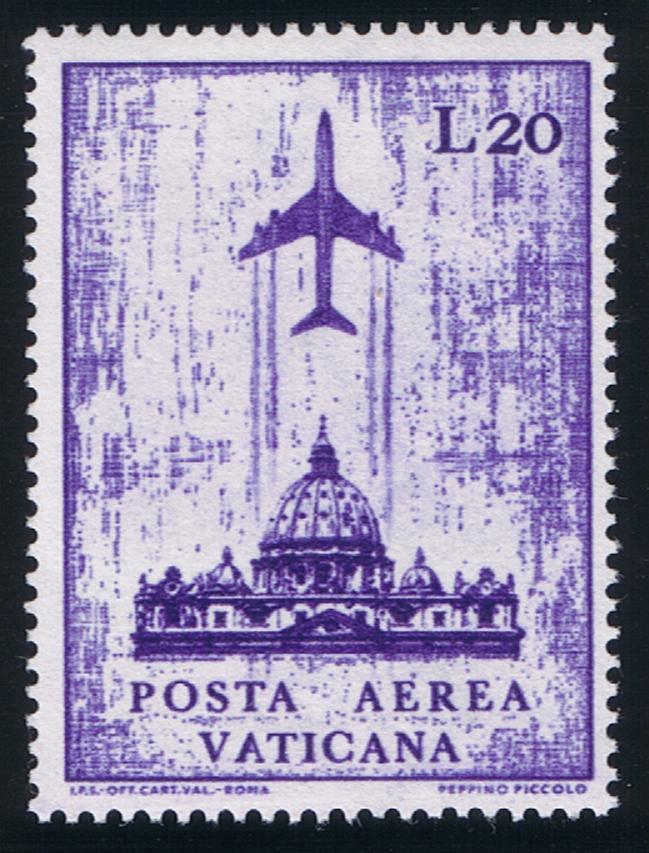
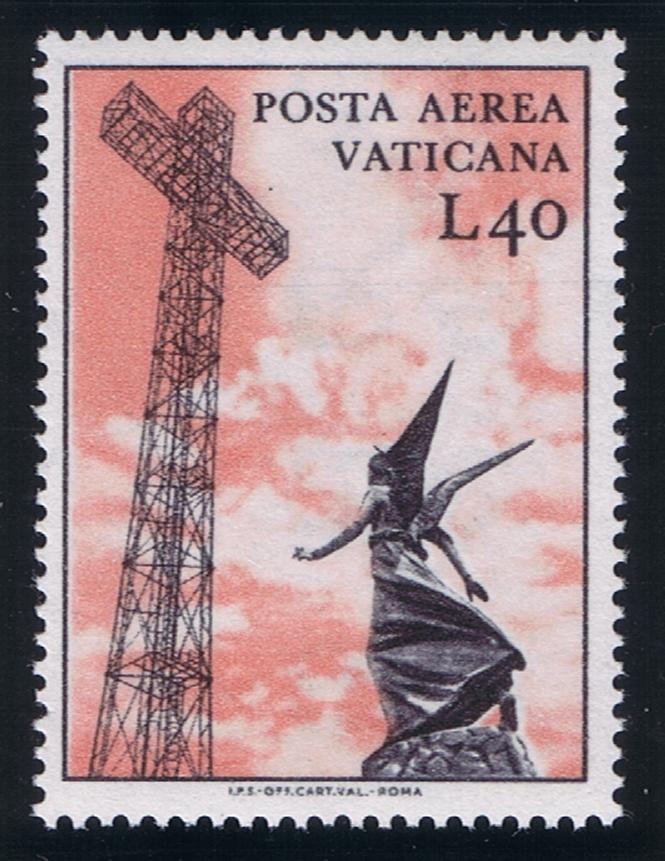

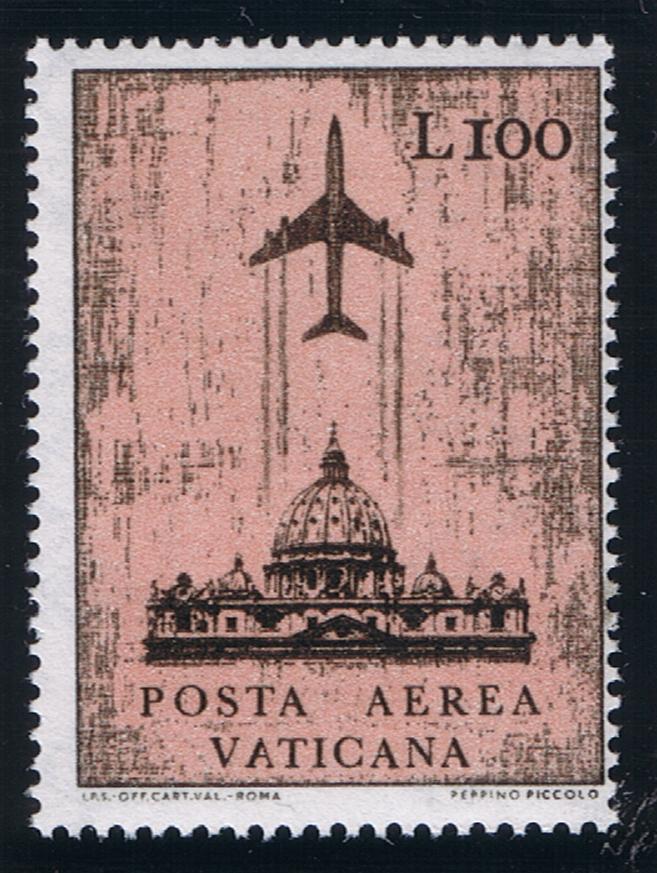
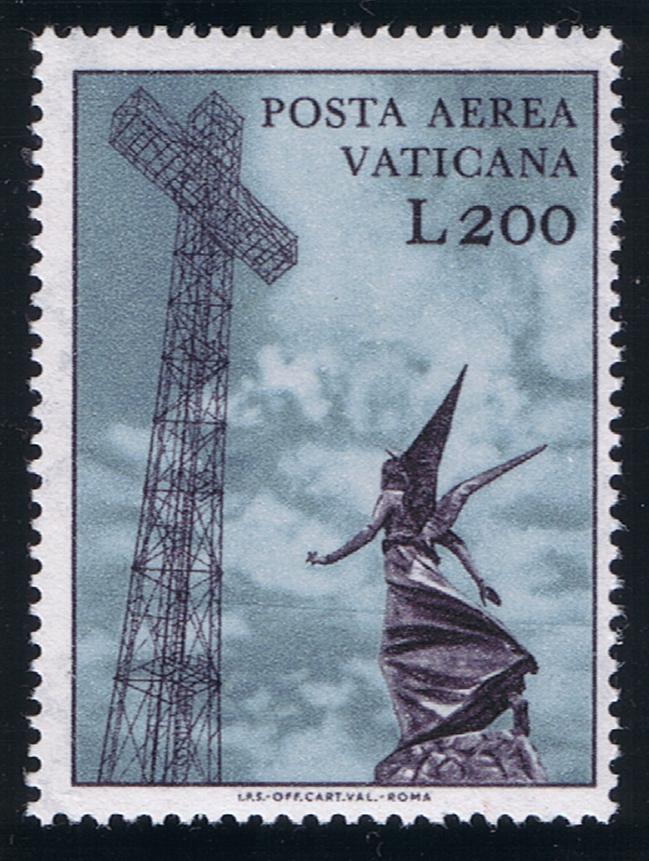
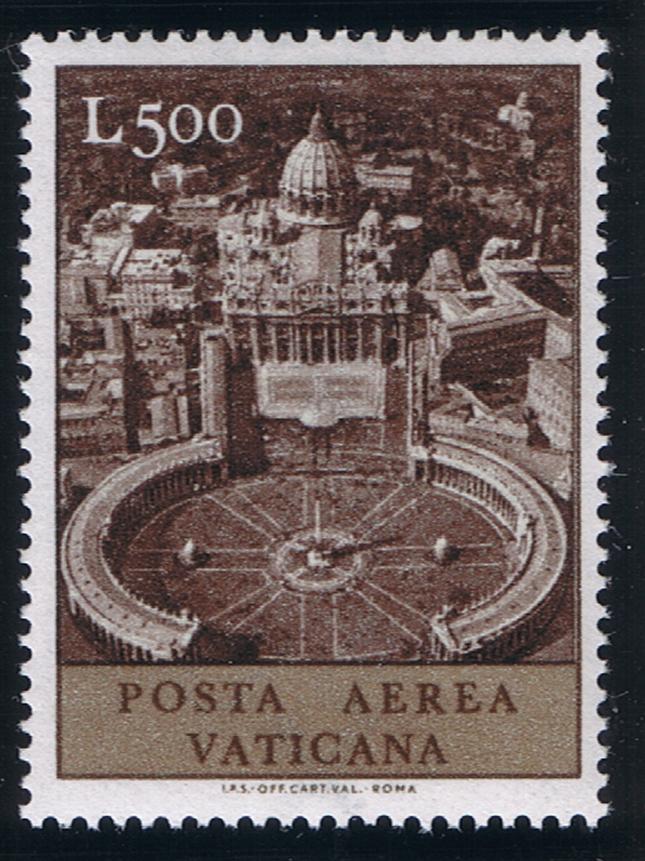
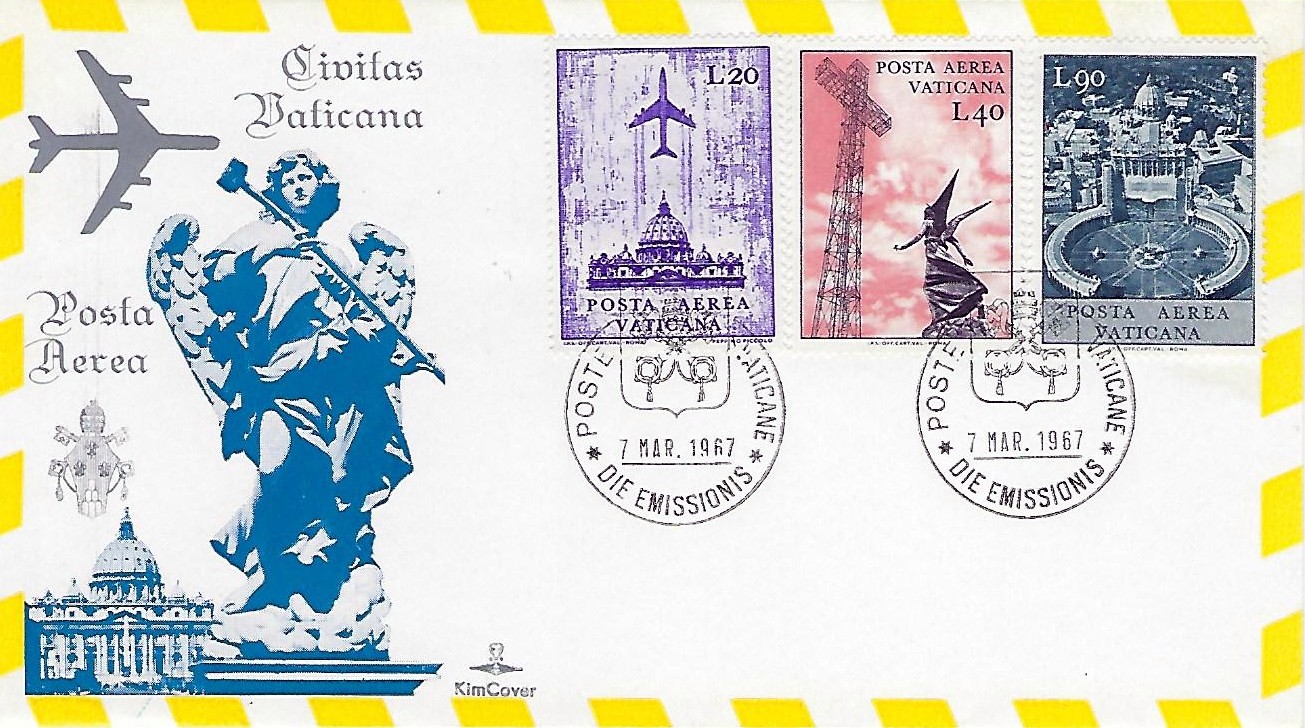



XXXIX INTERNATIONAL EUCHARISTIC CONGRESS
BOGOTA. COLUMBIA, S.A.
At 4:00 A.M., August 22, 1968, Pope Paul left Castel Gondolfo in the Alban Hills south of Rome and made the 40-minute drive to the Fiumicino Airport at Rome. After taking leave of prelates and government dignitaries, he boarded a Columbia Avianca Airline 707 jet, accompanied by his suite and 50 newsmen. The flight took off at 5:35 A.M. and as the Plane passed over Spain, Portugal and Venezuela good will messages and blessings were sent to the heads of state in each country.
The pope emerged from the private apartment prepared for him and within the first half hour of flight shook hands with his fellow passengers. An hour later with his secretary, Msgr. Pasquale Macchi, he toured the plane more leisurely and had a few words with each person. The rest of the flight he worked in a study, had a substantial lunch, and conferred with his staff. The jet touched down at El Dorado Airport, Bogota, 10:24 A.M. local time, approximately 12 hours after takeoff, about 13 hours from Castel Gondolfo.
On his arrival the bells of the Cathedral of Bogota and all the churches were rung and factory sirens sounded. When he stepped from the plane, clad in a white cassock and zuchetta with a red cane, he kissed the ground of South America, actually the concrete runway of the airport. President Carlos Lieras Restrepo of Columbia greeted him in the name of all Latin America "because of our common religious faith in Latin America". in reply to this welcoming address Pope Paul VI asked God to increase "the sentiments of brotherhood and harmonious collaboration toward a constant peaceful living together, and inspire and consolidate the forces for an ordered progress" which should "reach every family and class in conformity with the principles of justice and Christian Charity". He was given a 22-gun salute.
This 12-hour flight of some 6500 miles brought Paul VI on the first Papal Visit in the history of Latin America. A tumultuous welcome awaited him along the 8-mile route from the airport to the Cathedral of Bogota. Here he was greeted by some 5000 Latin American prelates, clergy and religious The jam at the Cathedral of Santa Fe de Bogota was so great that colum-bian security was unable to bring the Pope to the altar where he was supposed to kneel in prayer.
They proceeded to the open-air site of the 39th International Eucharistic Congress. (Cf. Life Magazine, Sent.6, 1968, pn.64-67 for Pictures) Here he ordained some 161 Latin Americans to the priesthood, others to the diaconate, dispensing in some cases from the minimum age of 24 years. This event had been scheduled for the Cathedral, to emphasize the shortage of priests and clergy in Latin America. At the Cathedral he had exhorted the clergy to increase their work dedicated "to the parish, the youth, the sick, the poor, the children and the working people". After the jam at the Cathedral he went to the residence of the Papal Nuncio to rest, and in the afternoon (Thursday, August 22) proceeded to the open-air site of the Eucharistic congress for the ordinations. Peasants from all over Columbia wearing colorful Ponchos and capes and pig-tailed Indians in their saucer hats showered the Pone with confetti as they greeted him along the road to the Congress.
On his arrival Pope Paul was quoted as saying he was well aware that Latin America was undergoing a truly historic crisis of political unrest and economic and social tension. The press strongly intimated that the main reason for Pope Paul's visit was to attempt a reconciliation between conservative churchmen. of South America and the so-called radical clergy who were said to advocate a violent social revolution, due to their interpretation of an earlier encyclical of Pope Paul of 1968. In all his talks the Pope placed himself squarely in the middle, strongly advising social reform immediately, and strongly opposing violence in its accomplishment. Presidents of the United States for the past decade or more have been advising land reforms and equitable distribution of wealth in Latin America, since land and wealth are in the hands of a comparative few. They saw the ferment building up to accomplish this by any means. Pope Paul was urging a peaceful solution should be sought immediately.
On Friday, Aug.23 in an open field near Mosguera, 18 miles west of Bogota, the Pope addressed an assembly of 35,000 Columbian peasants. He called on the rich to accept agrarian reform and to institute more equitable taxes which would benefit the poor, especially the backward peasants of South America. He directed a plea to the richer countries of the world to be generous with foreign aid and commercial relations with these developing countries. Poverty and social injustice cannot be tolerated and need an immediate speedy remedy. He exhorted the peasants not to resort to violence and revolution to accomplish these reforms, as they are contrary to the Christian spirit, and which would delay instead of advance their social uplifting. Pope Paul blessed a new 300-kilowatt radio transmitter before this address. On the platform with him were 22 married couples in typical peasant dress representing the countries of South America and Jamaica. His address had pointed out the need to place the financial burdens on the owners of vast estates, many absentee landlords.
On Friday afternoon at the grounds of the Eucharistic Congress and addressed himself to business, labor and student leaders. He repeated that he was aware that the continent was in a crisis of political unrest and economic and social tension, but warned against violence in the resolving of the crisis.
On Saturday, Aug. 24, he pleaded with the Catholic world to stand firm in obeying the church's stand on birth control, as expounded in his encyclical. His return flight on Saturday was scheduled for a stop at Bermuda for refueling, because it was not possible to put enough fuel aboard at Bogota for a non-stop return flight, due to the altitude. On the stopover at Bermuda, Pope Paul was greeted at the airport by the Governor-General of Bermuda, Lord Martonmare, and by Most Rev. Bernard Murphy, C.P. Bishop of Hamilton. It is believed to be the first time a Pope set foot on British soil, Bermuda being a Crown Colony. Pope Paul slept about five hours on the return flight, then visited with his staff and newsmen, expressing deep concern about the Soviet invasion of Czechoslovakia. At the Fiumicino Airport, he was greeted by Premier Giovanni Leone of Italy, by Angelo Card. Dell'Acaua, and the Vatican Secretary of State, Amleto Card. Cicognani. The road back to Castel Gondolfo was lined with well-wishers. From the balcony at Castel Gondolfo, he enthused the assembled crowd on devotion to the Holy Eucharist of the Latin American peasants and said they deserved aid, being poor but laborious.
Three stamps were issued on August 22, 1968, the day of Pope Paul VI's departure to the 39th International Eucharistic Congress At Bogota. It is suggested that their postal usage was intended as follows:-L.25 to frank the rate for picture postcards with no more than five words sent within the limits of Italy; L.55 is the rate for a postcard with correspondence sent outside the limits of Italy; L.220 is the rate for a registered letter of no more than 20 grams sent outside Italy.
The L.25 shows a portrait of Pope Paul VI, source unknown, probably a photograph. The monstrance or ostensorium on the L.55 is by Mrs. Andreina Grassellini, after the central design of the Disputa Del Sar-ramento by Raphael in the Camera della Segnatura, Vatican Palace (Cf. Vatican Notes, Vol. XII, #4, p.10). The L.220 shows a physical map of South America, with the city of Bogota alone indicated, taken from one of the frescoes by Francesco Bencivegna, which decorate the rooms leading to the Office of the Secretary of State in the Vatican Palace. The Vinculum Caritatis at the top of the L.25 and L.220 means "The Bond Of Charity). The FD cancel in use for the past few years is used on FDCs with a three-line slogan cancel at the left enclosed in a rectangle of wavy lines: PAULUS VI P.M.7EUCHARISTICO EX OMNIBUS GENTIBUS/CONVENTUI IN COLUMBIA INTEREST. (Pope Paul VI took part in the Eucharistic Congress of All Peoples in Columbia - or Pope Paul VI took part in the International Eucharistic Congress in Columbia).
Technical Details:
Scott Catalogue - 461 - 463
Date Issued - 22 August 1968
Face Value - 25 l, 55 l, 220 l
Perforations - 14
Printer - The Italian State Printing Works
(Author - Unknown, From Vatican Notes Volume XVIII, Number 3, November - December 1968, Pages 3-5)




THE VATICAN CHRISTMAS ISSUE OF 1968
The October 5, 1968, issue of IL COLLEZIONISTA reports that the Vatican Christmas issue, due in early November, 1968, will probably show the Miraculous Statue of the Infant Jesus of Prague. When this issue of Vatican Notes reaches you, you will have the stamps in your collection.
The original statue of the Infant Jesus of Prague was a 19-inch wax statue brought from Spain by Princess Manriquez as a gift to her daughter, Polyxena, when she married Lord Popel of Lobkovice. After the death of her husband in 1628, Polyxena presented this family treasure to the Carmelite monastery of Our Lady of Victory, where it is still preserved, though the church was renamed Our Lady of the Infant Jesus of Prague by Archbishop Beran of Prague prior to his deposition from office and subsequent arrest by the communists on March 10, 1951.
The statue represents the Infant Christ as King, head crowned, clothed in royal robes, imperial orb in His left hand, right hand raised in blessing. In 1650, Count Bernard of the House of Martinice sought to succeed his father as regent of Bohemia. Though another had been chosen, he asked that a novena of Masses be offered to the Infant Jesus of Prague, and Count Bernard was appointed regent, on January 1, 1651. Bernard arranged for the statue to be solemnly crowned at a Pontifical Mass. Prayers to the Infant Jesus brought to Bernard appointment as a Knight of the Golden Fleece by Philip IV of Spain, and a small insignia of this honor was placed on the statue. The two jeweled ring was made from the wedding rings of Sir William la Haye and his wife, May 29, 1738, as a votive offering from this first cavalier of the Prince-Bishop of Prague, for the sudden cure of their infant daughter. The statue was first carried in procession at the order of Count Bernard, to all the major churches of Prague. The custom of changing the robes began in 1713, and in 1948 there were 39 changes, including one embroidered by Empress Maria Theresa. During the Thirty Years War, the Carmelites fled Prague. Seven years later they returned, and Fr. Cyril, who had a great devotion to the Infant, found the statue minus its arms in the ruins of the convent. The arms were found and the statue was repaired.
Devotion to the Infant Jesus of Prague began to spread9 due greatly to the chronicles of the statue written by Prior Emmerich in 1737. The Carmelite General Chapter ordered likenesses to be made, touched to the original, and to be sent to all Carmelite houses, to be honored on the 25th of each month. Pope Gregory XIV sanctioned devotion to the Infant Jesus of Prague in 1747. In 1750 a number of statues were sent to Portugal, the first copy going to the Carmelite house in Barcelona, Spain.
Germany records devotion to the Infant of Prague in 1636. Joseph II of Austria suppressed 388 monasteries and seized the votive offerings at the shrine of the Infant Jesus, to be sold at auction. Brussels, Belgium, enshrines its first statue of the Infant in 1891. The devotion to the Infant Jesus of Prague was well known in Ireland before 1900, and in Canada in the early 1890s. A shrine to the Infant Jesus of Prague was set up in New York in the church of Sta. Cyril and Methodius in 1886 by the Redemptorist, Fr. Hornung. In the twentieth century, this devotion has spread to all of South America and Trinidad. In 1900 a statue was brought to India.
This is not devotion to a statue, but devotion to the Infant Jesus Christ, symbolized by a statue. It is a continuation throughout the year of the love shown to the Infant Jesus of Bethlehem at Christmas.
Technical Details:
Scott Catalogue - 464 - 466
Date Issued - 28 November 1968
Face Value - 20 l, 50 l, 250 l
Perforations - 13.5x14
Printer - The Italian State Printing Works
(Author - Unknown, From Vatican Notes Volume XVII, Number 4, January - February 1969, Page 6)


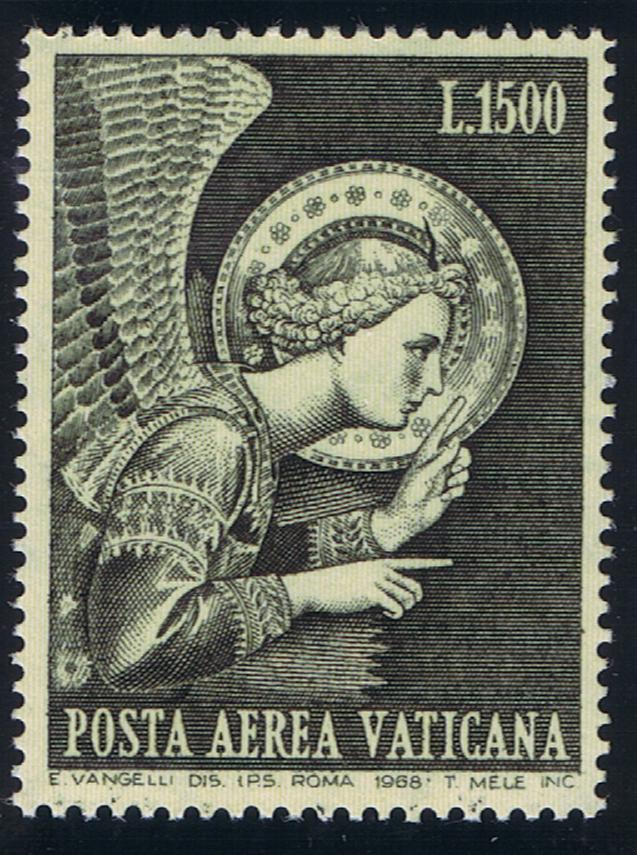











EASTER STAMPS 1969
There are thirty paintings of Fra Angelico in the cloisters and chapter house of the San Marco Convent in Florence, Italy. With its seizure by the Italian Government c.1866, it was converted into a National Museum, as was Monte Casino. In the cloister one of the six Fra Angelico frescoes is a Resurrection scene, expressive of the reward of the monastic life. The Resurrection was treated by Fra Angelico in two other paintings, one in a dormitory cell of San "arco with Mary Magdalen peering into the empty tomb at the scene of the Resurrection, and the other a predella in London in five compartments, showing Christ with the banner of resurrection surrounded by angels and saints.
The Dominicans had been expelled from their convent in Fiesole in 1409 because they remained loyal to Pope Gregory XII. The Council of Constance had healed the schism, which had brought about their expulsion, and they returned to Fiesole in 1418. Cosimo de Medici had rebuilt the Convent of San Marco and Dominicans from Fiesole occupied it in 1436, and Fra Angelico was asked to decorate the walls with frescoes. He painted the Resurrection scene, from which the design of these stamps are taken, in the cloister of San Marco, together with his famous Crucifixion, complimentary pictures of fundamental truths of the Christian Faith. Christians believe that Christ was the Son of God become man, and he was put to death in his human nature on Good Friday by crucifixion and rose from the dead to life on Easter Sunday. The two facts,- Christ died and Christ rose from the dead to life (Resurrection) have been offered as proof of the divinity of Christ since the days of St. Peter (Acts 11.22-24) on Pentecost, fifty days after Easter in the city of Jerusalem, where all this happened.
The foretelling of His resurrection by Christ had been noted by the Jewish leaders when Chrsit responded to their request for a sign (John 11,19) "Destroy this temple and in three days I will raise it up" and was brought against him in His trial (Mat. 26, 60-61) and when they went to Pilate asking for a guard to be placed over the tomb of Christ (Mat. 28, 62-66) "Sir, we remember that this seducer said, while he was still alive: After three days I will rise again". Peter recalled all this to them in the Temple at Jerusalem (Acts ITI,13-15)"--you indeed delivered up and denied (Jesus) before the face of Pilate, when he judged he should be released. But you denied the Holy One and the Just and desired a murderer to be granted unto you. But the author of life you killed, whom God hath raised up from the dead, of which we are witnesses."
Collezionista of March 22, 1969, state that the design is from the Florence fresco, reproduced, ALTHOUGH APPROXIMATELY on the stamp.
The stamps were printed on surface-colored paper and printed in red (L.20), preen (L,90) and blue (L.180), issued on March 6, 1969. RESURRECTIO D.N.I. CHRISTI translates "The Resurrection of Our Lord Jesus Christ." Stamps at hand are perforated 13 1/2 x 14 and are watermarked crossed keys. Below the stamp we read: "I.P.S. Roma 1969..... Dall"Angelico - E Donnini Inc." The buff surface color also shows in lines in the pane margin.
Technical Details:
Scott Catalogue - 467 - 469
Date Issued - 06 March 1969
Face Value - 20 l, 90 l, 180 l
Perforations - 13.5x14
Printer - The Italian State Printing Works
(Author - Unknown, From Vatican Notes Volume XVIII, Number 1, July - August 1969, Page 1)




The Tenth Anniversary of CEPT
Beginning about Sept. 15, 1956, the countries which now form the European Common Market began to promote the "Idea Europa" by issuing postage stamps which had the same design, though different values, for each country: Belgium, France, Italy, Luxembourg, the Netherlands and West Germany. These countries for the most part have followed this same procedure each succeeding year. The designs were chosen from competition. In 1956 the design was by Daniel Gonzague of France. The following year it was by C. Mancioli of Italy (1957), followed in 1958 by a design of Andre van der Vossen of Holland. The 1959 design was by Walter Brudi.
In 1959, nineteen of the following countries met for the first CEPT (Conference on European Posts and Telecommunications), which included the six Common Market countries mentioned above as well as Cyprus, Denmark, Finland, Great Britain, Greece, Iceland, Ireland, Liechtenstein, Norway, Portugal, San Marino, Spain, Sweden, and Switzerland. The design for the Europa stamp for 1960 was by Pentti Rahikaninen of Finland, incorporating into the Europa design for the first time "CEPT". The design was used that year by most of the countries, although some countries used their own designs, such as Great Britain and San Marino.
The countries which used the common design each year had as their designers: in 1961 Theo Kupershoek of Holland; in 1962 L. Weyer; in 1963 A. Holm; in 1964 G. Bentemps; in 1965 H. Karisson; in 1966 G. and I. Bender. The designers for 1967 and 1968 have not been identified by your Editor.
The design used by Vatican is common with other countries for 1969 and is by A. Ponsiglione, Luigi Gasbara and Giorgio Belli. Luigi Gasbarra has been employed by the I.P.S. of Italy for some time designing Italian stamps, as will be noted by those who have the article on Vatican designers from Linn's Special Vatican Edition which started on Nov. 29, 1965. For Vatican he cooperated with Renato Mura and the eminent Edmondo Pizzi for the stamps commemorating St. Vincent de Paul and St. Louise de Marilec (295-7) in 1960.
A new First Day Cancellation made its appearance with these scamps (April 28, 1969), a double circle, with Europa and Citta del Vatican between the circles at the top and bottom respectively. Within the inner circle is a CEPT design at the top, while at the bottom is the date of issue "28-1V-69" above a single line, while below the line is "Prima Die" (First Day).
The stamps at hand are the L.50 gray and brown, the L.90 red and brown, the L.130 green and brown. They are perforated 14 x 14, printed on paper watermarked crossed keys in horizontal format,
Technical Details:
Scott Catalogue - 470 - 472
Date Issued - 28 April 1969
Face Value - 50 l, 90l, 130l
Perforations - 13
Printer - The Italian State Printing Works
(Author - Unknown, From Vatican Notes Volume XVIII, Number 1, July - August 1969, Page 13)




The Visit Of Pope Paul VI To Uganda Africa
Press reports of the visit of Pope Paul VI to Kampala, Uganda, were so concerned with speculation about his peace efforts with Nigeria and Uganda that the events of his visit to consecrate the shrine to the Martyrs of Uganda have been reported in a sketchy and disjointed fashion. Pope Paul was met at the Entebbe Airport by the heads of six African nations. Pres. Milton Obote of Uganda, an Episcopalian, greeted Pope Paul and accompanied him on the 21-mile trip by auto to Kampala. An estimated crowd of 150,000 in this country of 8 million people, more than a third of whom are Catholic, lined the route. They varied from half-naked tribesmen with monkey headdress to those wearing T-shirts with the image of Pope Paul on them. Pres. Obote remarked We greet your Holiness with all our hearts, with songs of jubilation and with throbbing drums." The President stayed at the Pope's side for all major public appearances and for private meetings with delegations from Nigeria and Biafra.
During his visit, he attended the Symposium of African Bishops and consecrated twelve more African bishops at an outdoor Mass concelebrated by the assembled African Hierarchy. He visited nuns and later told of their dancing with enthusiasm, African style. He met the people of Kampala and was impressed with the African youth.
The shrine of the 23 Anglican Martyrs is on the actual site of most of the martyrdoms at Namuongo, 12 miles from Kampala. Here the martyrdoms were enacted before Pope Paul and the Anglican Archbishop of Uganda, Ruanda and Burundi, Archbishop Erica Sablete. Both spoke to the assembly, and His Holiness left a silver wreath at the shrine and presented a crucifix to the Archbishop. The shrine is in a sloping field where the martrydons of 1885-87 took place.
Pope Paul completed his trip by consecrating the shrine to the 22 Catholic Martyrs at Kampala before a crowd of 10,000. After Mass, he baptized 22 young Ugandan boys and girls at a nearby pond. Later at the Entebbe Airport, he announced the establishment of two funds; one of $200,000.00 for the training of catechists for Africa, and an unspecified sum (estimated by the press at one million dollars) for human development in Africa. Aboard an East African Airways jet, he departed and touched down at Rome, Ciampino Airport early August 3 (6.10 Eastern Daylight Time, P.M.) after a 52-hour trip. Greeted by a delegation from the Italian Government, he spoke of his journey as "a very beautiful and happy experience." He drove to Castel Gandolfo, where later he spoke from the balcony in glowing terms of his trip to Africa.
Though meeting with several Nigerian and Biafran delegations, no apparent progress was made toward peace. The Biafrans expressed willingness. The Nigerians did not have the authority to negotiate.
The stamps commemorating this journey were designed by Professor Lino Bianchi Barriviera, teacher of engraving at the Academy of Fine Arts at Rome, a graphic component of the Council of Art of the General Management of the Italian State. He is also the author of two other Vatican stamp designs for the opening of the II Vatican Council (349 and 352) issued October 30, 1962
The L.25 stamp shows Pope Paul Vi with a group of African youth. The L.55 stamp shows Pope Paul with the African Episcopate in vestments. The L.250 shows the continent of Africa with Kampala clearly marked. In the lower left is an olive branch, and what has been identified as both a compass rose and as a star. The questionable object is most likely a star. The symbolism would be that the star indicates heaven, the reward of martyrs, symbolized by the olive branch. Hindsight could also make the olive branch symbolize the peace that Pope Paul sought to bring about between Nigeria and Biafra.
We refer you to the stamps issued under Pope Paul VI on March 16, 1965, Commemorating the Canonization of the Uganda Martyrs, Scott #404-409.
Technical Details:
Scott Catalogue - 473 - 475
Date Issued - 31 July 1969
Face Value - 25 l, 55 l, 250 l
Perforations - 13.5x14
Printer - The Italian State Printing Works
(Author - Unknown, From Vatican Notes Volume XVIII, Number 3, November - December 1969, Pages 1-2)








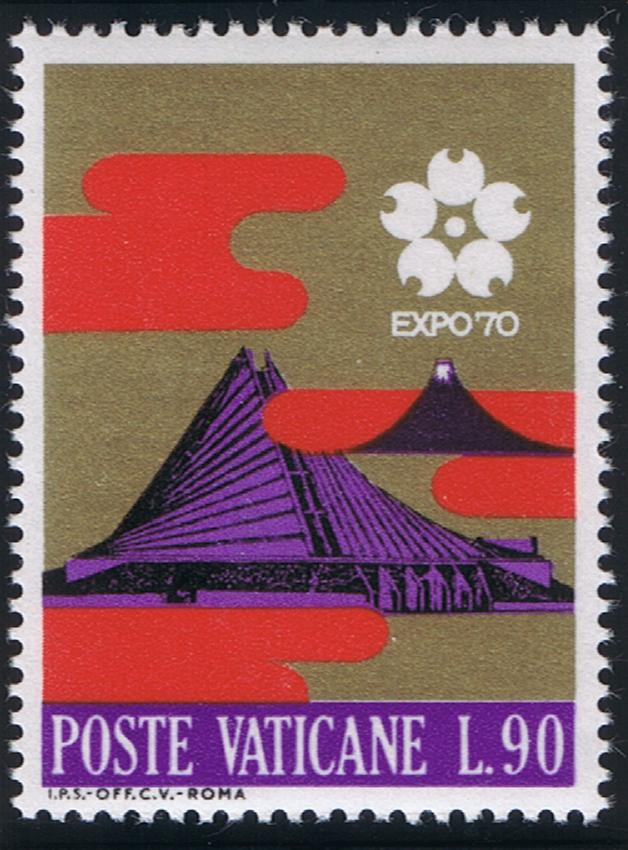








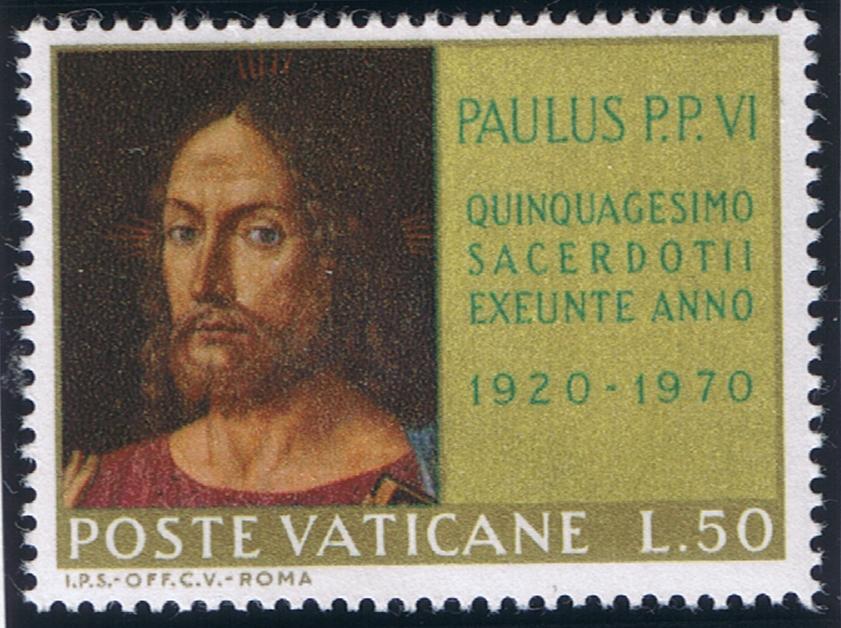



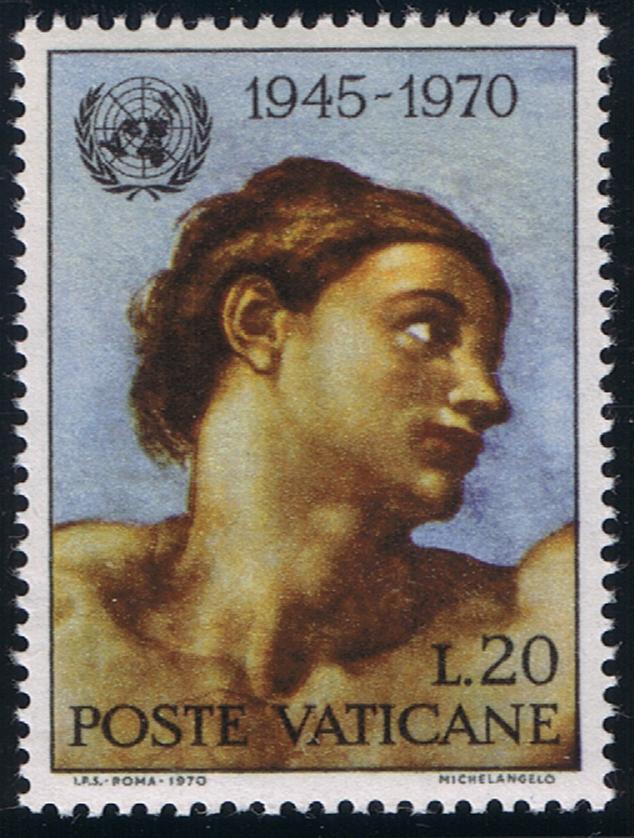

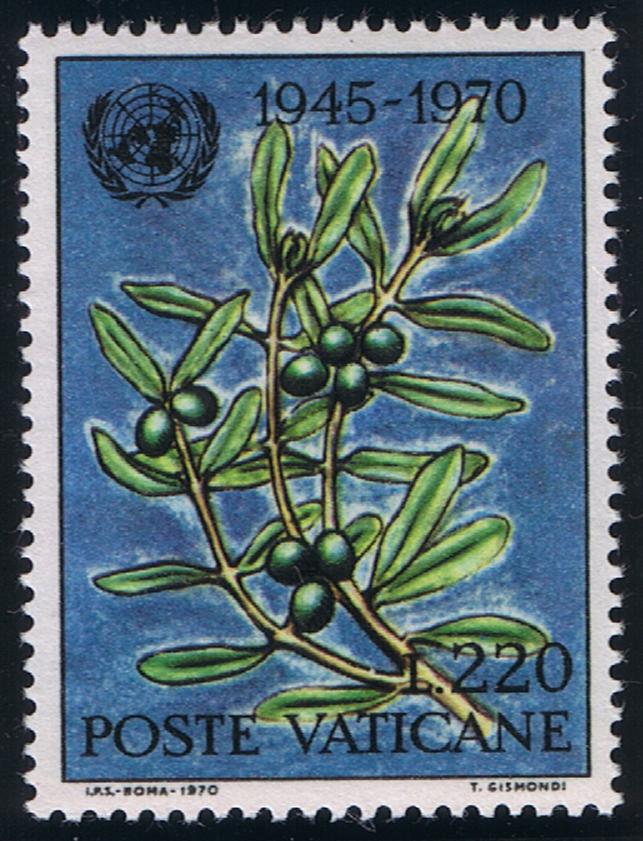
25TH ANNIVERSARY OF THE FOUNDING OF THE UNITED NATIONS
Vatican issued three stamps Oct. 8, 1970, commemorating the 25th anniversary of the founding of the United Nations. L.20 is from Michaelangelo's "Creation of Adam" on the ceiling of the Sistine Chapel. L.90 is the head of Eve from the "Fall of Adam and Eve" by Michaelangelo on the ceiling of the Sistine Chapel. (Cf. Vatican Notes Vo. XV, 01, pp.2-4). These two subjects signify the unity of the human race in its common origin, Adam and Eve. L. 220, an olive branch, symbolic of peace, the purpose of the UN. A special FD cancel consists of a single circle with ONU (UN) at the top with the UN symbol, the dates 1945 1970 indicating the 25th anniversary. The date 8-X-70 indicates the date of the First Day (prima die), and Poste Citta Del Vaticano, indicates the country of origin.
On Oct. 24, 1945, in San Francisco, the following nations signed the UN Charter: Argentina, Brazil, Byelorussian SSR, Chile, China, Cuba, Czechoslovakia, Denmark, Dominican Rep., France, Haiti, Iran, Lebanon, Luxembourg, New Zealand, Nicaragua, Paraguay, Philippines, Poland, Saudi Arabia, Syria, Turkey, Ukrainian SSR, USSR, United Arab Rep., United Kingdom, USA, and Yugoslavia. Later in 1945 other signatories were: Australia, Belgium, Bolivia, Canada, Colombia, Costa Rica, Ecuador, Ethiopia, Greece, Guatemala, India, Liberia, Mexico, Netherlands, Norway, Panama, Peru, South Africa, Uruguay and Venezuela. As of this date, there are 126 members of the UN.
The history of development of the UN is as follows. On Aug. 14, 1941, the United States and the United Kingdom agreed on basic principles called the Atlantic Charter. Twenty-six nations opposing the Axis in WW II accepted the Atlantic Charter, using the words "United Nations" on Jan. 1. 1942. In the Moscow Declaration of Oct. 30, 1943, the USSR, China, the USA and the UK agreed to set up an international organization to keep world peace. At Dunbarton Oaks Conference, the same four nations outlined preliminary proposals for such an organization, Aug-Oct.. 1944. Fifty nations attended the San Francisco Conference, April-June 1945, drafting and adopting the UN Charter on June 26. Poland, unable to attend, signed later, becoming a charter member. On Oct. 24, 1945, a majority of the nations ratified the Charter, so Oct. 24 is celebrated as United Nations Day.
The Charter sets as purposes: to maintain world peace and security; to develop friendly relations between nations; to achieve world cooperation in solving international economic, social, cultural or humanitarian problems; encourage respect for human rights and fundamental freedoms for all; to be a center for the actions of nations to attain these common ends.
Seven principles bind all signatories:- All members are sovereign and equal. They fulfill UN obligations in good faith. They will settle international disputes peacefully. They will refrain from the threat or use of force. They will give every assistance to the UN. The UN will assure that non-UN members act in accord with the Charter. The UN will not interfere with the internal affairs of any country.
To implement the purposes of the United Nations, six organizations were formed: The General Assembly; the Security Council; the Economic and Social Council; the Trusteeship Council; the International Court of Justice; the Secretariat.
The General Assembly: Can discuss any questions mentioned in the UN Charter or related to the powers of functions of any of the UN organs. Each nation has one vote, two-thirds required to pass a measure.
The Security Council: responsible for keeping international peace. Five permanent members (China, France, USSR, USA and UK) with ten non-permanent members, elected by the General Assembly for two: years, each have one vote, nine needed to pass a measure.
The Economic and Social Council: directs and coordinates economic and social work of the UN and its related agencies. Vote by majority.
The Trusteeship Council: administers and supervises Territories placed under it.. Terms have been approved by the General Assembly; or in strategic areas, by the Security Council. Composed of members administering Trust Territories; permanent members of the Security Council not administering such territories, and as many members, elected for three years, as the General Assembly thinks necessary.
The International Court of Justice: sitting at the Hague, Netherlands, judges inter-national matters referred to it.
The Secretariat: performs the administrative functions of the UN, headed by the Secretary-General, who is appointed by the General Assembly on the recommendation of the Security Council. (Trygve Lie, Dag Hammarskjold, U Thant).
Headquarters of some UN Agencies:-Geneva, Switzerland:- Un Conference on Trade Development (UNCTAD); International Labor Organization (ILO); World Health Organization (WHOI; International Telecommunications Union (ITU); World Meteorological Organization (WMO); General Agreement on Tariffs and Trade (GATT).
Berne, Switzerland: Universal Postal Union (UPU).
Vienna, Austria: International Atomic Energy Commission (LAEA).
Rome, Italy: Food and Agricultural Organization (FAO). Paris, France: U.1 Educational, Scientific and Cultural Organization (UNESCO). Montreal, Canada: International Civil Aviation Organization (ICAO). London, U.K.: Inter-Governmental Maritime Consultative Organization (IMCO)
Washington, D.C.: International Bank for Reconstruction and Development (BANK); International Finance Corporation (IFC); International Development Association (IDA), International Monetary Fund (FUND).
(Author - Unknown, From Vatican Notes Volume XIX, Number 4, January - February 1971, Pages 2-3)












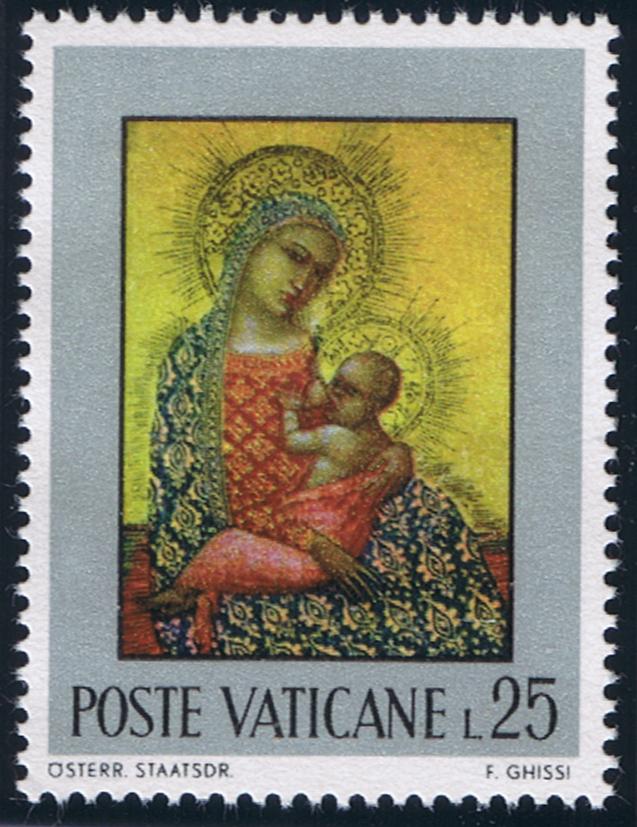

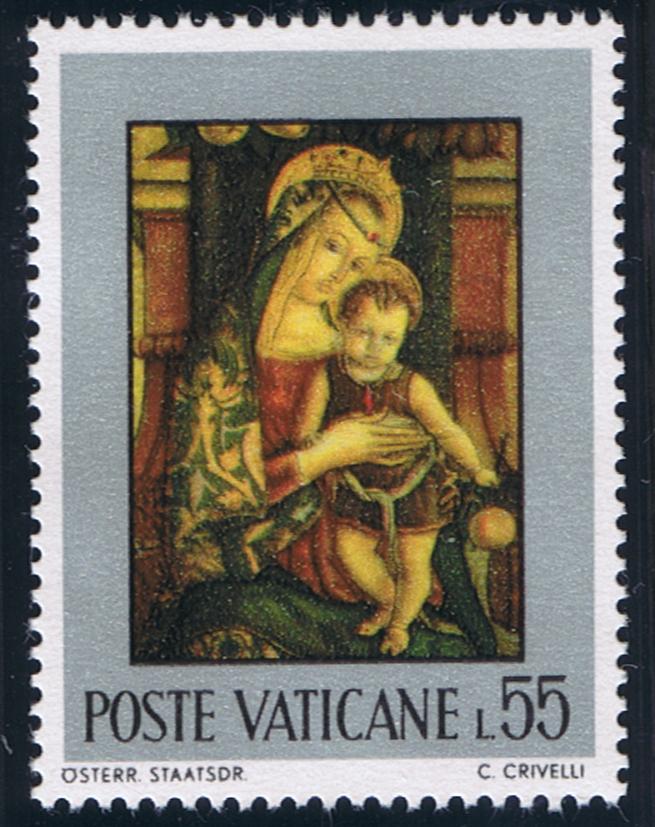
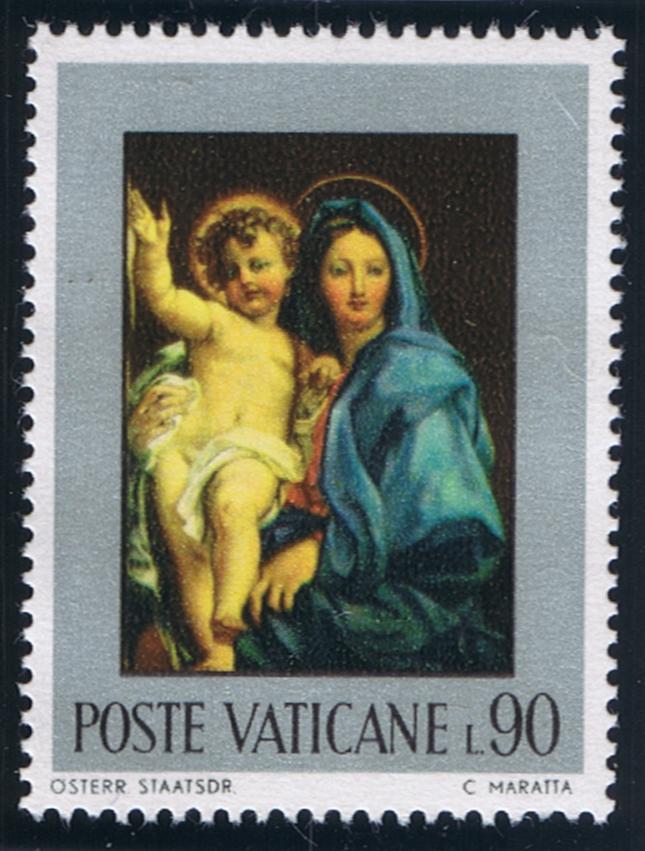
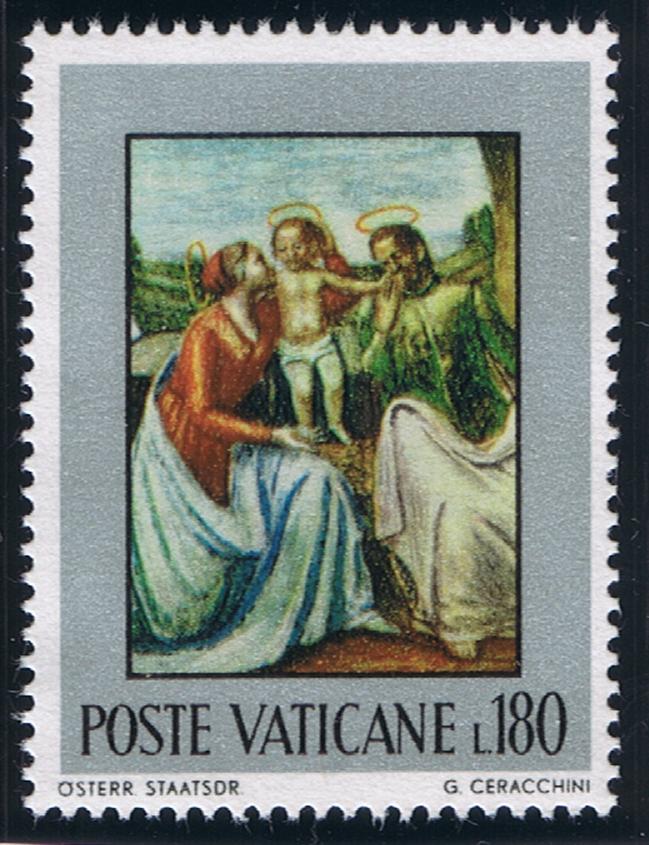
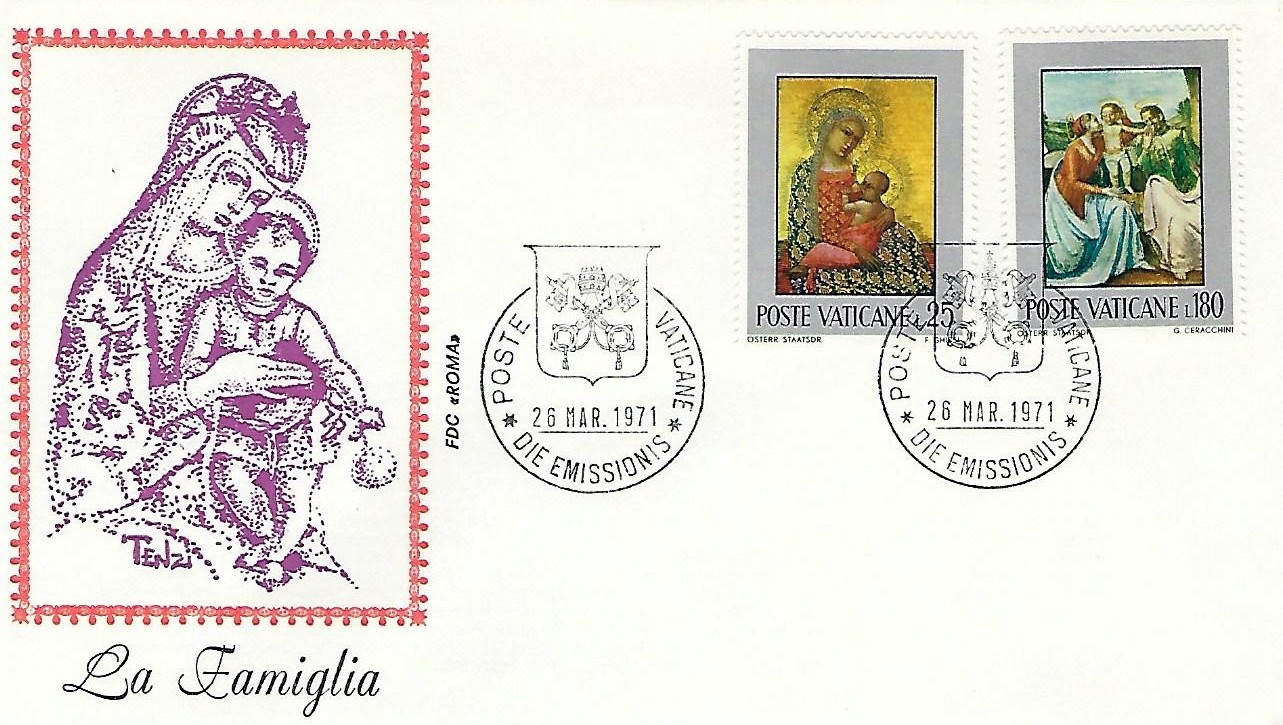










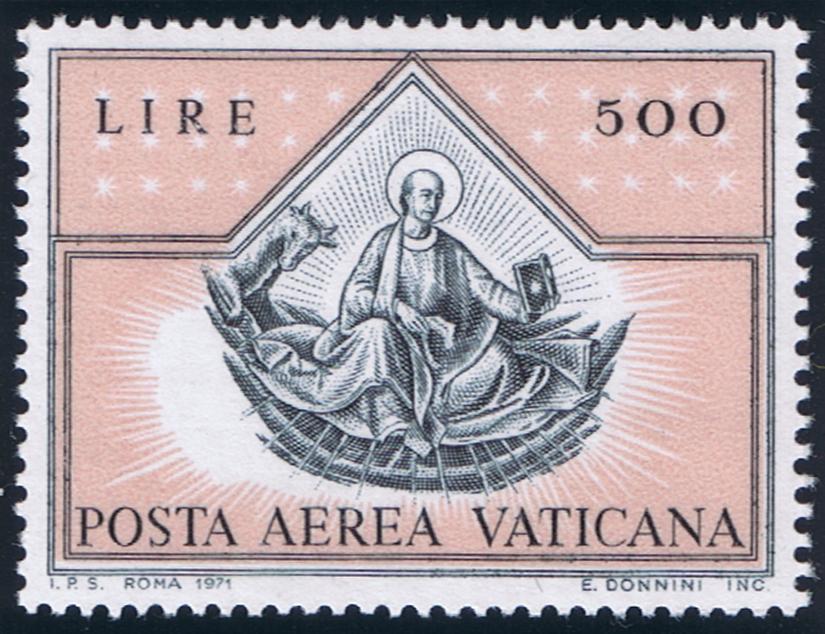









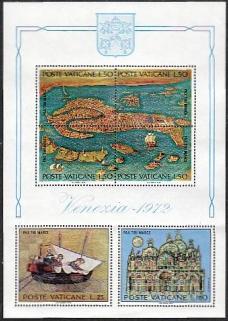

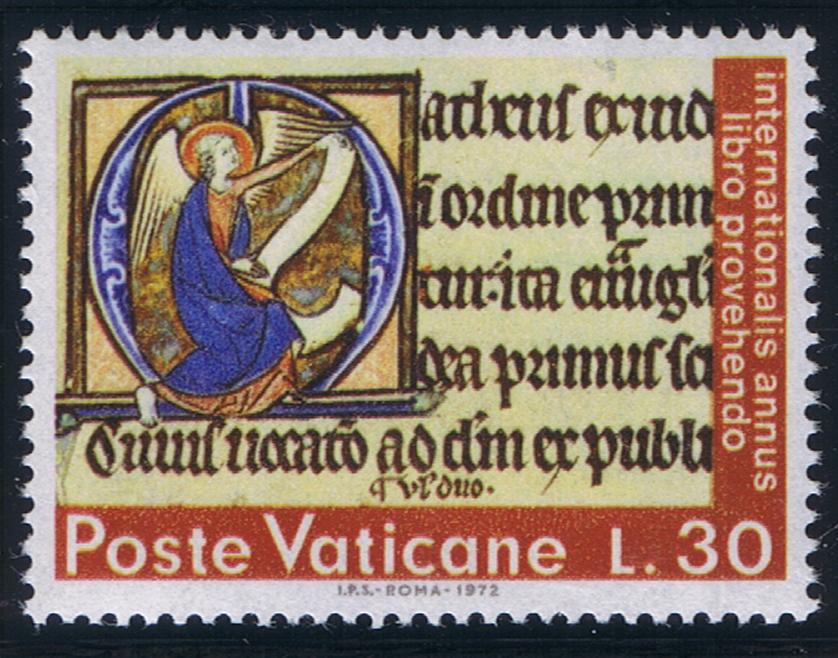
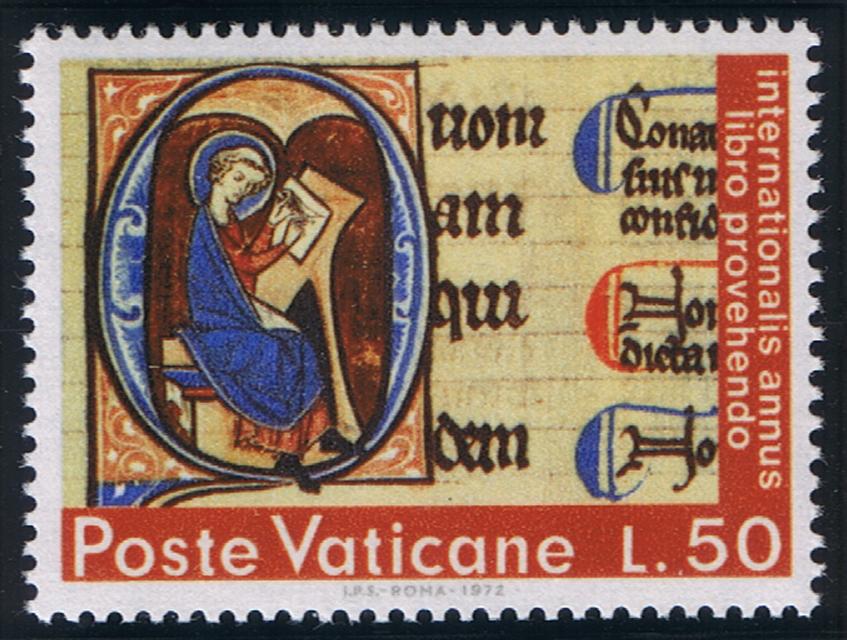
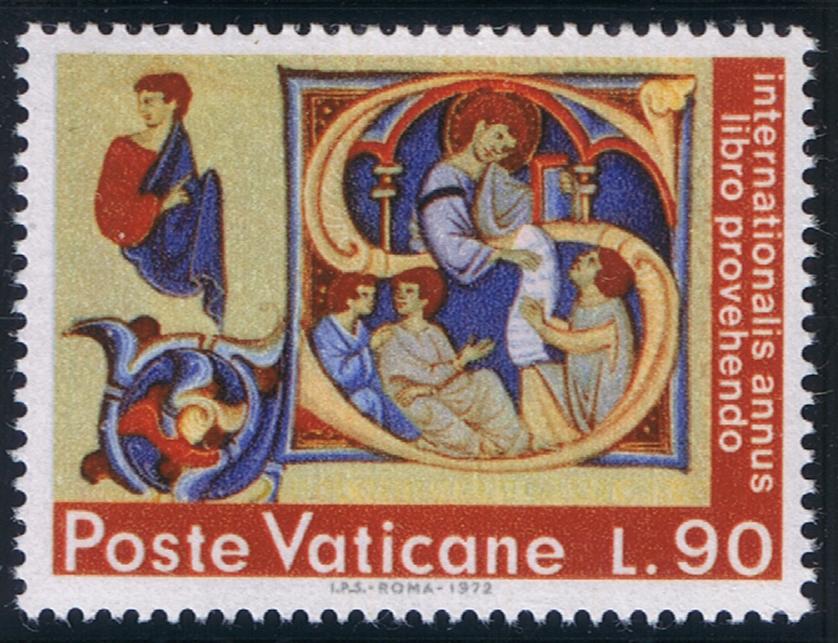
















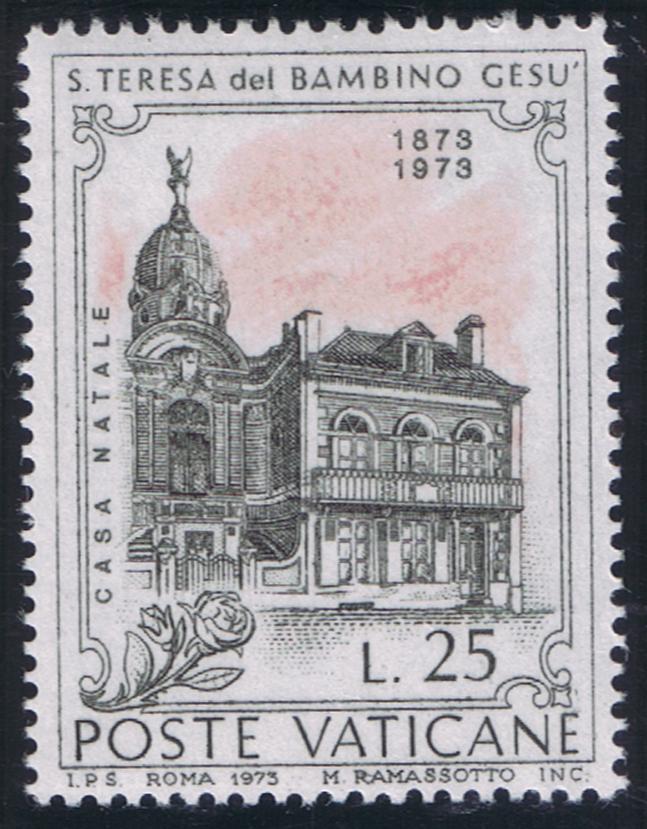
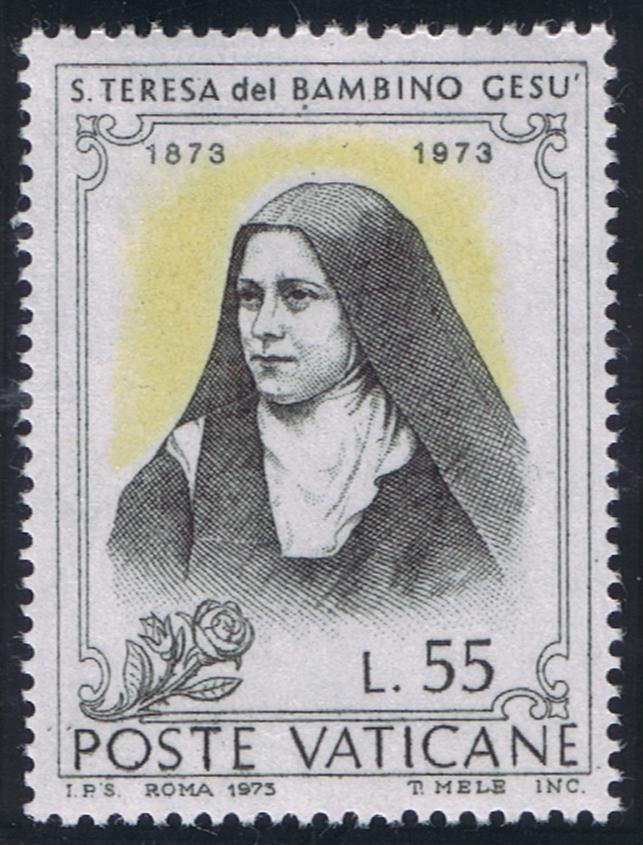
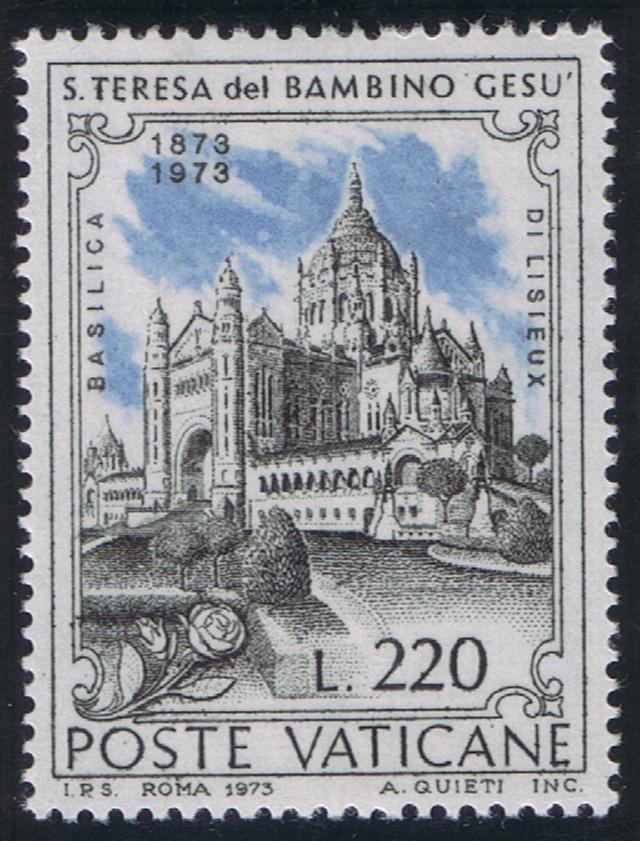
St. Teresa Of The Infant Jesus
St. Teresa of the Child Jesus, also known as St. Teresa or Therese of Lisieux was born January 2, 1873, at Alencon, France, to Louis Martin, watchmaker and his wife, Azelle-Marie Guerin. She was baptized Marie Francoise Therese, one of five children who lived to maturity.
She had a happy childhood surrounded by good influences. Mrs. Matrin died in 1877, and the family moved to Lisieux, so that the children's aunt might have them under her wing. Elder sister Mary ran the house and eldest sister, Pauline, undertook the religious education of the family. When Teresa was nine years of age, Pauline entered the Carmelite Convent at Lisieux and Teresa began to be drawn in the same direction, even though attending the Benedictine school. When Teresa was fourteen, sister Mary became a Carmelite at Lisieux.
On Christmas Eve of that year Teresa had a religious experience or apparition in which the Infant Jesus, scarcely an hour old, filled her soul with floods of light. By becoming weak for her, He made her strong. During the next year she told her father of her desire to enter the Carmelites, and he agreed, but the Bishop of Bayeux refused her entrance because she was underage. Later that same year she was in Rome with her father at the sacerdotal jubilee of Pope Plus IX. In audience she asked the Pope for permission to enter Carmel before she was sixteen, but he upheld the decision of the religious superiors. Teresa was admitted to the Carmelites on April 9, 1888. One of her assigned devotions was prayer for priests.
Mr. Martin suffered a paralytic stroke in 1889 and was sent to a private asylum for care. Teresa felt deeply for he father and offered her suffering up to the Infant Jesus. She had started on the road to sanctity by doing small things and discharging her daily duties with perfection, as he autobiography, written at the command of her superiors, shows.
In 1894 Mr. Martin died and Celine, another daughter, who had been caring for him, also entered the Carmelites at Lisieux. Eighteen months later, Teresa, who was contemplating answering an appeal to go to Hanoi, Indo-China, had a bad Hemorrhage from the mouth. The disease worsened for the next year and a half and she died Sept. 30, 1897.
In this last illness she uttered three statements widely known:-"I have never given God anything but love and it is with love that He shall repay. After my death, I will let fall a shower of roses." "I will spend my Heaven doing good on earth." "My little was is the way of spiritual childhood, the way of trust and absolute self-surrender."
Quickly a cult rose to the sanctity of Teresa of Lisieux, with attests of miracles due to her intercession. She was beatified by Pope Pius XI in 1923 and canonized by the same Pope in 1925. St. Teresa set out to be a saint. She said to herself: "The good God would not inspire unattainable desires." Her dedication and the grace of God attained sanctity for her.
(Author - Unknown, From Vatican Notes Volume XXII, Number 1, July - August 1973, Page 2)


















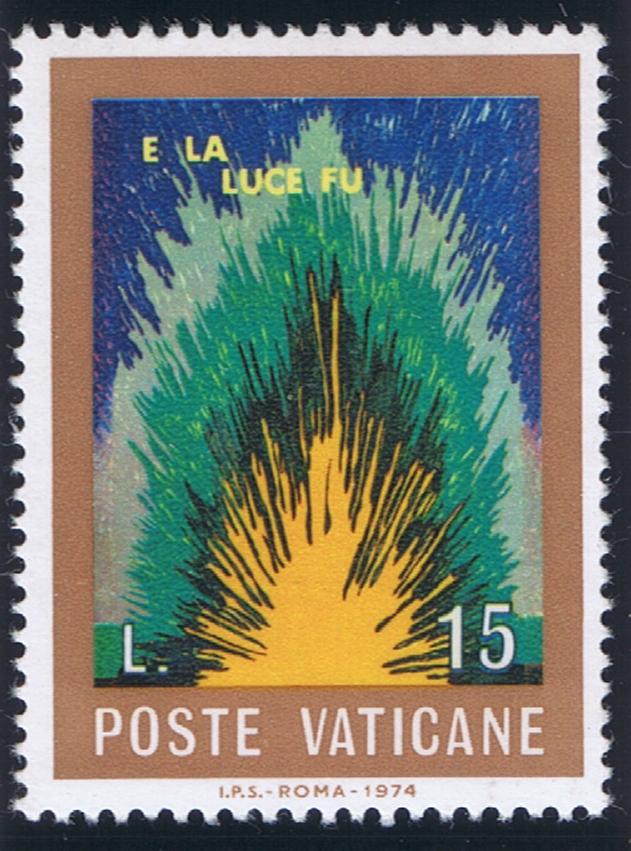
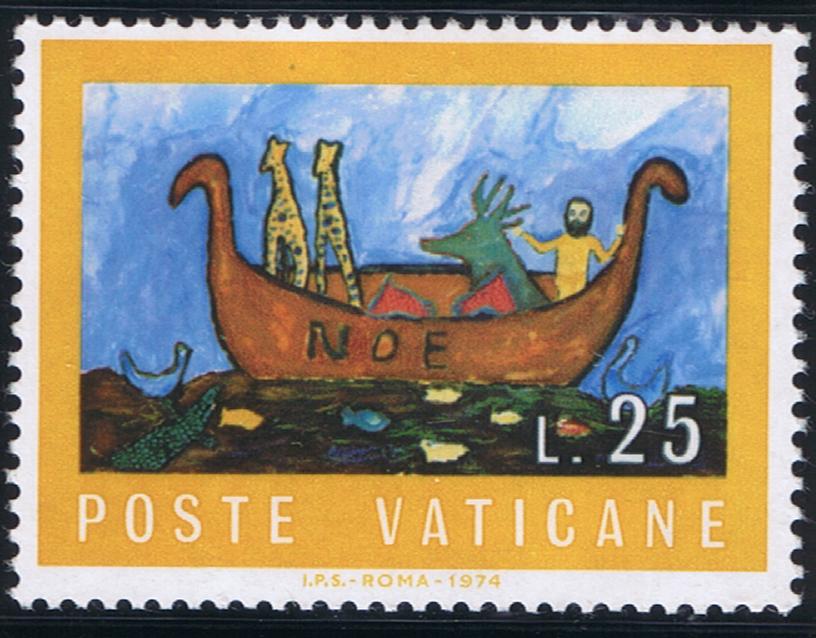






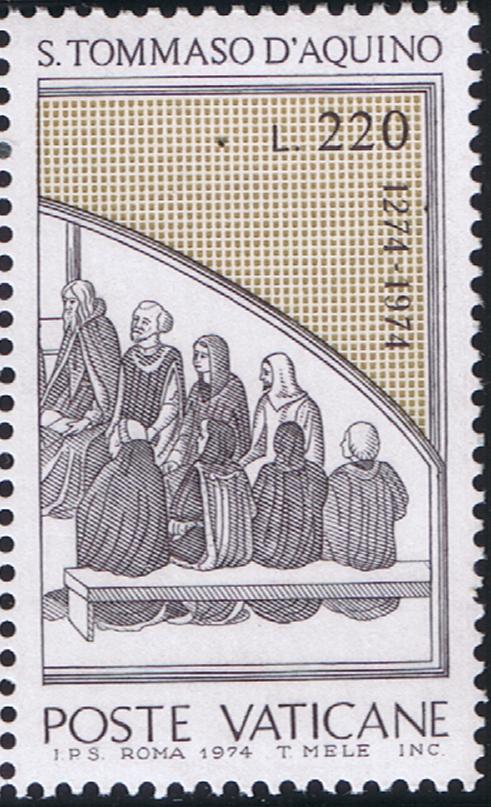
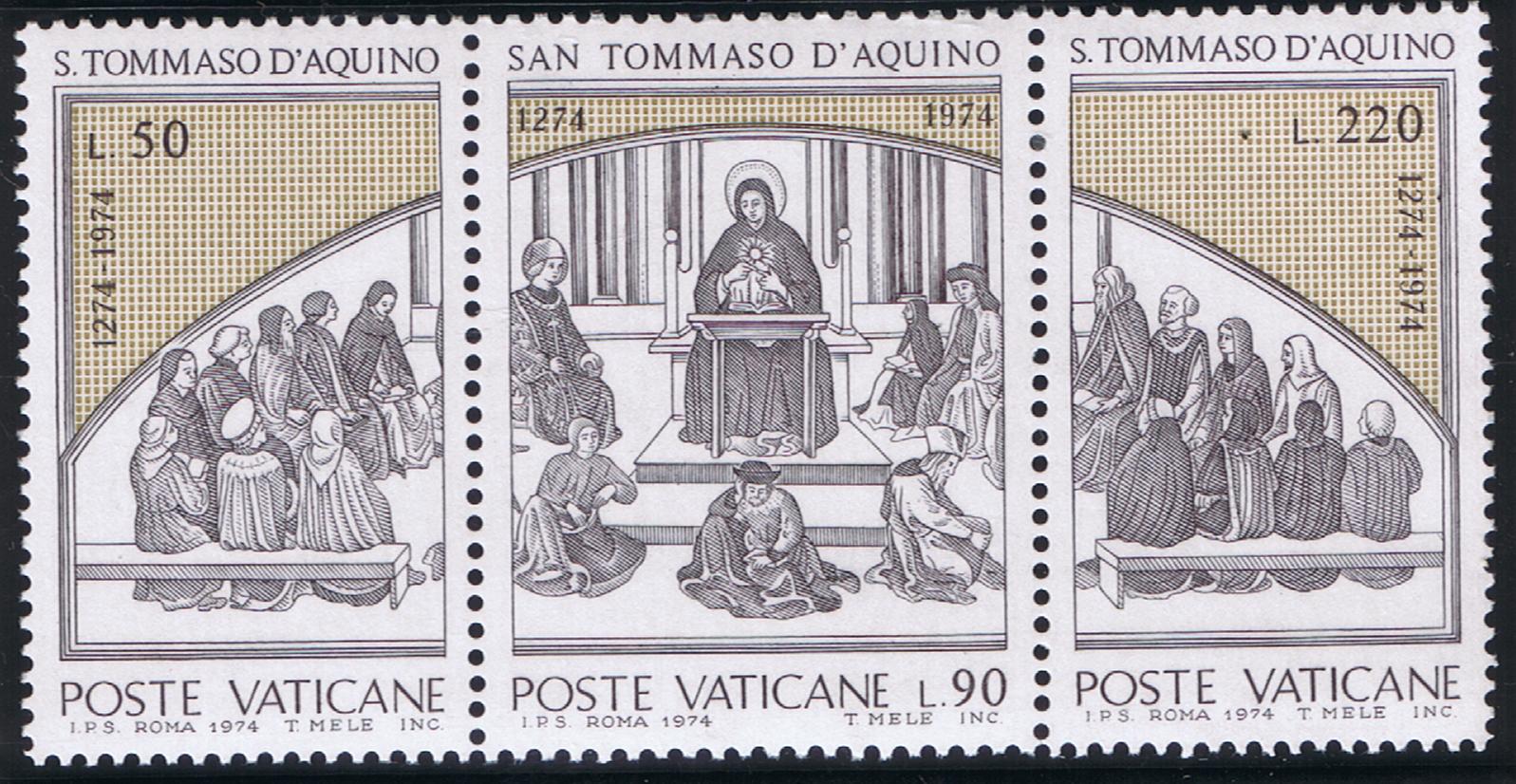





















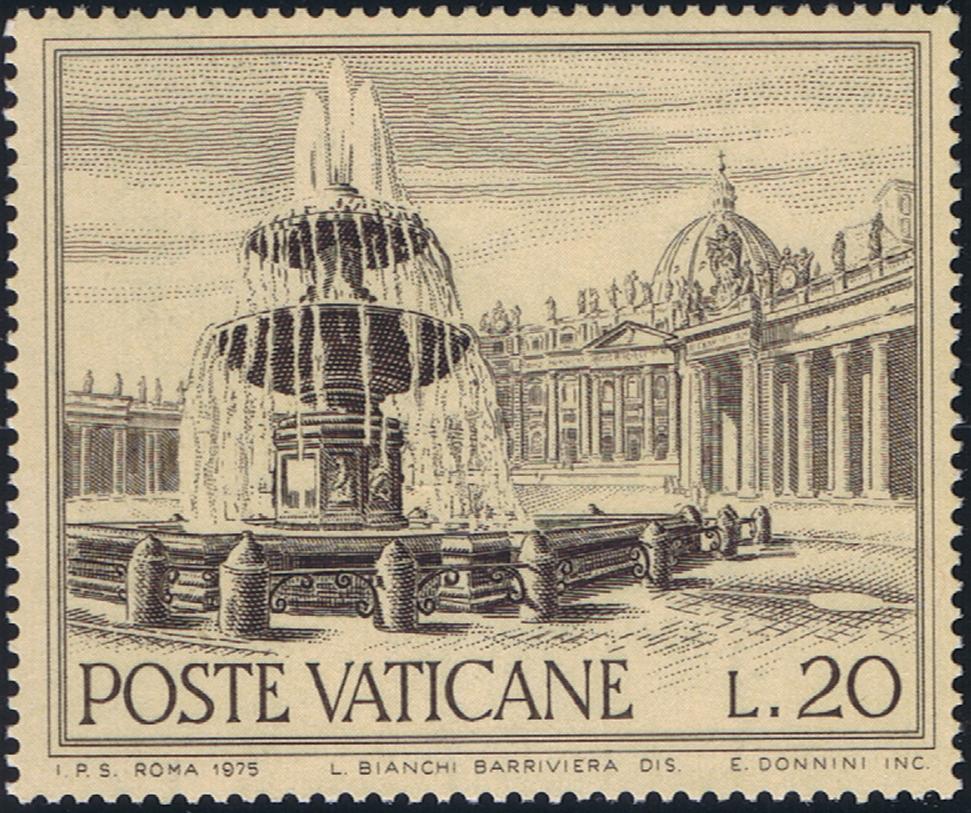


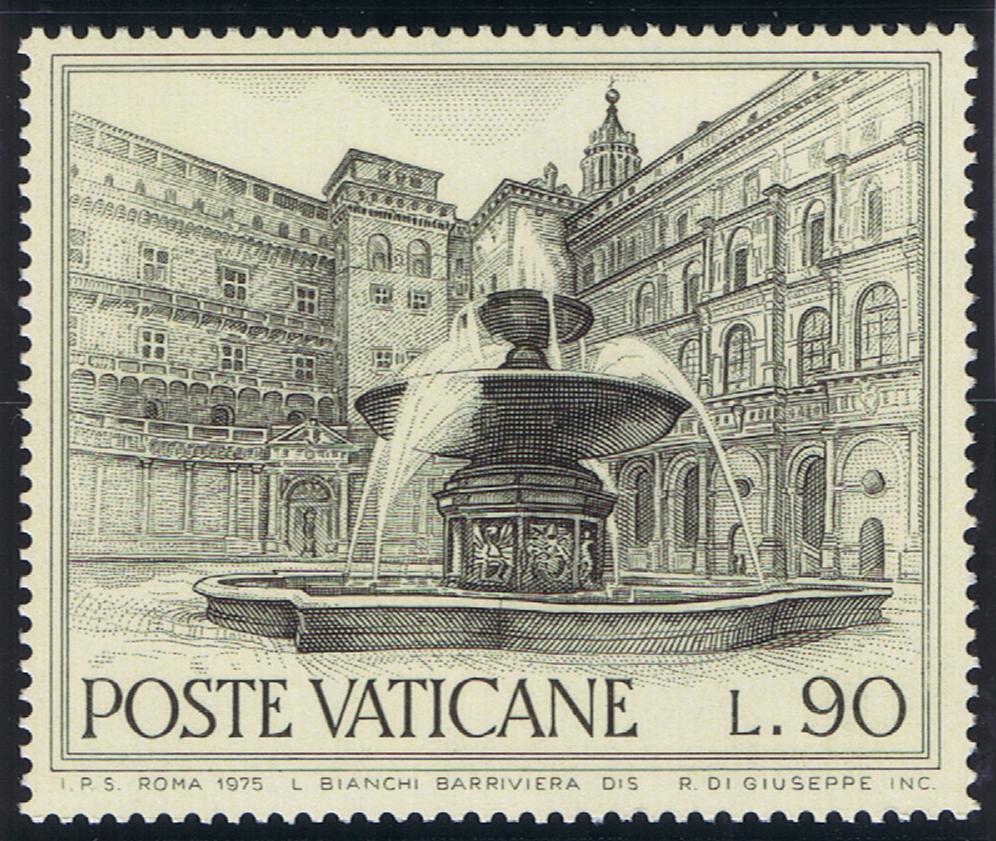





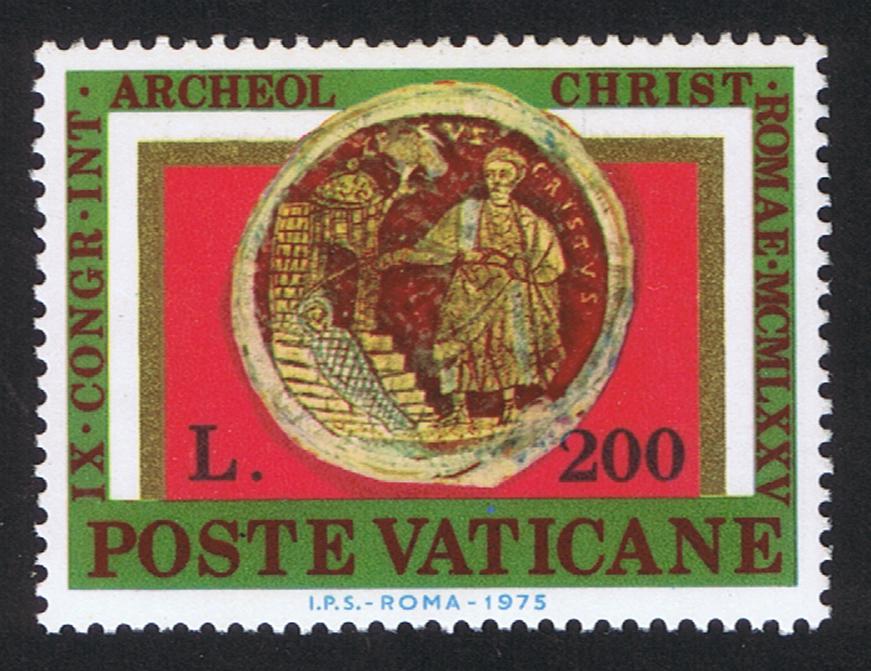



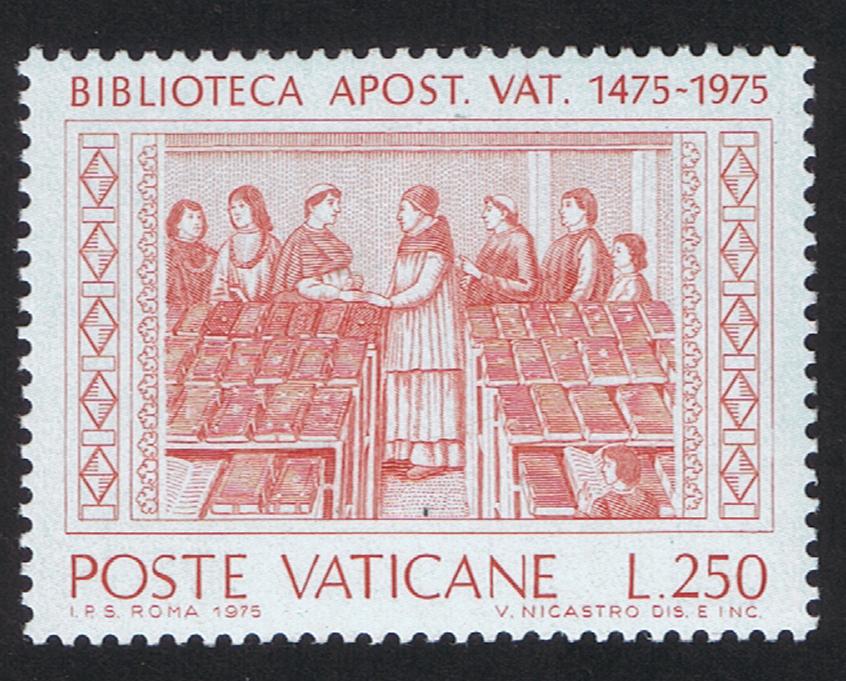

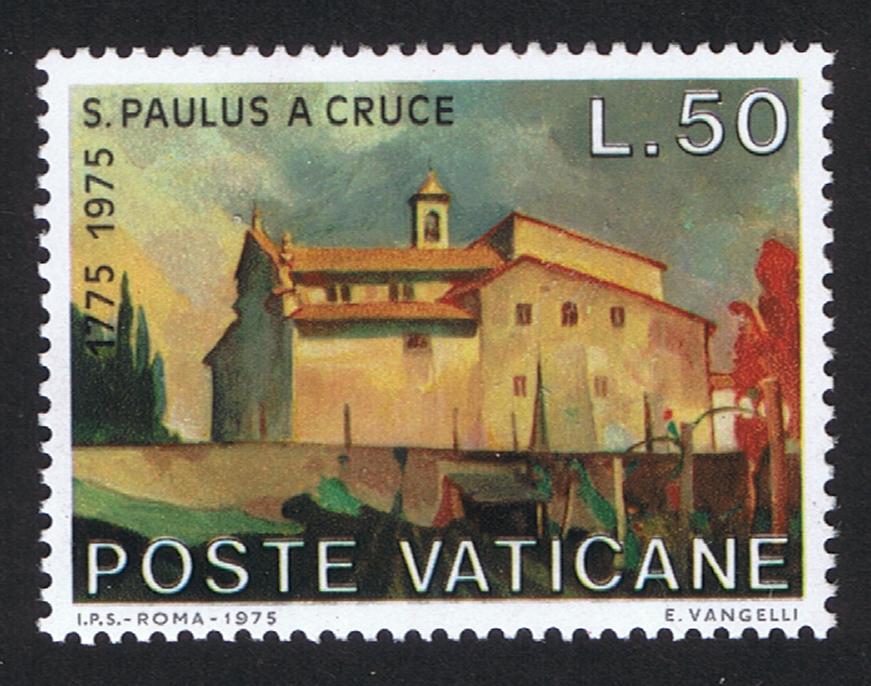
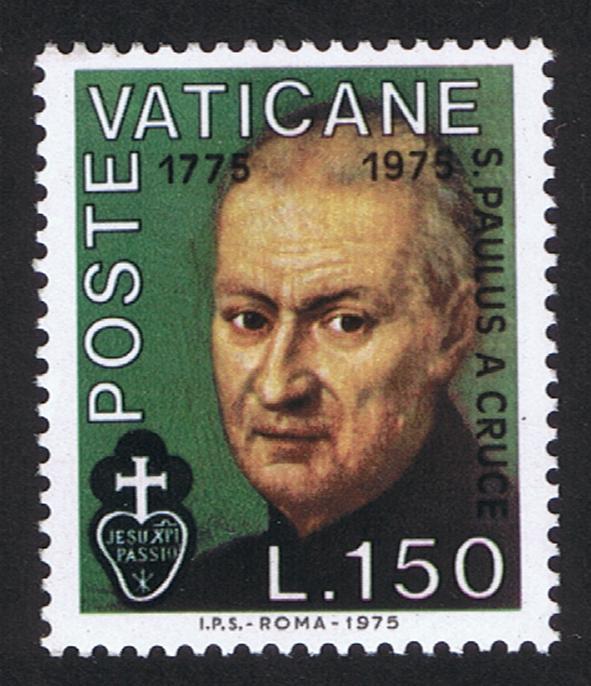
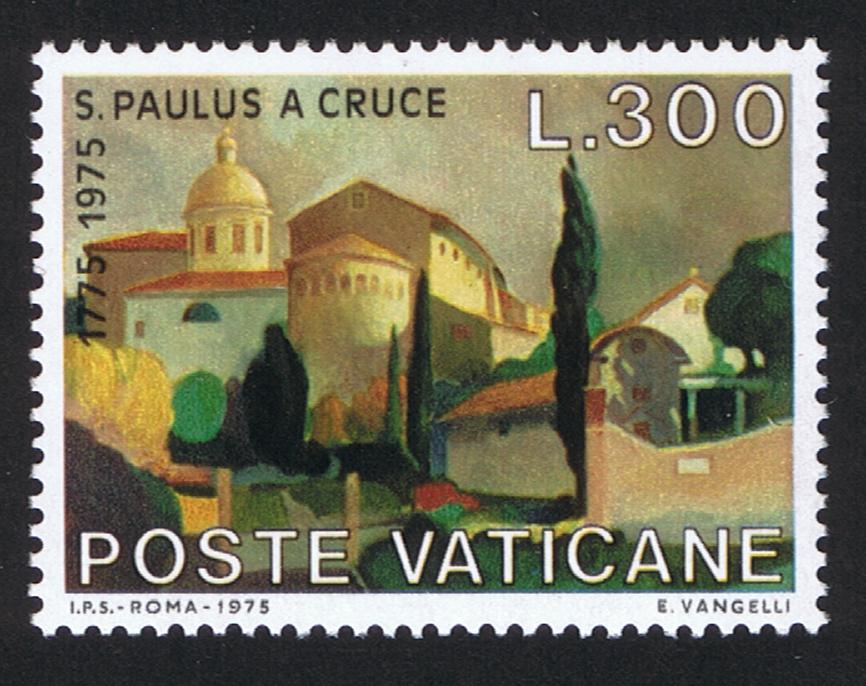

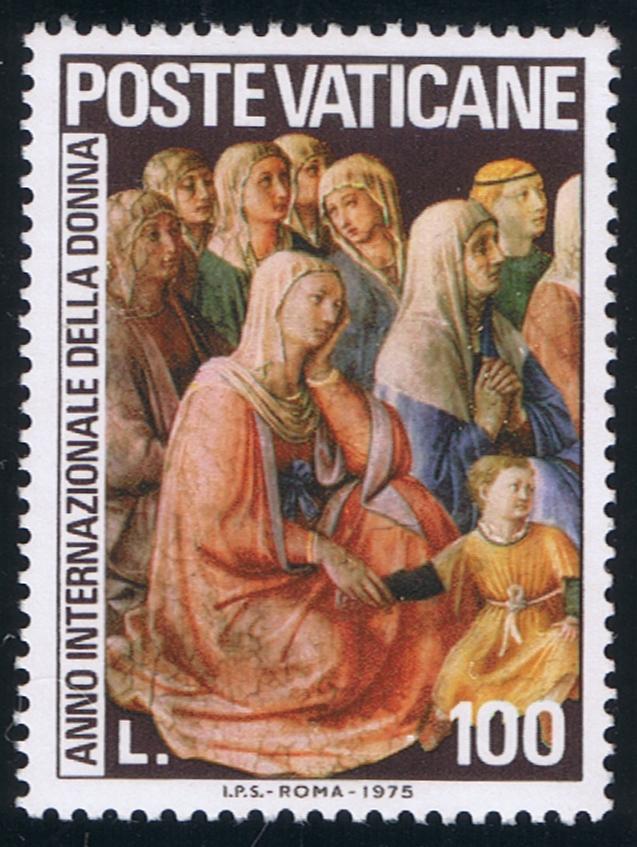
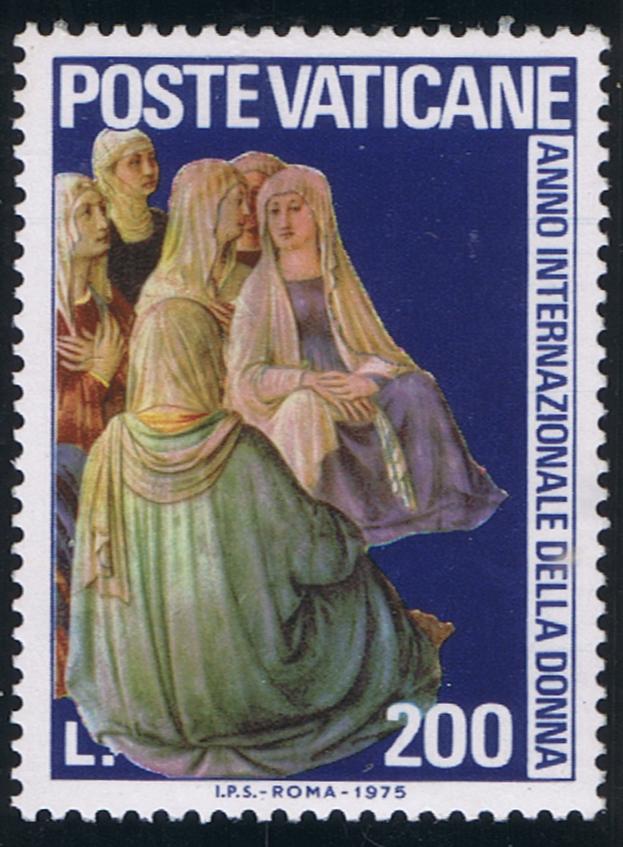






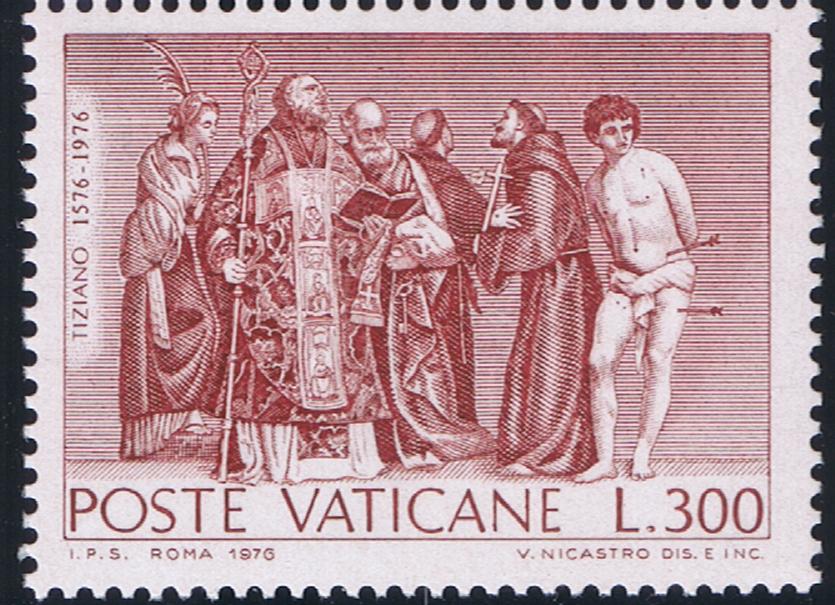






41st International Eucharistic Congress
This series of stamps, comprised of three values, was issued on July 2, 1976 to commemorate the Congress to be held in Philadelphia from August 1 - 8. The 150-lire stamp, expressing the universal aspect of the Congress, features the Host, an ear of wheat, and the globe of the world. The 200-lire stamp reproduces the emblem adopted by the Congress, with two hands supporting the Host. The 400 lire, as an expression of the hunger for the Eucharist, reproduces human figures directing their gaze and stretching out their hands towards the Host. They are all vertical in form, measure 30 x40 mm., have 13-1/4 x 14 perforations, and are printed in sheets of 40. They are printed by copper engraving in several colors on white glossy paper, and done by the Polygraphic Institute of the Italian State. The indication of the value is on the top and beneath is the inscription PHILADELPHIA 1976. Around the margin is printed XLI CONGRESSO EUCARISTICO INTERNAZIONALE, and below, the words POSTE VATICANE. Designed and engraved by Tullio Mele. the printing amounts to 1,350,000 complete sets.
The 41st Eucharistic Congress in Philadelphia featured an exhortation by Pope Paul's representative Cardinal Knox to turn to Christ in the Eucharist, and an appeal from Mother Theresa of Calcutta to comfort the unwanted and many calls for international justice. Over 400,000 people took part in the opening ceremonies on Benjamin Franklin Parkway to dedicate themselves, in the name of Christ, to help alleviate the spiritual and physical hunger of the world. Many Cardinals were present from throughout the world, together with Bishops, religious and lay people for this expression of faith that takes place every four years. President Ford took part in the closing ceremonies, in which he praised the event as "an inspiring demonstration of all the world's hunger for peace and understanding".
Citizens of more than 100 nations were represented in common purpose and common prayer. Pope Paul addressed the Congress via satellite and dwelt on the concept of "mystery" in the Eucharist. He said "The mystery of His sacramental, but real and living presence, Jesus, the teacher of humanity, is here. He is calling for you. Yes, He is calling you, each one by name." The Congress was the latest in a series that began in 1881 in Lillie, France, and the prior one four years ago in Melbourne, Australia. The closing ceremonies stressed that all came together to witness a deepening of the faith, particularly on the congress theme -"The Eucharist and the Hungers of the Human Family".
(Author - Unknown Author, From Vatican Notes Volume XXV, Number 2, September - October 1976, Pages 1 & 10)









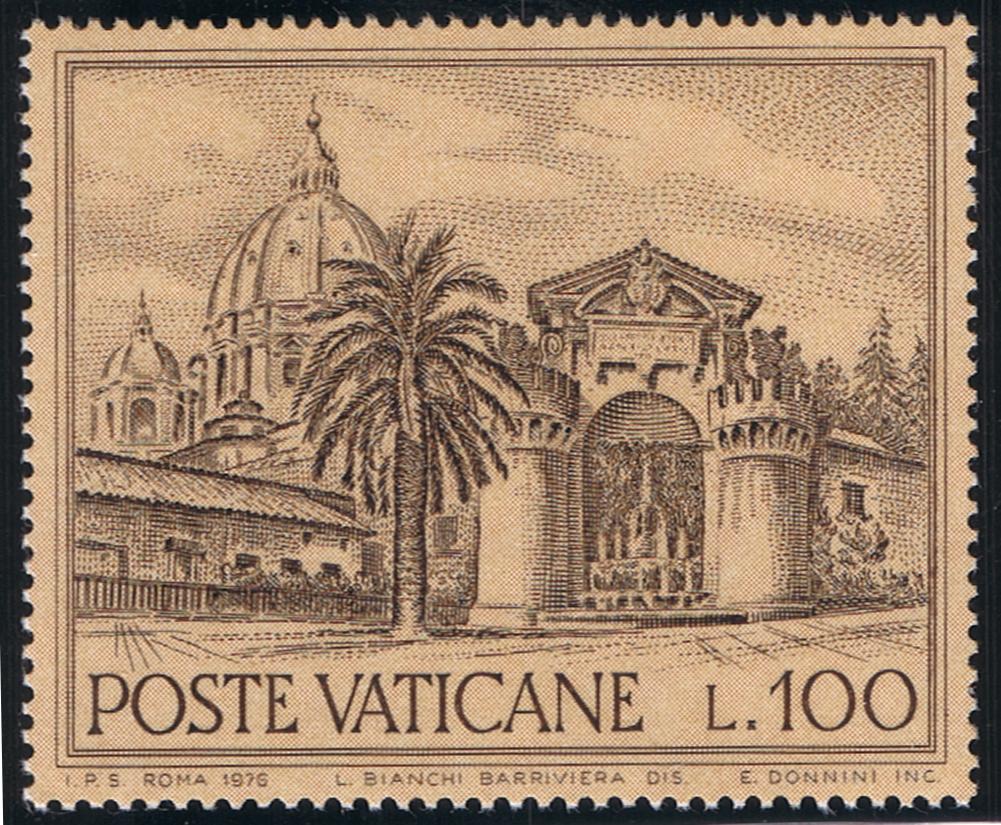



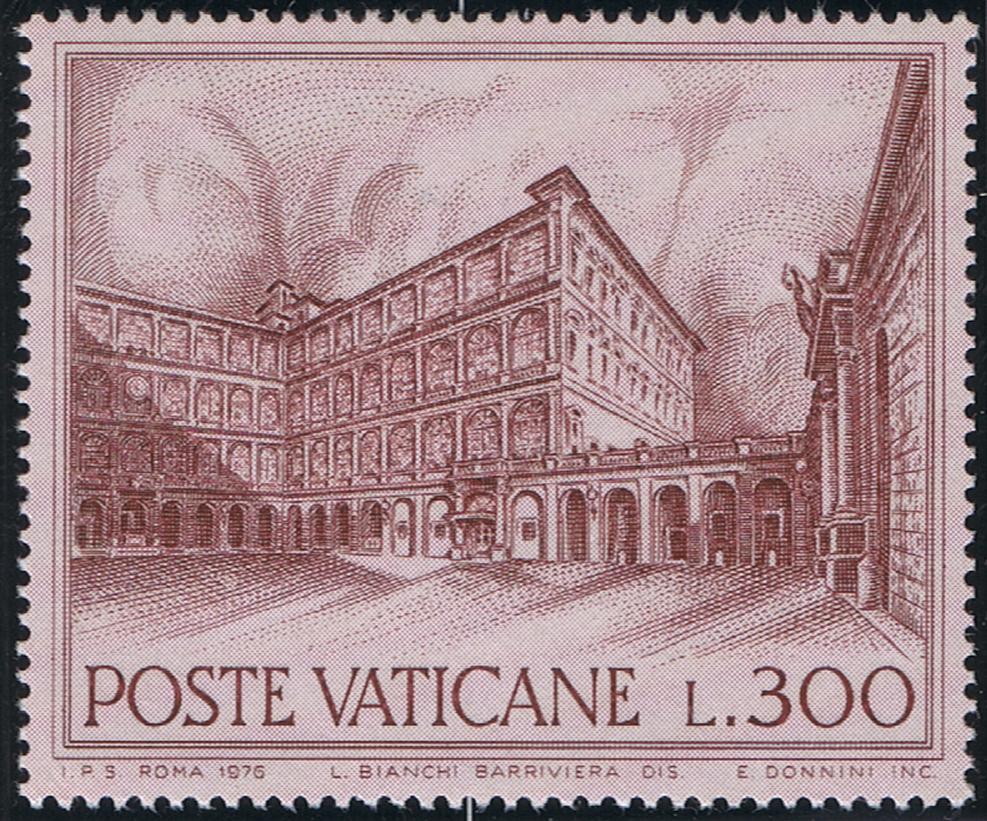



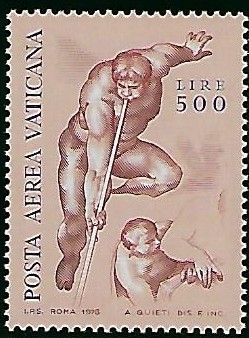
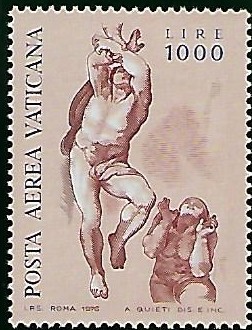



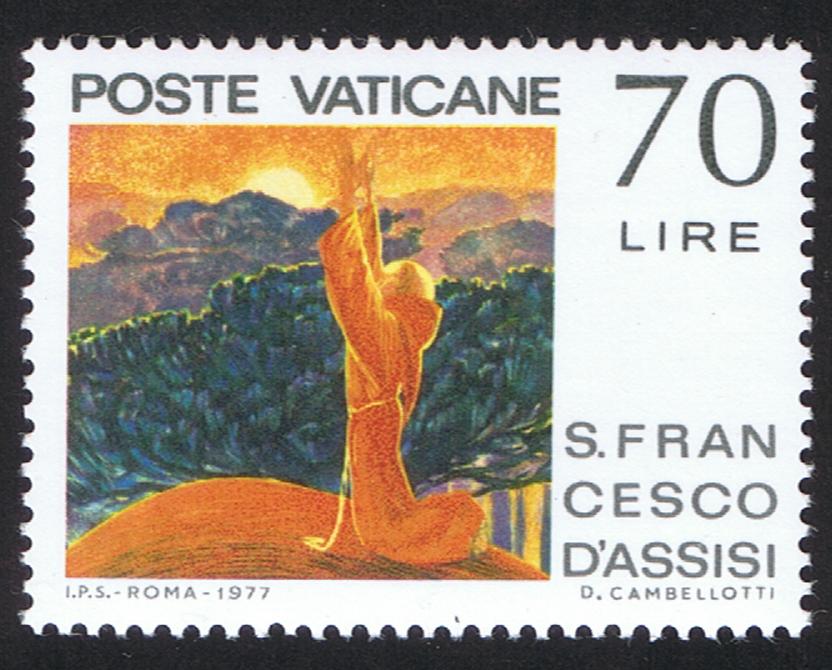
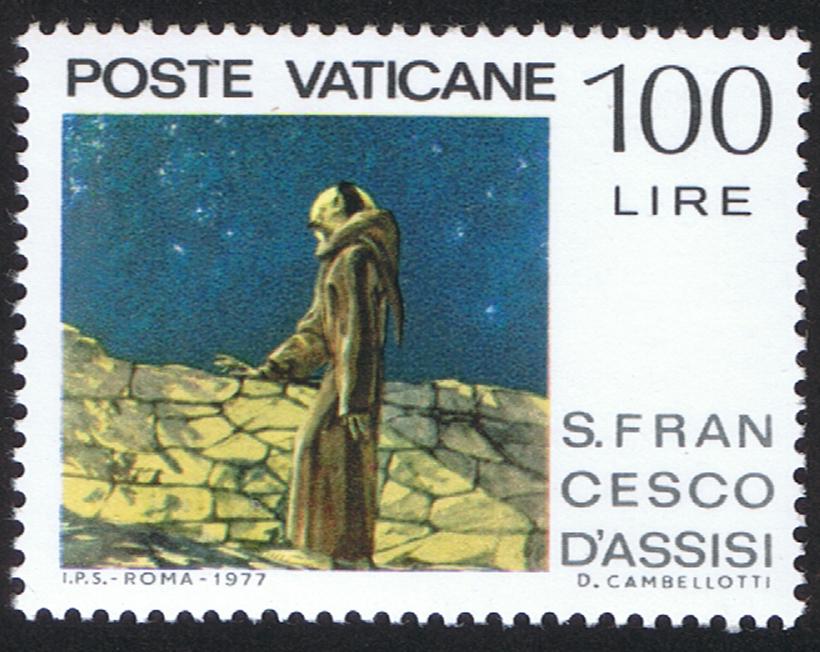
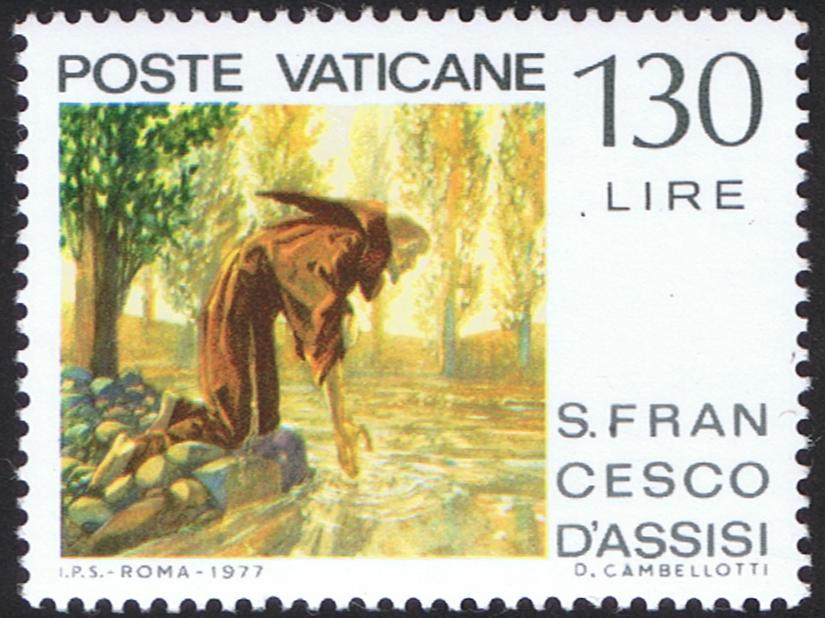
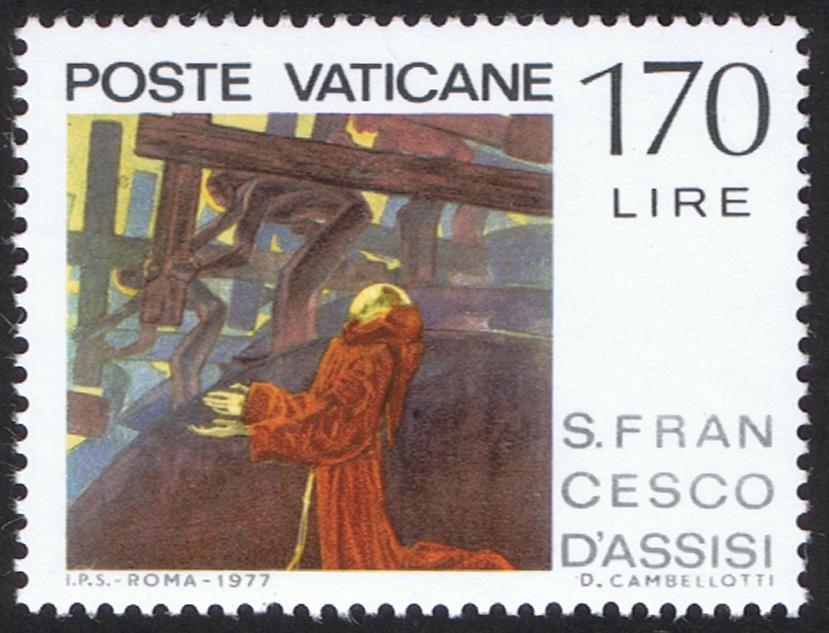
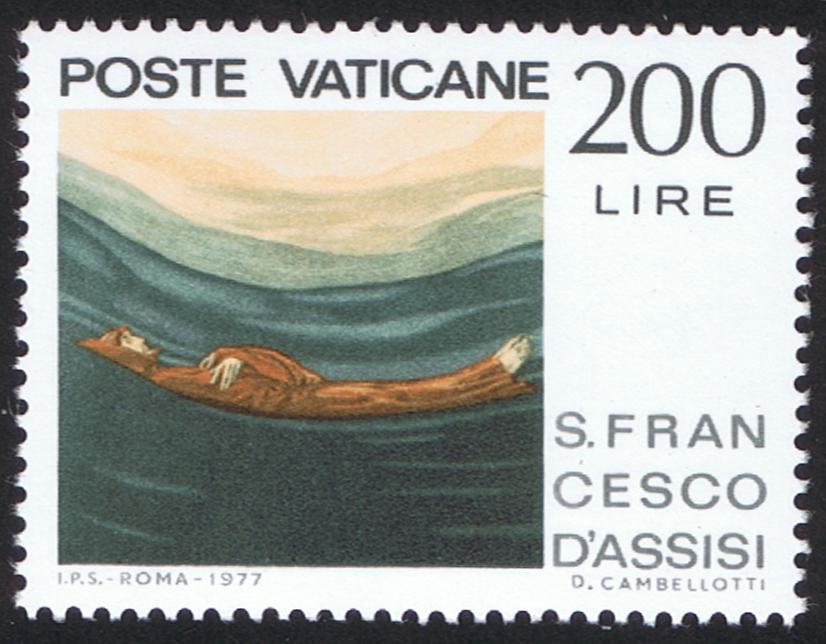



The Return of the Papacy to Rome
On May 20, 1971, the Vatican Postal Administration issued two stamps in se-tenant to commemorate the sixth centenary of the return of Pope Gregory XI to Rome from Avignon.
A fresco by the distinguished Italian painter and architect Giorgio Vasari (1511-1574) was selected as the subject for this issue. The fresco is located in the Vatican's Sala Regia of the Apostolic Palace.
The 170L value reproduces the portion of the fresco depicting Saints Peter and Paul in the sky and the faithful greeting the returning pope. The 350L stamp shows the remaining portion of the fresco, with the pope being carried by women on a portable throne. Saint Catherine of Siena is depicted walking alongside, pointing the way.
The stamps, designed and engraved by Francesco Tulli, are vertical in format and measure 24 x 40 mm. with a 14 perforation. POSTE VATICANE is printed across the top of the stamps and the value placed on the bottom corner. The words GREGORIO XI 1377-1977 are inscribed vertically on the side of the stamps.
A total of 1,250,000 complete sets were printed, and distributed in sheets containing 25 sets in vertical rows of alternating values. Printing was done by copper engraving in black on white glossy paper by the State Polygraphic Institute in Rome, Italy.
The return of the Holy See to Rome has been credited to two women saints. St. Bridget of Sweden, founder of the Brigettine Order, who came to Avignon to warn Urban V of calamity, and the prophetic warnings and incessant pleas of an Italian nun, St. Catherine of Siena. Petrarch, the celebrated Italian poet living in Avignon, also begged the popes for many years to return to Rome.
Finally, in the year 1377, Pope Gregory XI was persuaded to move the Papacy from Avignon to Rome, ending an era of nearly 70 years of "Avignon Captivity". The move was vehemently opposed by the majority of the Cardinals, who were of French origin. On the other hand, Italy resented the presence of a French pope in Rome and the people became very inhospitable on Gregory's return.
After the Holy See was returned to Rome, Avignon was still ruled by the Church through Papal Legates. Two antipopes took up residence there over the following years: Clement VII from 1378 to 1394, then Benedict XIII from 1394-1423.
There were seven Popes who headed the Holy See in Avignon, all of French origin: Clement V, John XXII, Benedict XII, Clement VI, Innocent VI, Urban V and Gregory XI. Most Avignonese Popes ruled the city with an iron hand and in the most corrupt manner. Oppressive taxation and other financial dealings afforded the Princes of the Church to live in supreme comfort and elegance and allowed them to entertain in the most lavish fashion.
Benedict XII, the first Pope to consider Avignon as a permanent seat of the Holy See, built the official papal residence where costs were not spared. The old papal palace, as it was later known, scrupulously reflected the Romanesque style of Benedict's Cisternian order.
Clement VI later added a new palace in the elaborate Gothic style, which included a huge Banquet Hall nearly 160 feet long. The Papal Council Chamber, also known as the Consistory, had the Great Courtyard leading to the chamber. Splendid frescos, tapestries and paintings lavishly adorned the palace interiors.
Avignon is located in the south of France in Provence about 60 miles from Marseilles. It is situated high on a bend of the river Rhone and it rises like a massive and elegant stone pile. Within the three-mile walled city of many winding streets, the Papal Palace soars 190 feet above the town and dominates the formidable multi-towered fortress-palace. Built on a giant rock, it sprawls over an area covering four miles.
Avignon was not considered an important center until the Papal See made it famous, although many factions fought endless battles to gain control of the city. Avignon flourished under Roman rule and later was annexed to the Kingdom of Burgandy. It became an independent republic or commune upon the fall of the Kingdom.
Avignon was purchased in 1348 by Clement VI from Joan I, the Queen of Naples and a Frenchwoman from Provence. It remained the property of the Church until 1791 when it was seized by the French National Assembly during the revolution. Avignon was not French soil; it belonged to Vassals of the Pope for many years.
The holiness the city represented was also reflected on city houses; corner walls located at intersections often displayed beautifully executed niches with statues of Saints.
Prior to the transfer of the Papacy to France, the Popes resided in the famous Lateran Palace in Rome, which had been erected by Laterano Planizio during the times of Nero. Upon return of the Pope to Rome, the Vatican Palace was chosen as the new residence, primarily because the Lateran Palace was rendered to ruins and also because the St. Angelo castle, the papal stronghold, was nearby.
The decision to move the Papal Court to Avignon, France was triggered by the endless bloody strifes between the Guelphs and Ghibellines, two opposing factions that nearly mangled Italy for two centuries.
The Guelphs were Germans of Italian origin, comprising the peasantry of several Italian cities. They were engaged in the struggles between Emperors and Popes. The Ghibellines were comprised mainly of imperialistic families of the nobility and petty tyrants of another group of Italian cities. The latter group favored submission of Italy to the Empire. Continual splits were common among the smallest groups within the Guelphs or Ghibellines, perpetuating feuds and bloodshed. Dante condemned these factions as "perturbators of the peace in Italy."
(Condensed from the article "Stamps note return of Papacy to Rome" by the Editor for the July 18, 1977, edition of Linn's Stamp News).
Technical Details:
Scott Catalogue - 613 - 614
Date Issued - 20 May 1977
Face Value - 170 l, 350 l
Perforations - 14
Printer - Polygraph Institute of the Italian State
(Author - Joseph Lopreiato , From Vatican Notes Volume XXVI, Number 2, October - December 1977, Pages 3-5)





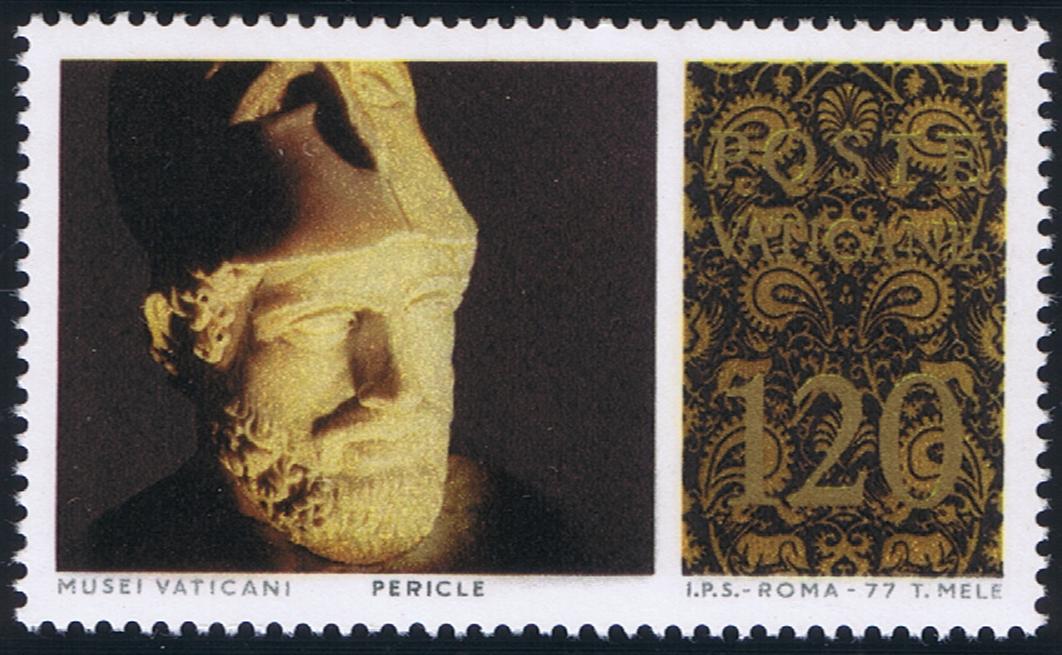
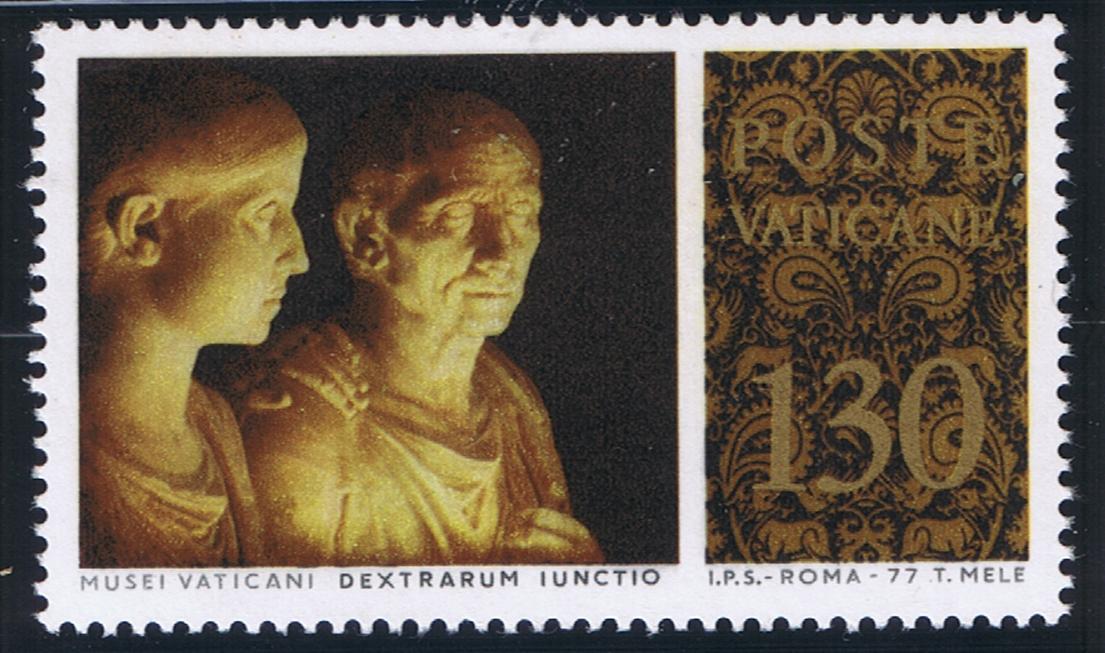
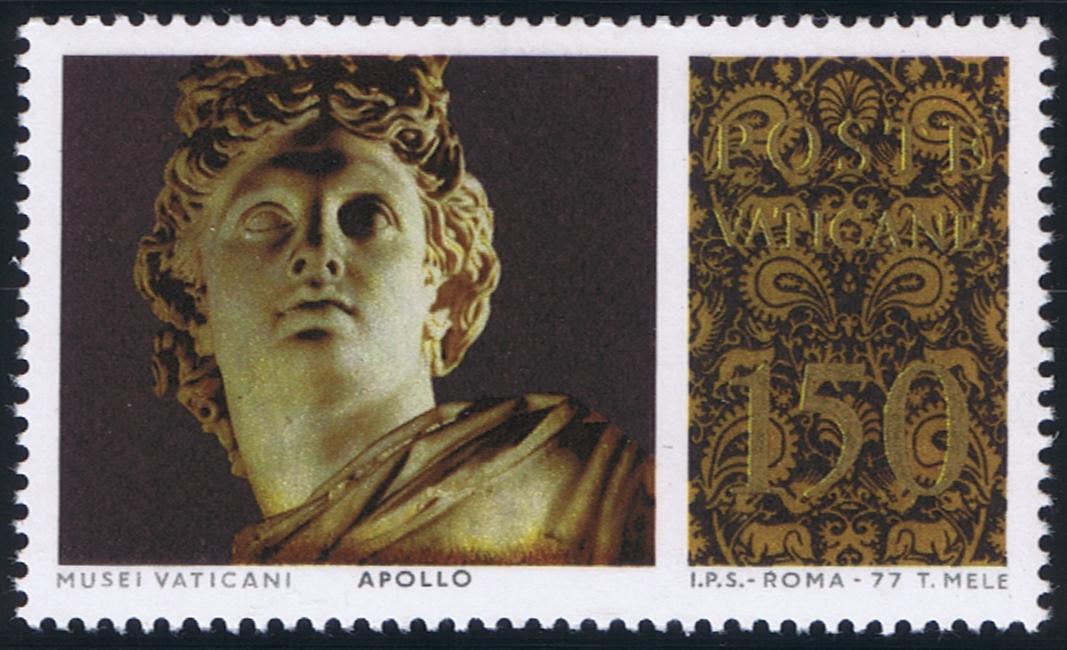





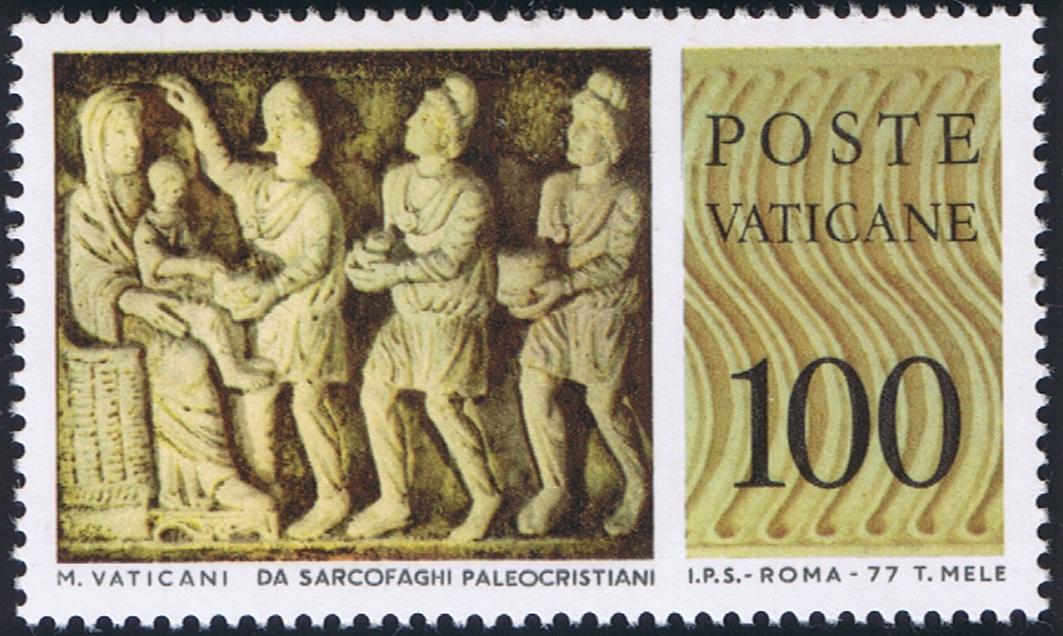
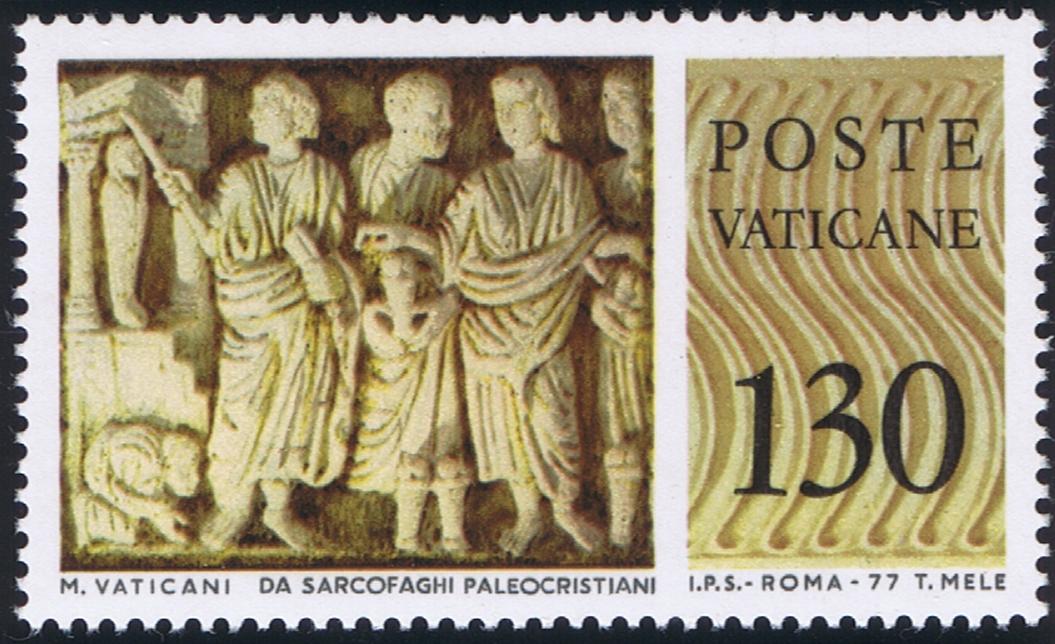
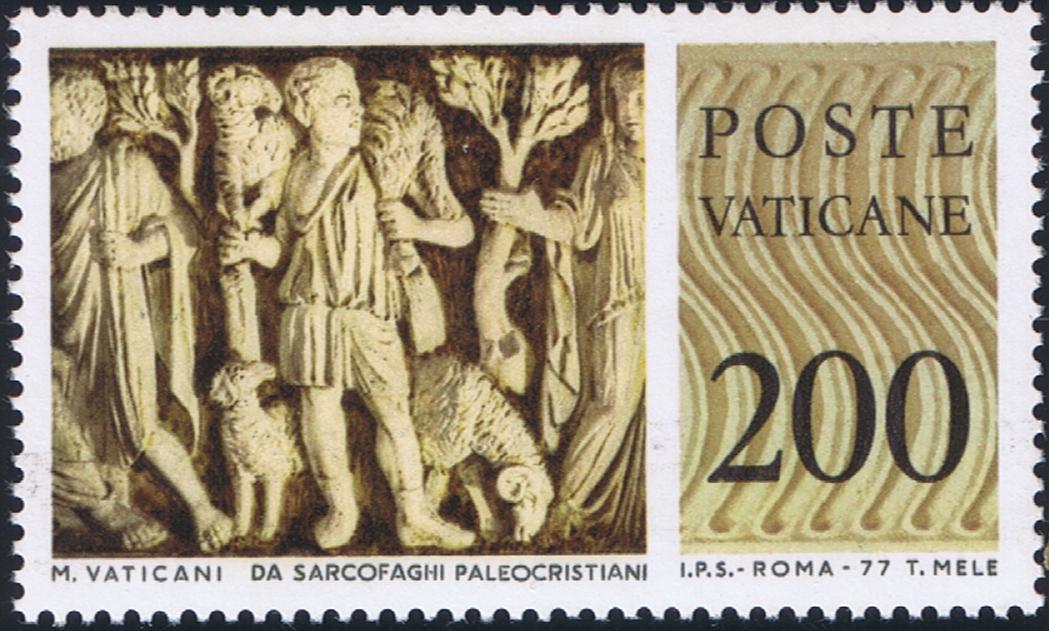






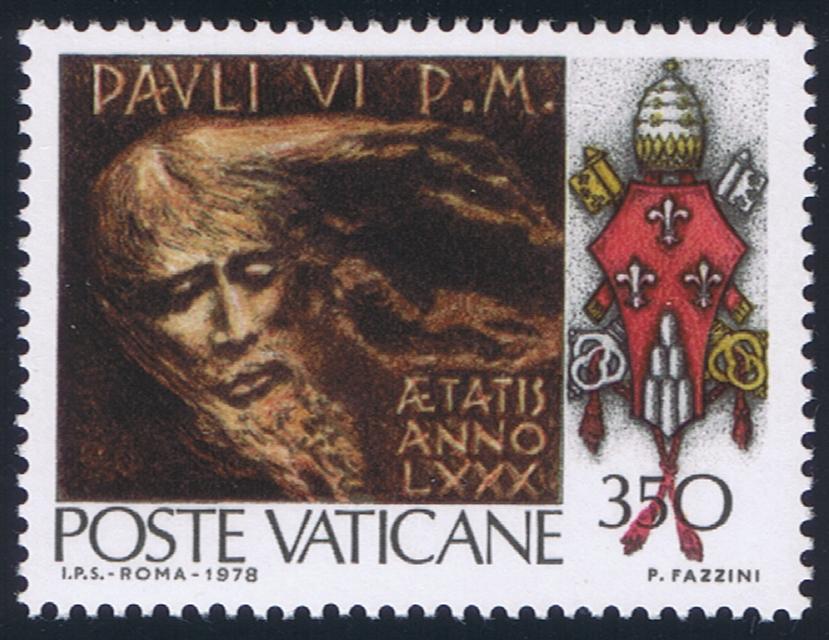
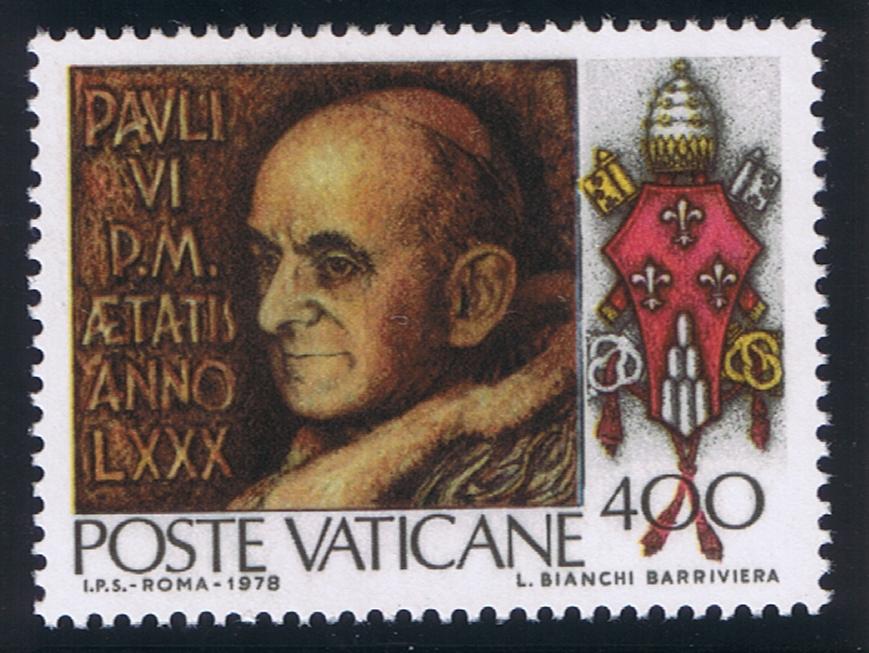




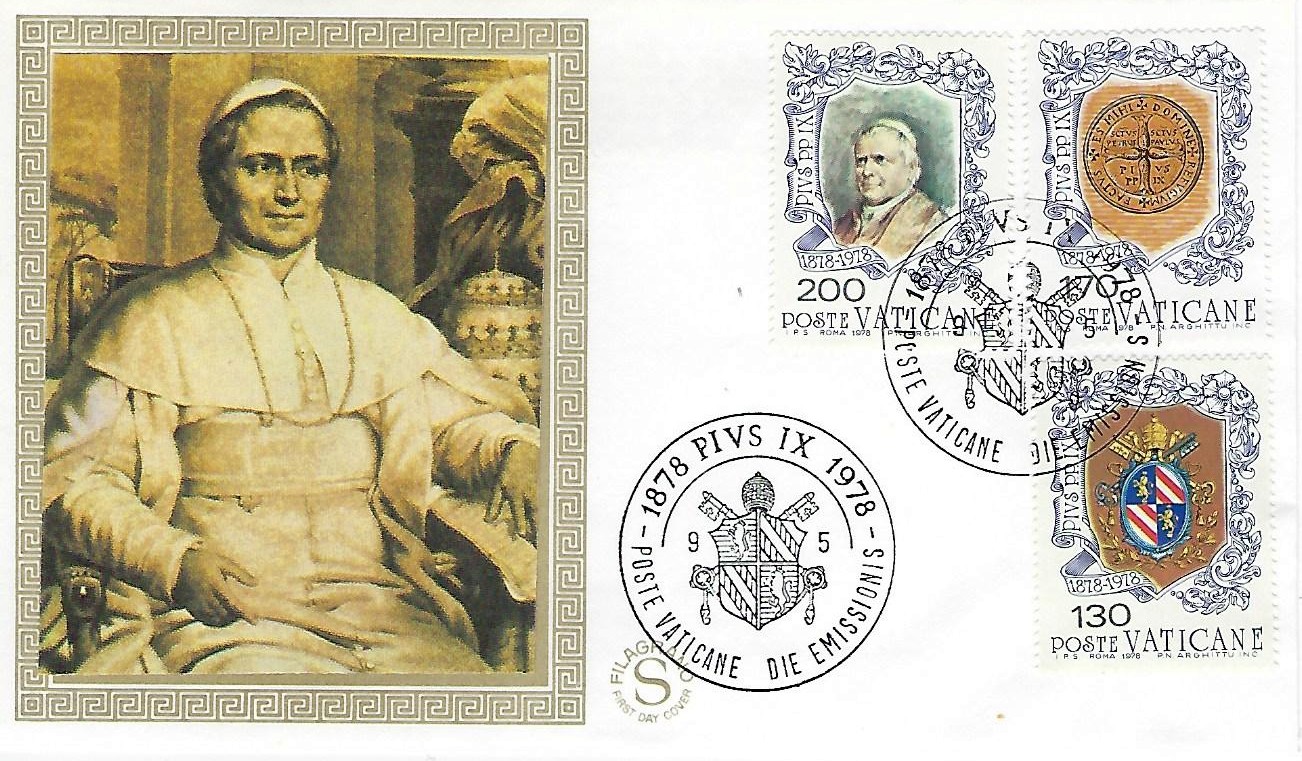








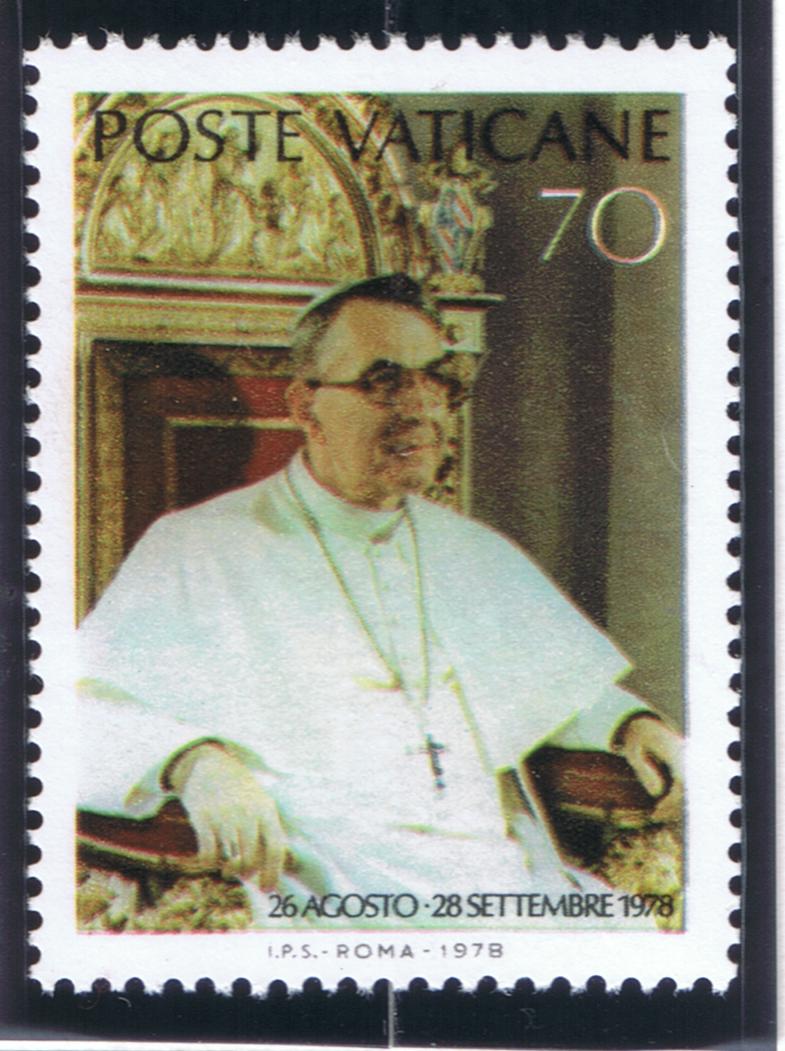
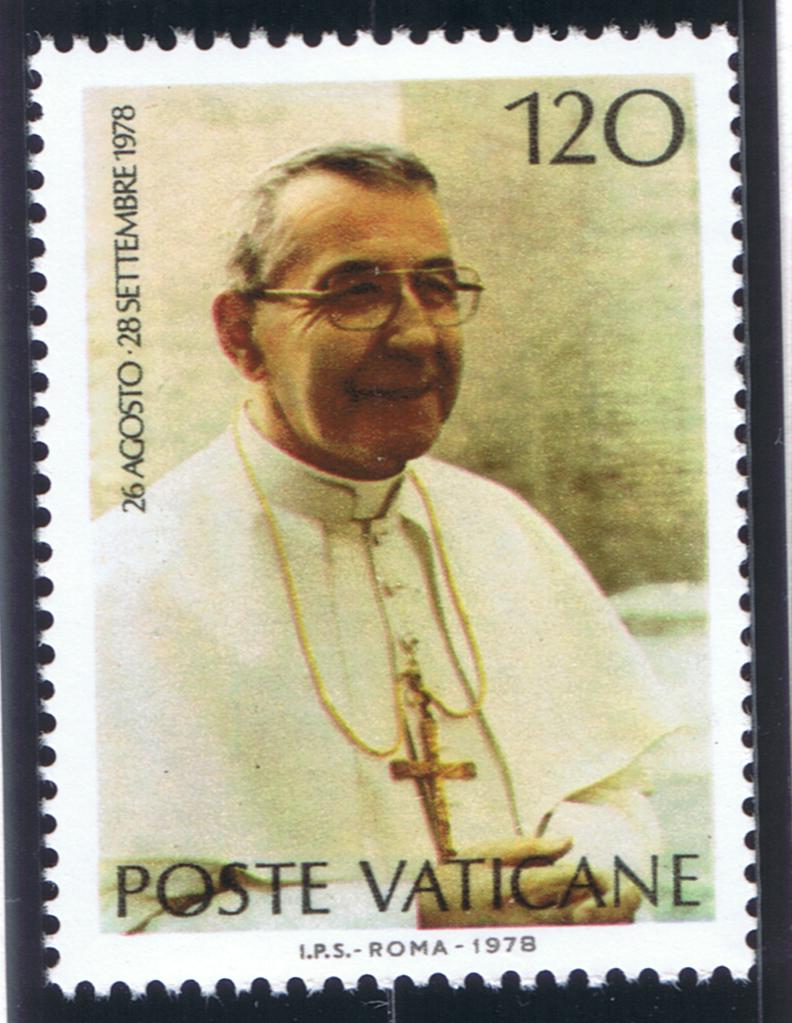
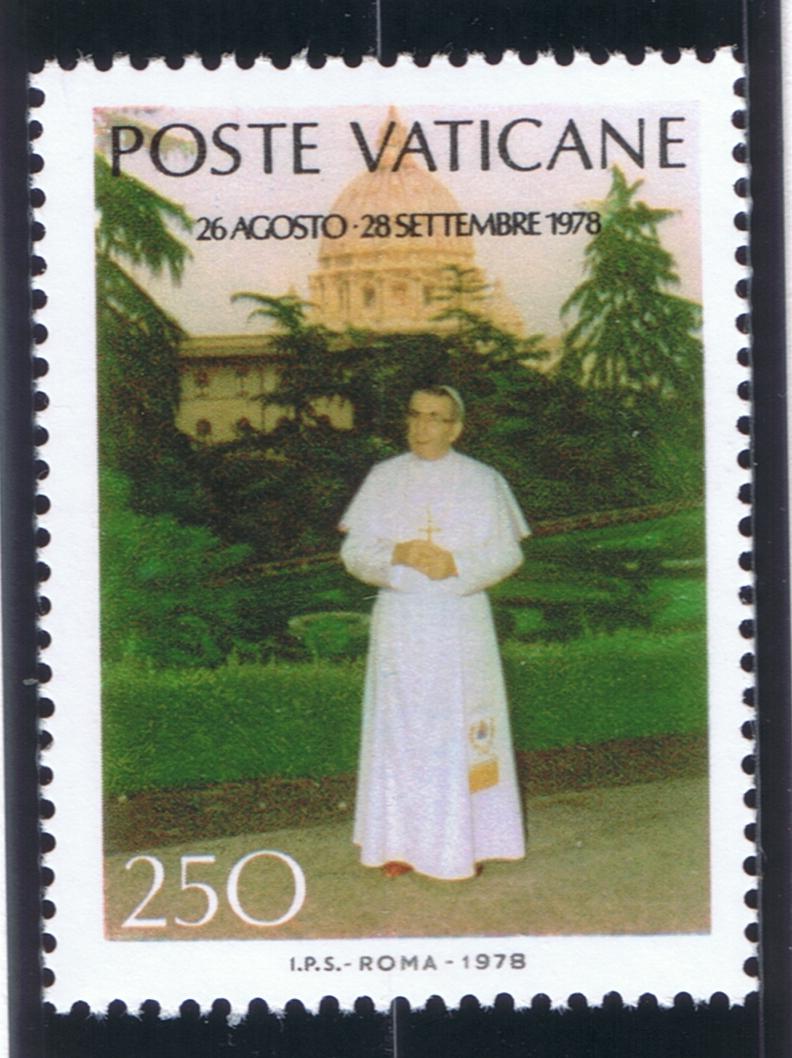
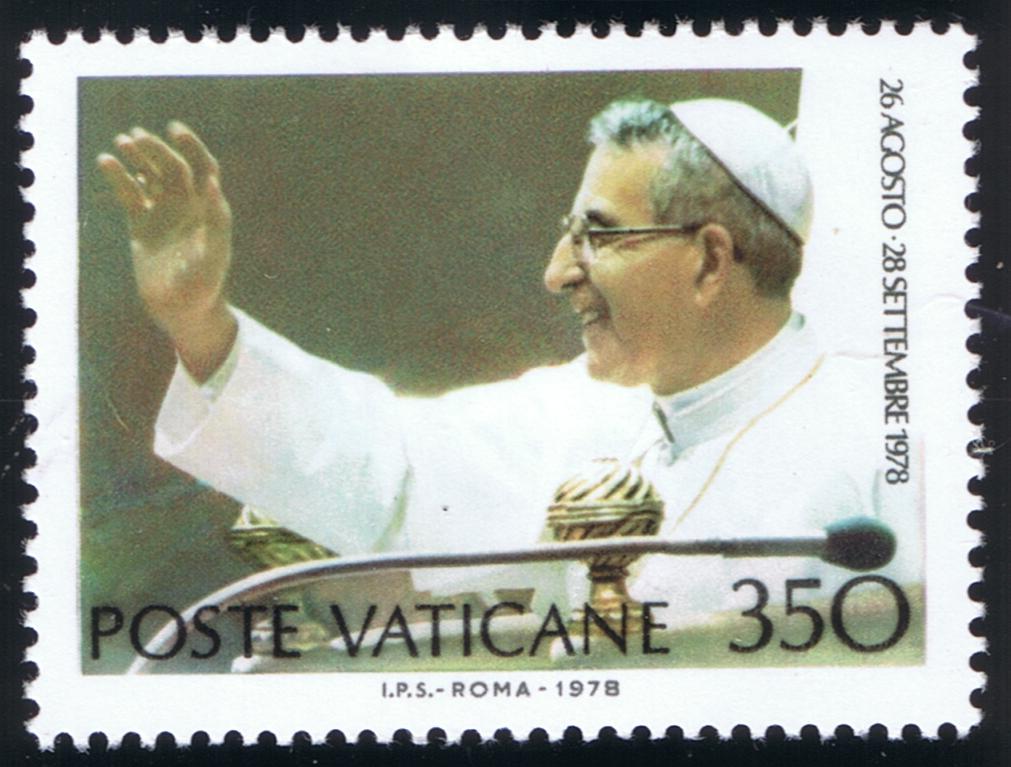
Pope John Paul I
Memorial Issue
On December 11, 1978, the Vatican Postal Administration placed on sale a set of four stamps to commemorate the Pontificate of the late Pope John Paul I. The subjects for all values of this issue were selected from photographs taken during the Pontiff's short reign, and depict him dressed in the white papal cassack and skull cap.
The 70 lire value depicts the pontiff seated on the throne, the 120 lire has a smiling portrait of the late pope, the 250 lire value shows him walking in the Vatican Gardens, and the 350 lire depicts the pontiff sitting on the throne with a microphone in front in the act of giving his blessing.
The first three values are vertical in format and measure 30 X 40 mm with a 13 1/4 x 14 perforation. The high value is horizontal in format measuring 40 x 30 mm. and perforated 14 x 13 1/4. The inscription "26 Agosto - 28 Settembre 1978" (August 26 - Sept. 28, 1978), indicating the day of election and day of his death, appears on each stamp in addition to the legend POSTE VATICANE and the stamp denomination.
The preparation of the subjects and printing was executed by the State Polygraphic Institute, Rome, Italy. The stamps were printed in 4-color photogravure on white glossy paper, and distributed in sheets of 40. A total of 1,450,000 complete sets were printed.
Pope John Paul I was born Albino Luciano on October 27, 1912, in the village of Forno di Canale, presently known as Canal d'Agordo, a rural hamlet at the foot of the Dolomites Alps. The Pope's father was a bricklayer and an activist in the Italian Socialist Party. His mother, Angela, was a peasant; a jovial woman, "strong and devout" as he once described her.
Young Albino entered the seminary in Feltre where he received his initial education and later graduated from the Gregorian Seminary of Belluno. On July 7, 1935, he was ordained a priest. At age 23, he went to Rome to pursue his studies at the Pontifical Gregorian University and upon graduation, he returned to his native village to work in the local parish while teaching religion in nearby schools. He moved to BeIluno to join the seminary faculty and in 1937 he was promoted to Assistant Rector, a position he held for ten years.
In 1948, Don Albino received the title of Assistant Vicar of the Diocese of Belluno, and in 1958, Pope John XXIII appointed him Bishop of Vittorio Veneto, not far from Belluno. He served his flock for eleven years, with dedication and keen understanding of their socio-economic problems.
In 1969, Pope Paul VI elevated him to archbishop and Patriarch of Venice, one of the two most prestigious episcopal seats in Europe; the other being the Patriarchate of Lisboa, Portugal. The Byzantine splendor of St. Mark's Basilica suddenly made this man of humble birth somewhat uncomfortable. He refused to wear the bejeweled piscatorial ring the symbol of his office, and declined to participate in the procession of gondolas in the canals; a traditional event which honors the new Patriarchs of the lagoon city. He requested and received a simple ceremony for his investiture without the official pomp accorded to his two predecessors, Giuseppe Sarto and Angelo Roncalli, who later became Pope Pius X and John XXIII respectively.
This man of great personal warmth, spiritual strength, and tireless interest in the poor, won the admiration of Pope Paul VI who elevated the Patriarch to Cardinal at his 4th consistory of March 5, 1973. Five years later, on August 26, 1978, Cardinal Luciani was elected as the 263rd successor of St. Peter by the largest number of Cardinals in the history of the Church on the fourth ballot, on the first day of voting, the shortest conclave in modern history. He was the first pontiff to choose a name never recorded before in the annals of the papacy. Pope Lando (913-914) was the last pontiff to use a name which has not been adopted by any other pope.
On September 3, 1978, at 6 p.m. Rome time, John Paul I was installed as the new Head of the Roman Catholic Church. "A Mass for the Beginning of the Pastorate of the Supreme Pontiff", as he preferred to call it, replaced the traditional papal coronation ceremony. The rites were simple and the historical papal tiara, signifying temporal powers, was replaced with the bishop's miter and the pallium. The pallium, placed around the Pope's shoulders, consists of a band of lamb's wool with two pendants and is decorated with six crosses and three gold pins. Traditionally the pallium symbolizes the pastoral duties associated with a metropolitan archbishop.
After only 34 days as Pontiff of the Roman Catholic Church, John Paul I died victim of a heart attack. The news of his unexpected death, on September 29, 1978, stunned the Christian world. In such a short time, this obscure but humble pastor achieved wide popularity and was able to capture the affection of Christians and non-Christians around the globe.
The funeral Mass and burial took place on October 4, 1978, after laying in state in St. Peter's Basilica for five days. The plain pine coffin containing the pope's body was placed in a sarcophagus of white Turkish marble in a grotto under the Basilica where John XXIII and Paul VI are entombed. His death marked the end of nearly five centuries of unbroken succession of Italians to the throne of St. Peter's, when on October 16, 1978, the Princes of the Church elected Cardinal Karol Vojtyla of Poland as Supreme Pontiff of the Roman Catholic Church.
(Author - Unknown Author, From Vatican Notes Volume XXVII, Number 6, March - April 1979, Pages 2-3)

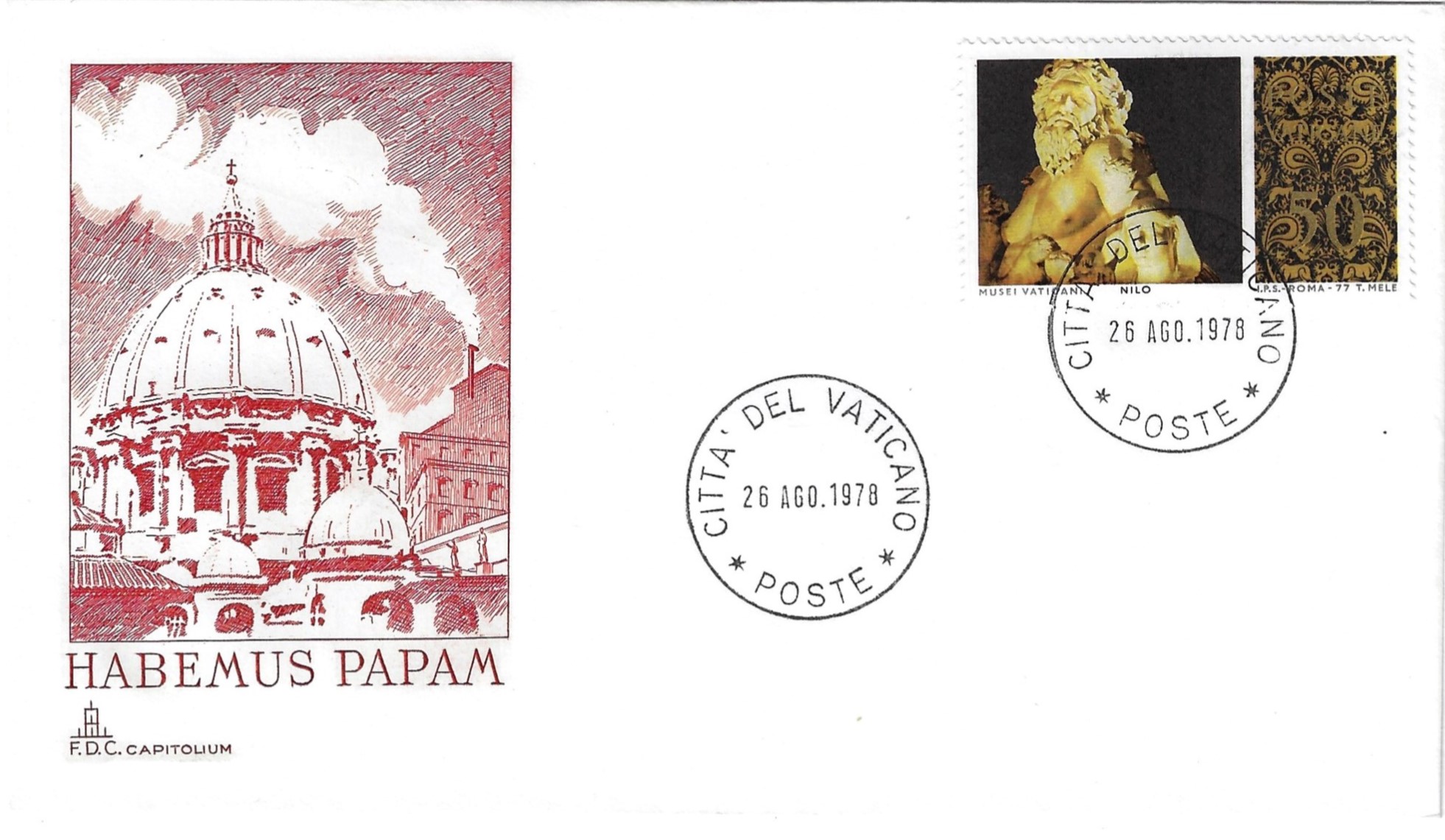
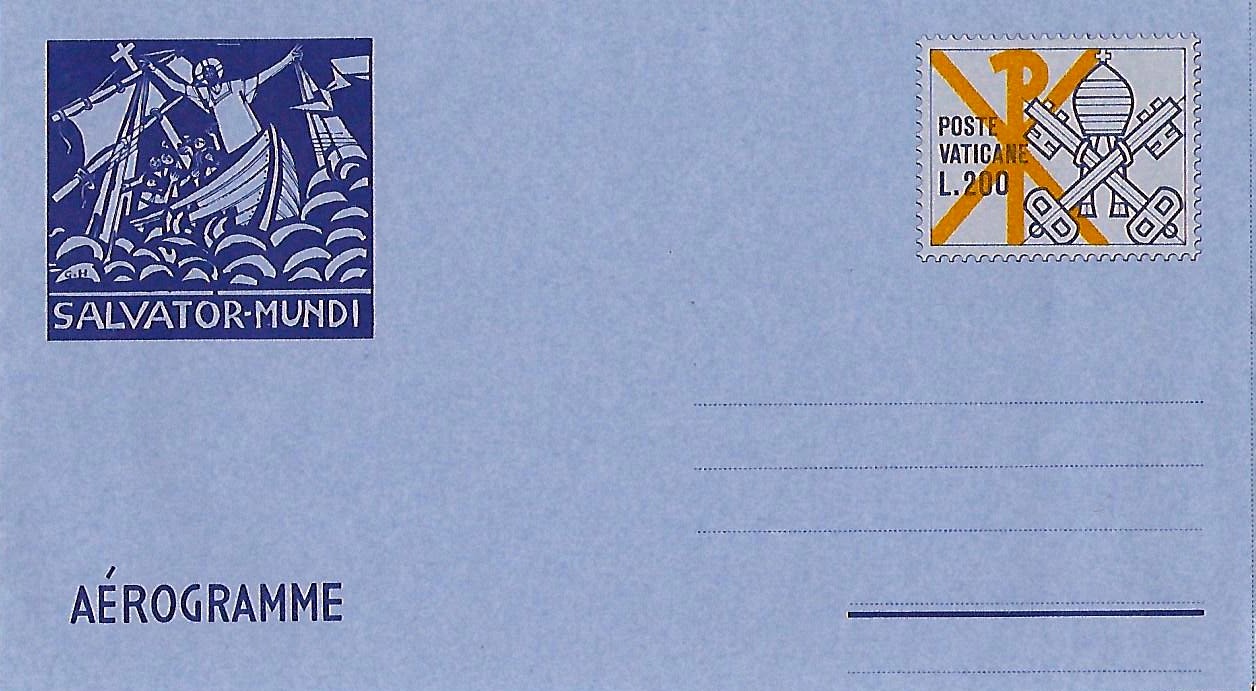


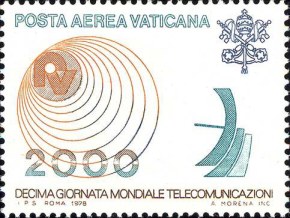

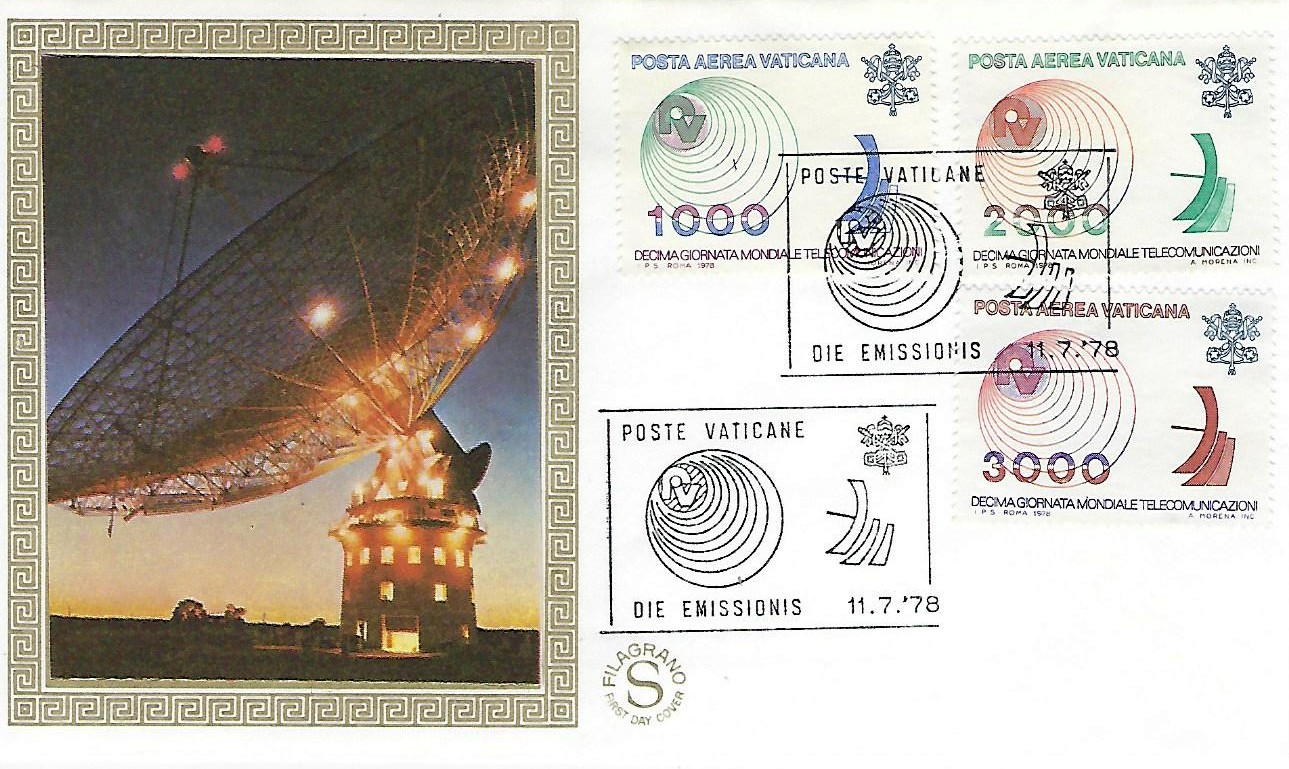

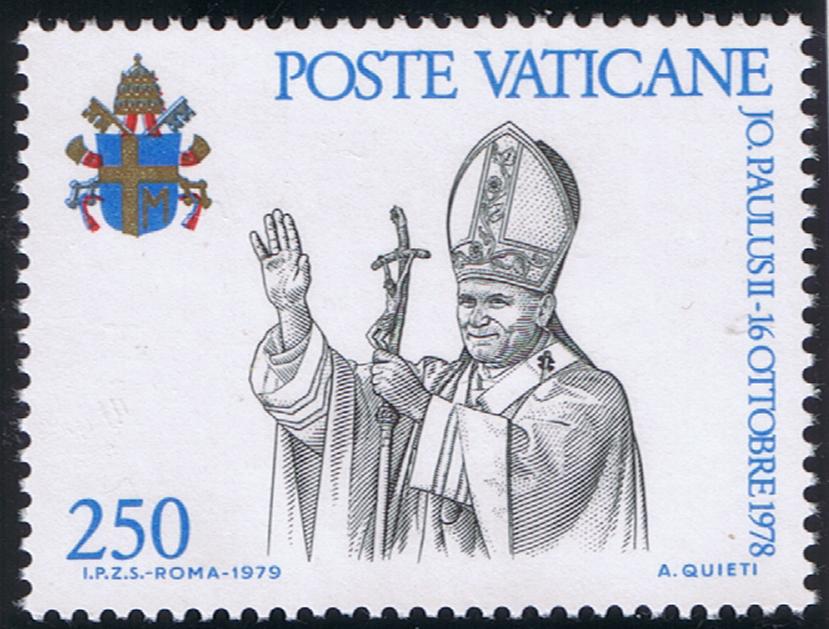
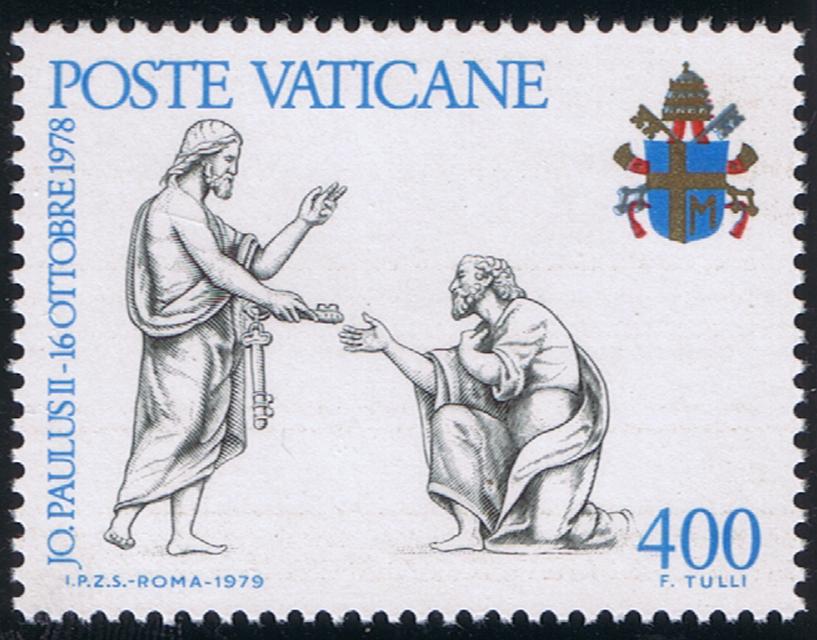







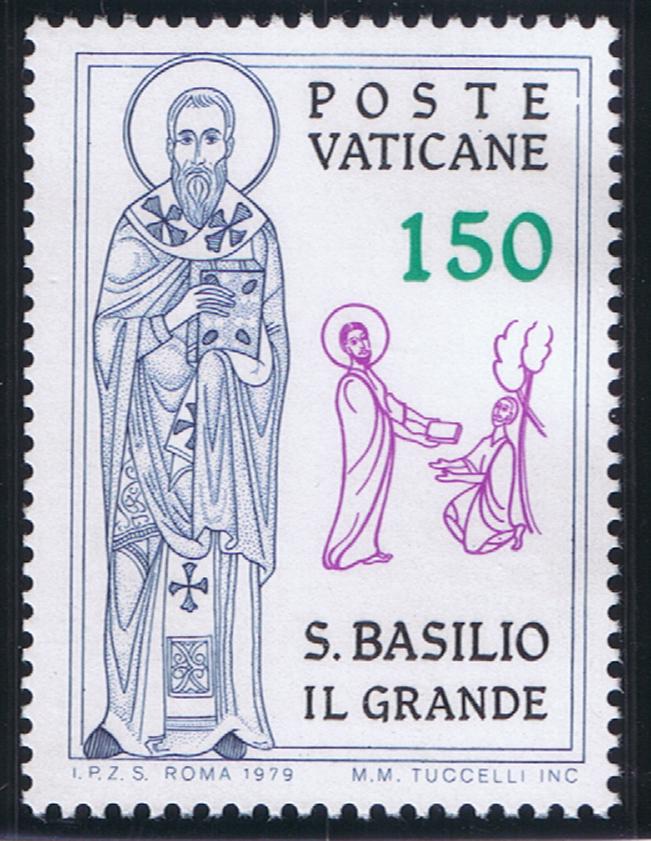
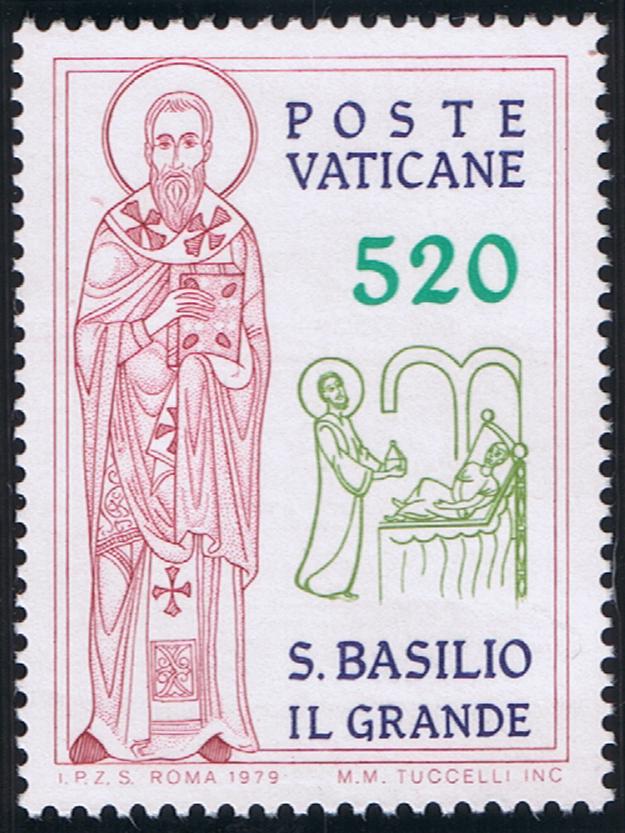
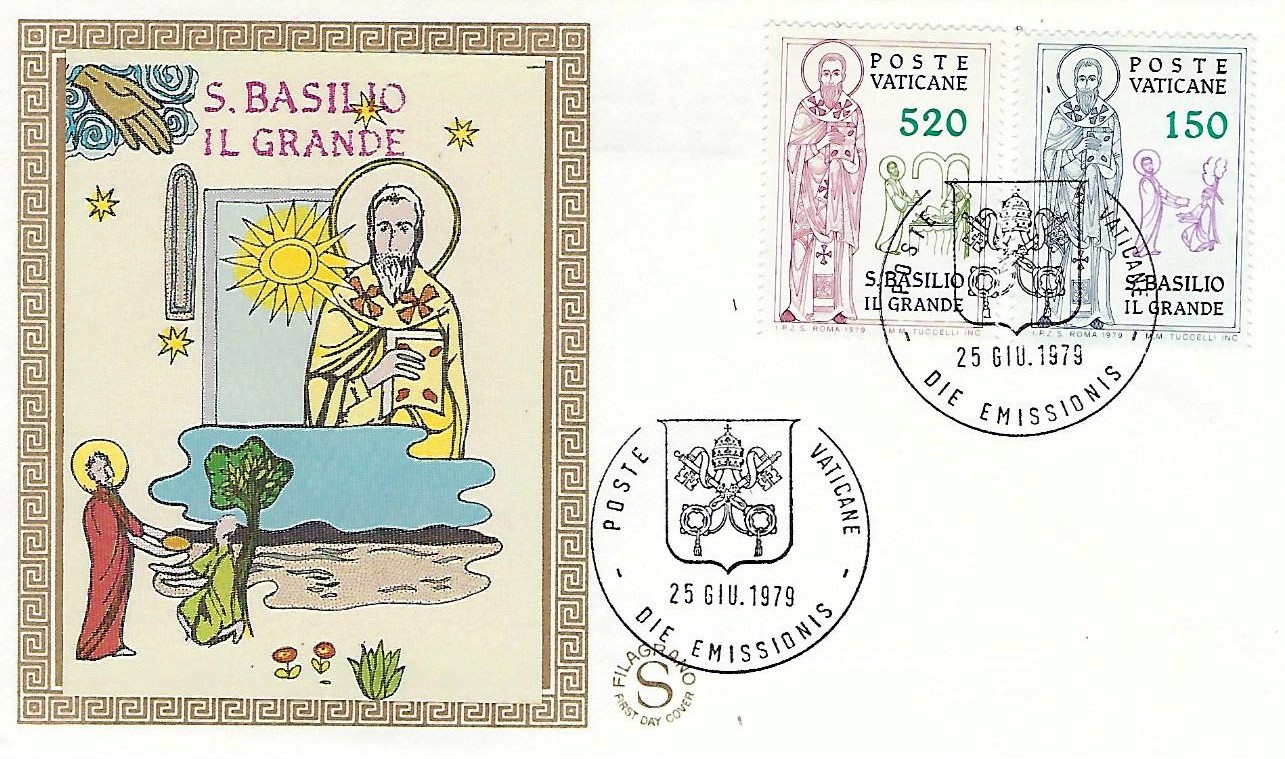
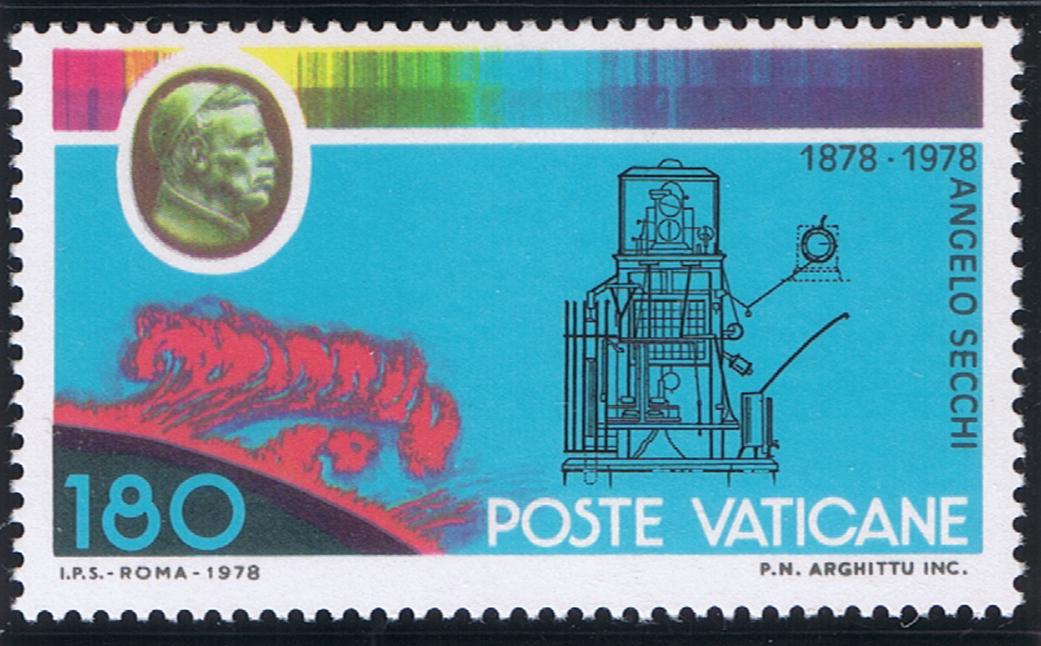
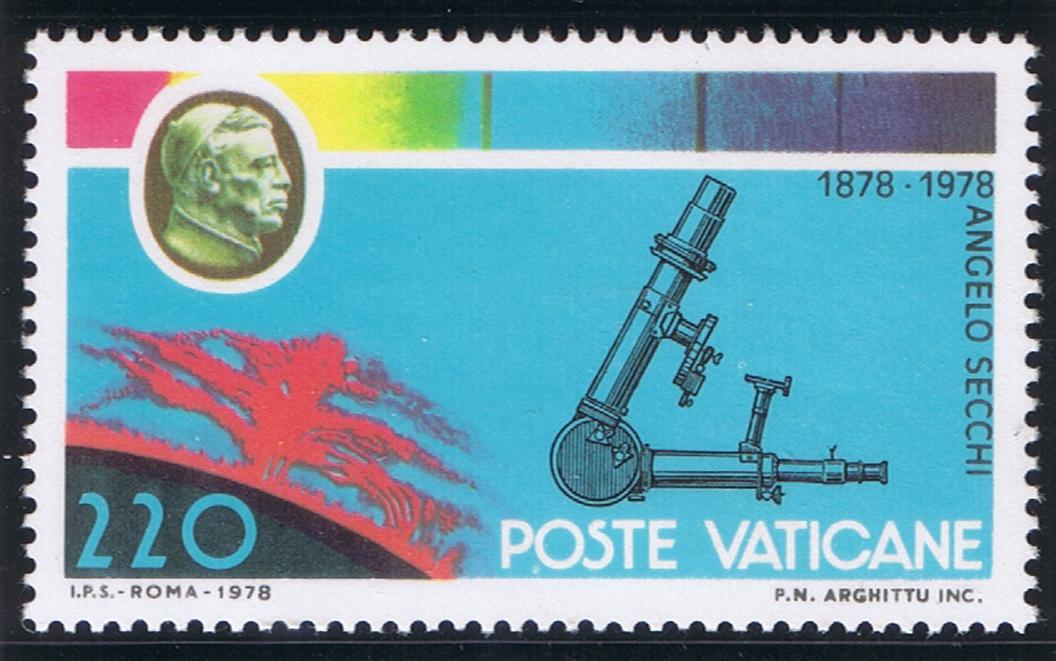
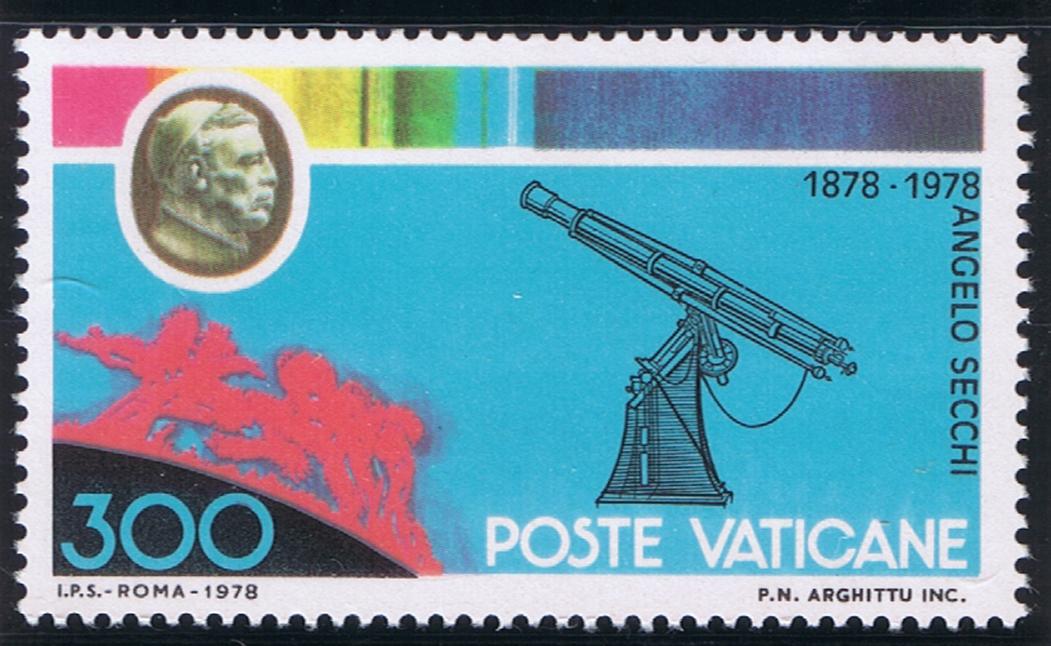



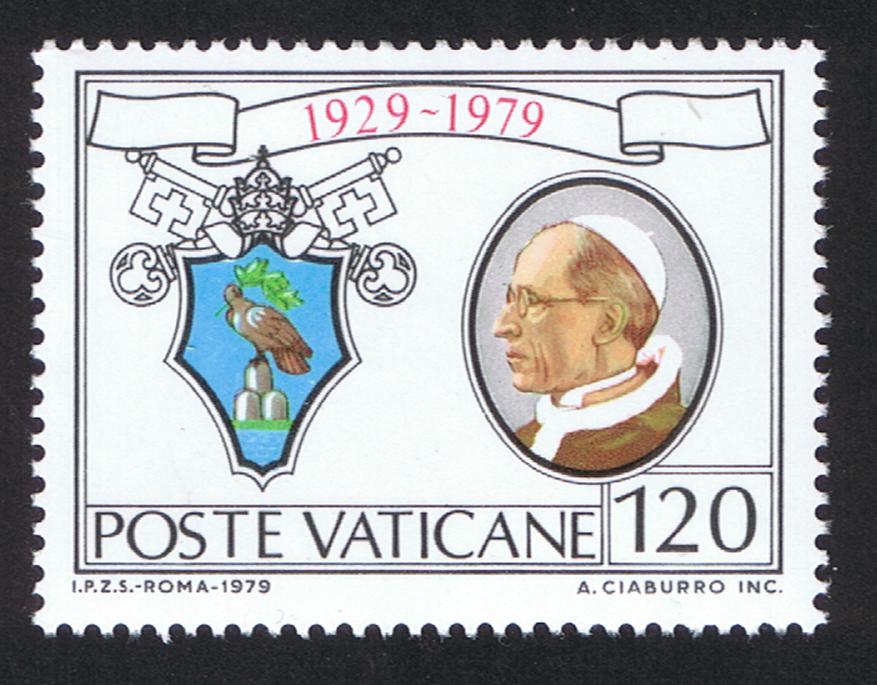

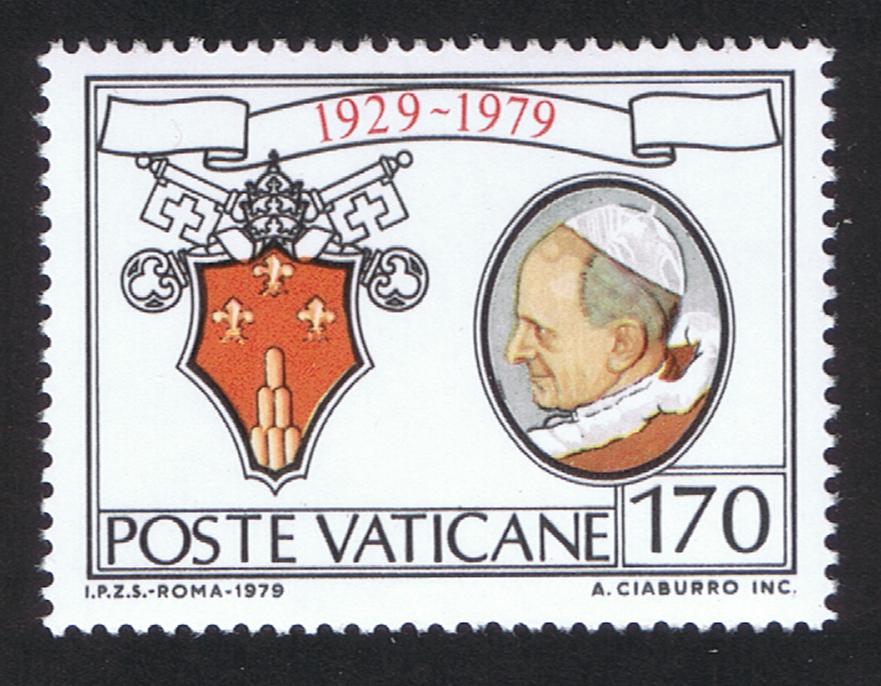






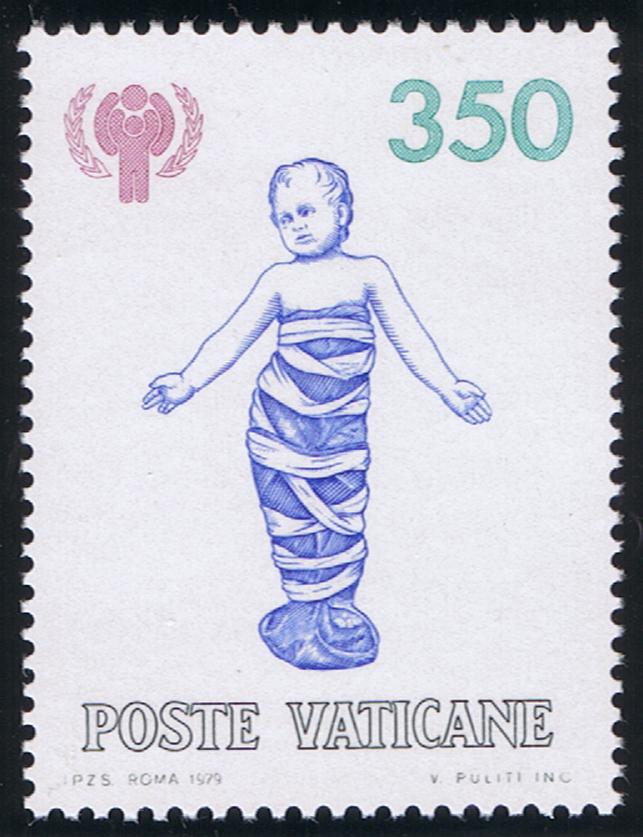


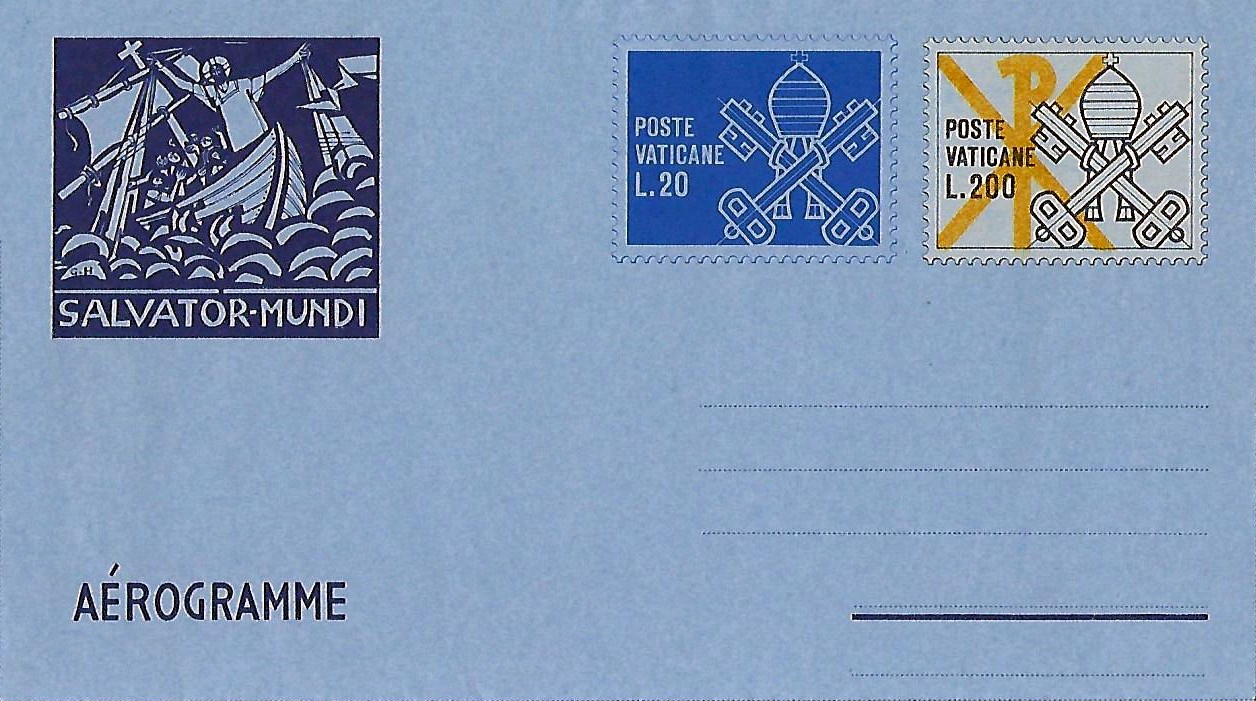

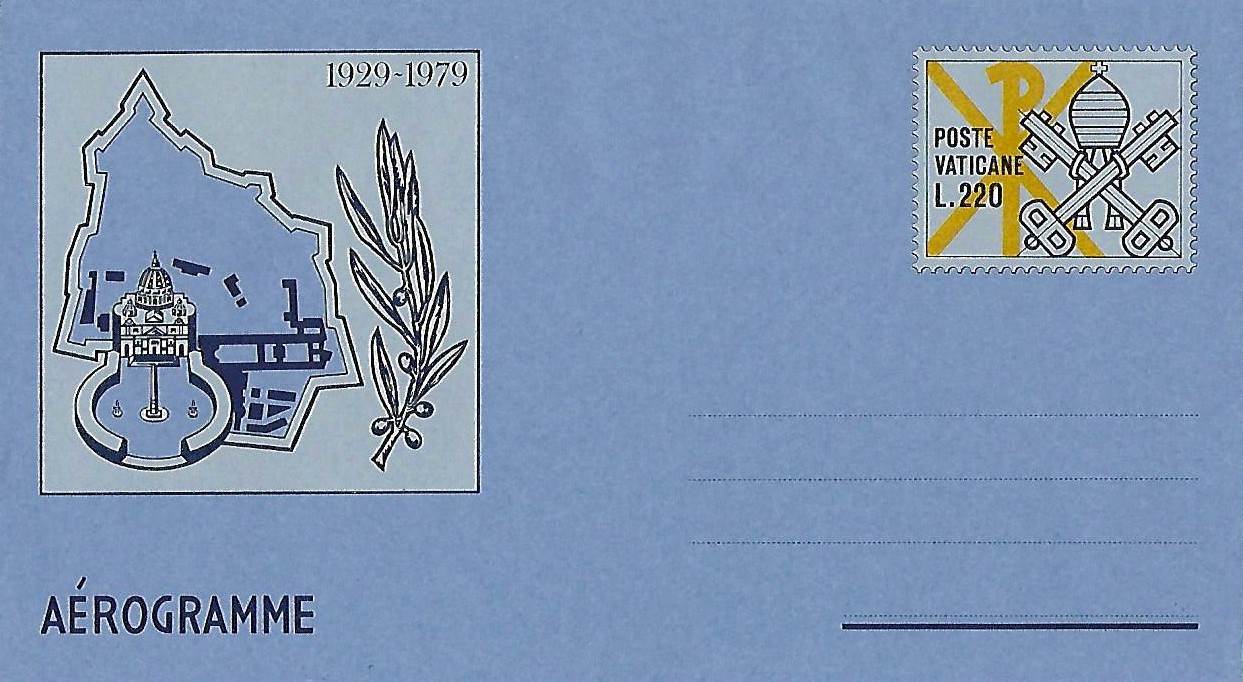






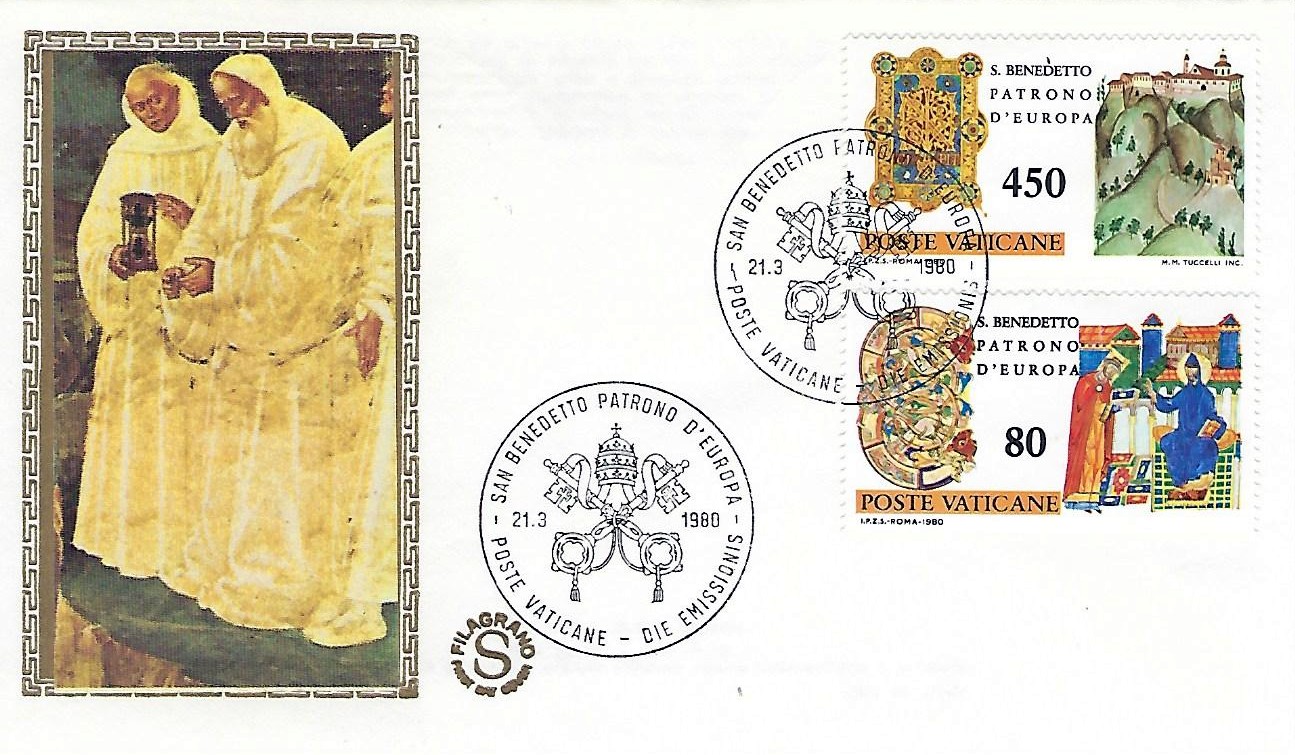





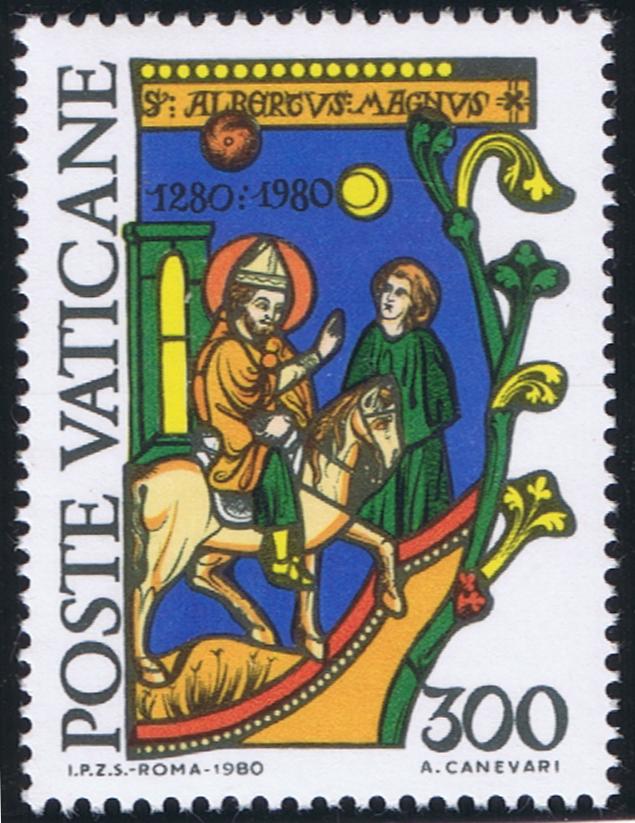
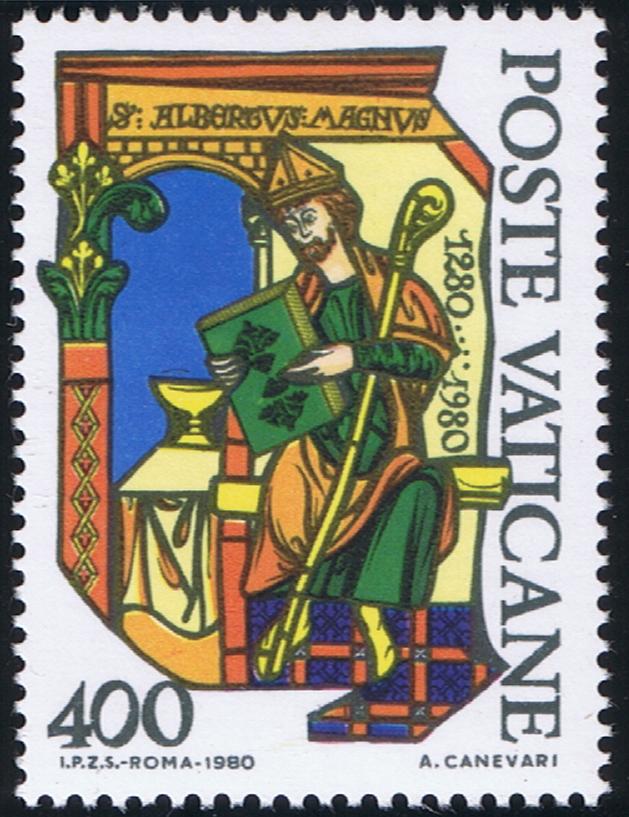

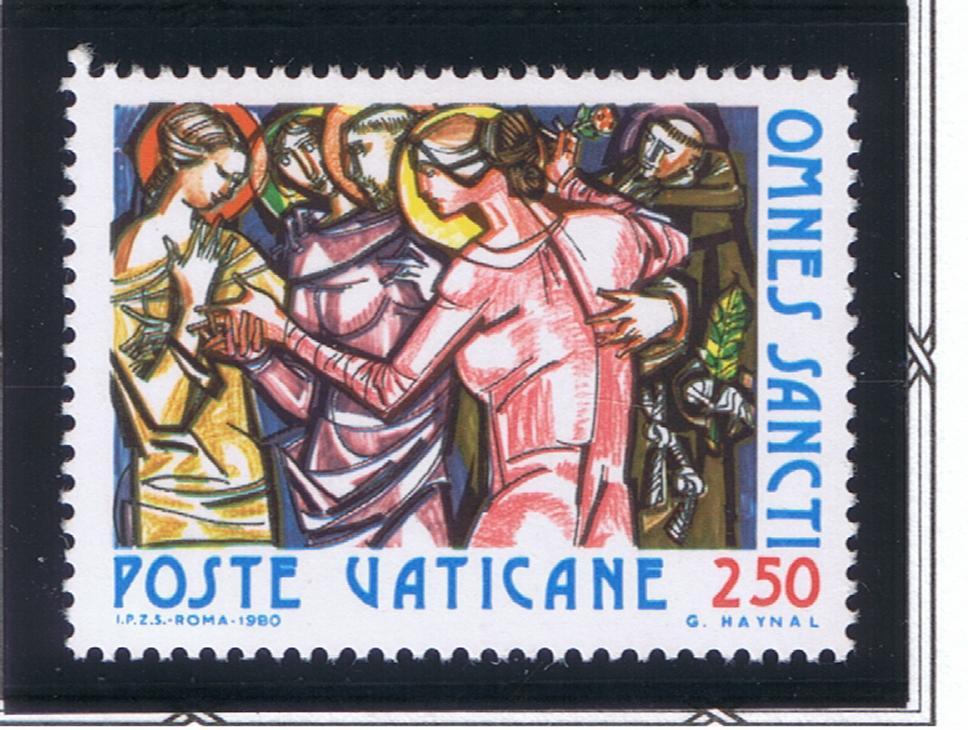
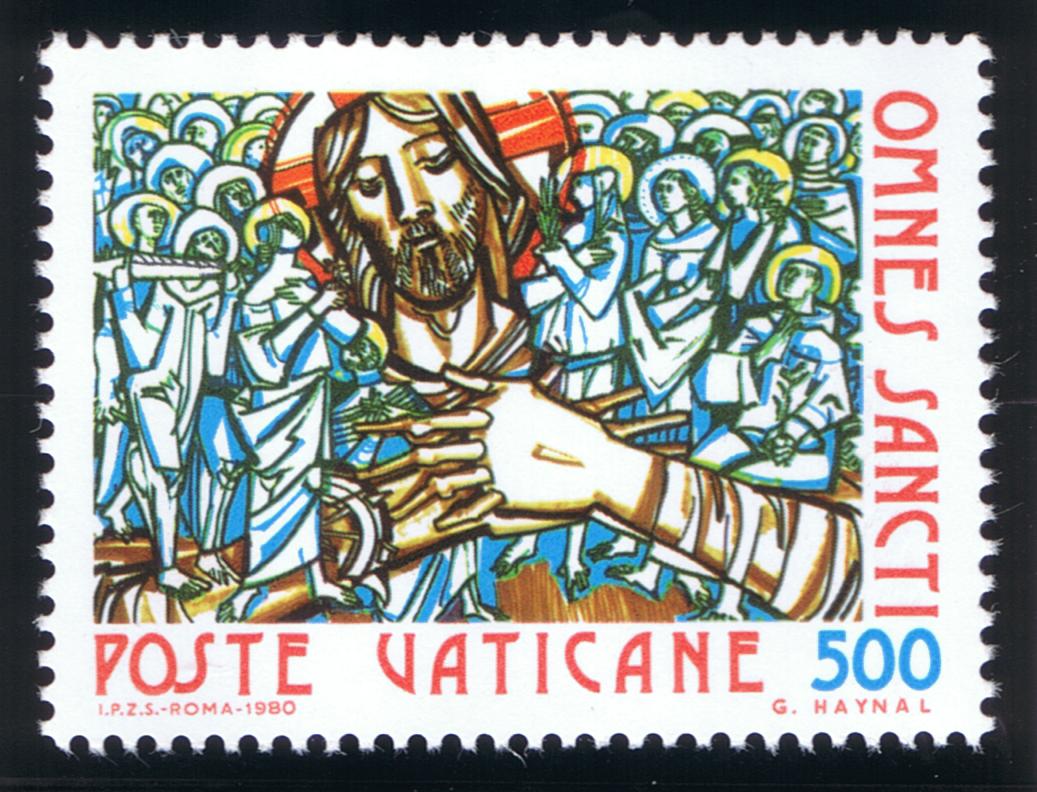





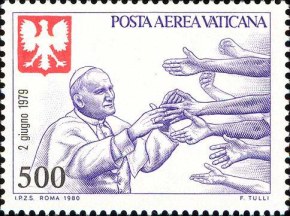





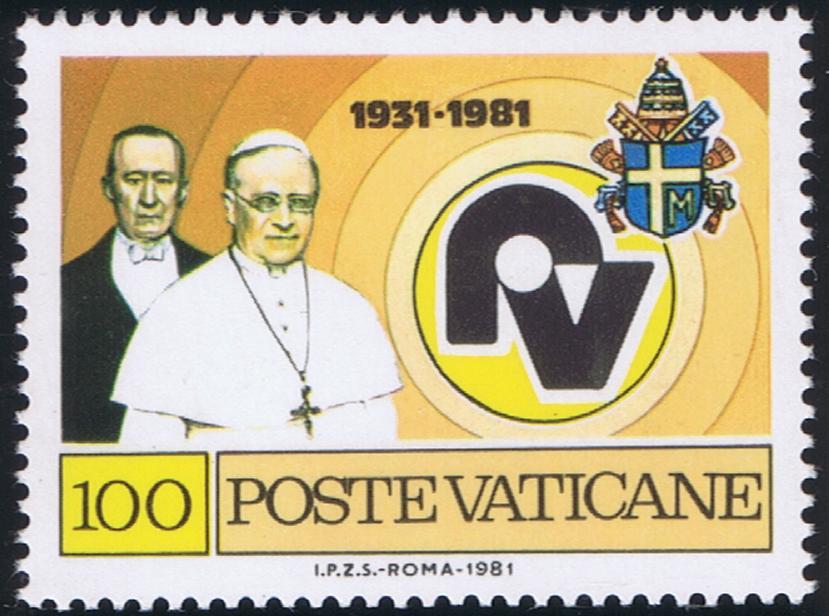

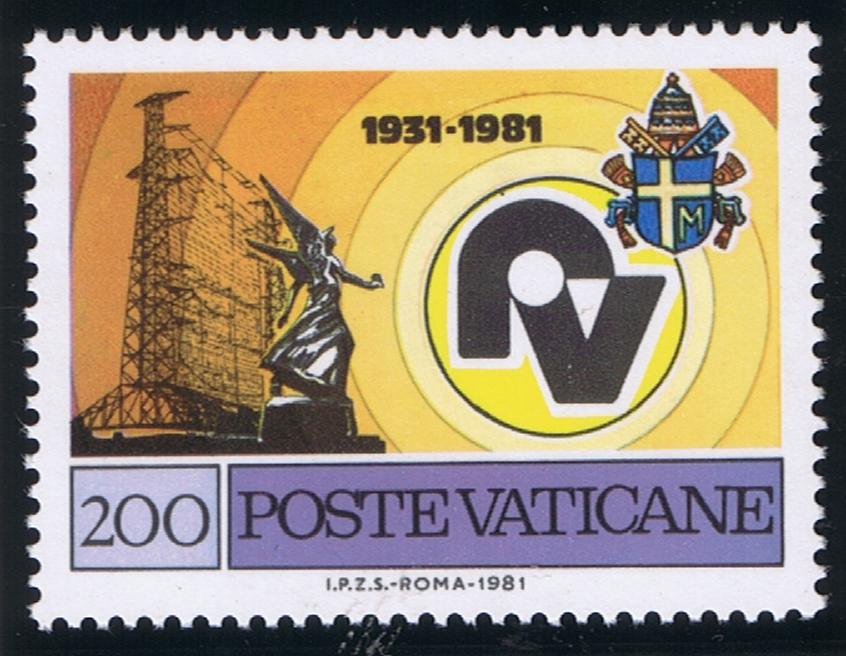
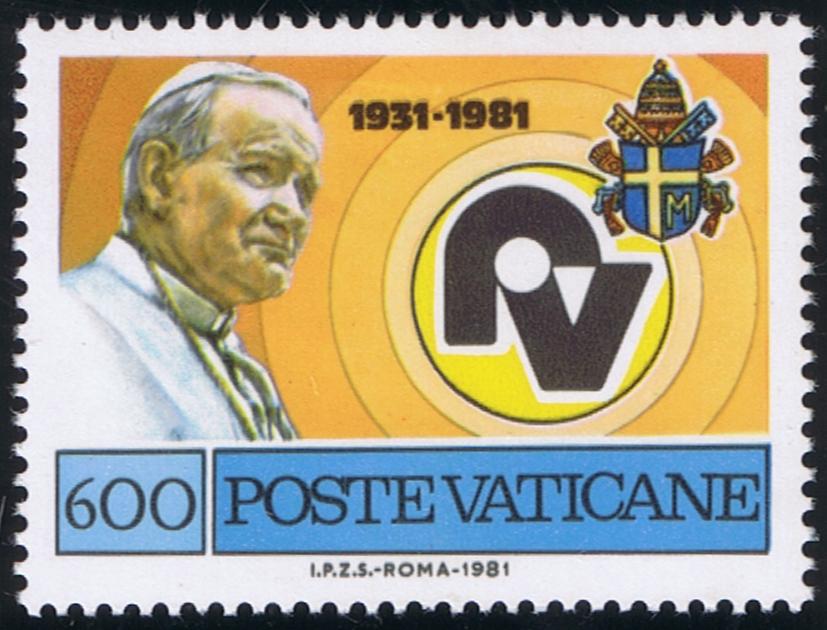


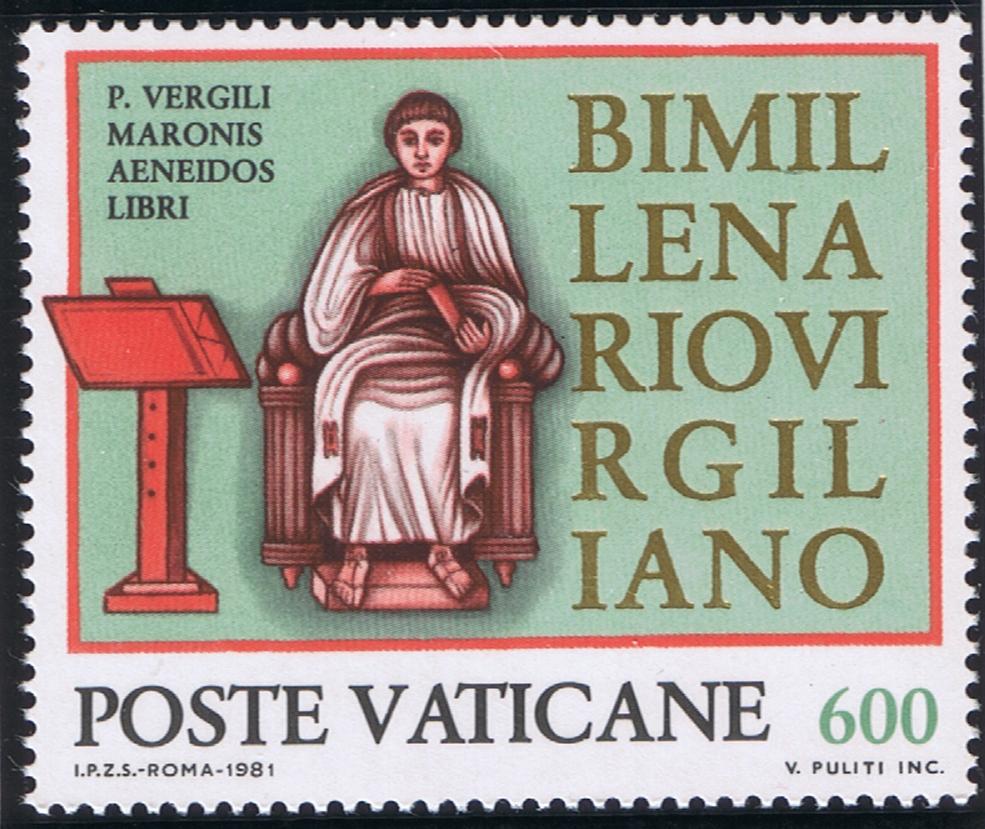







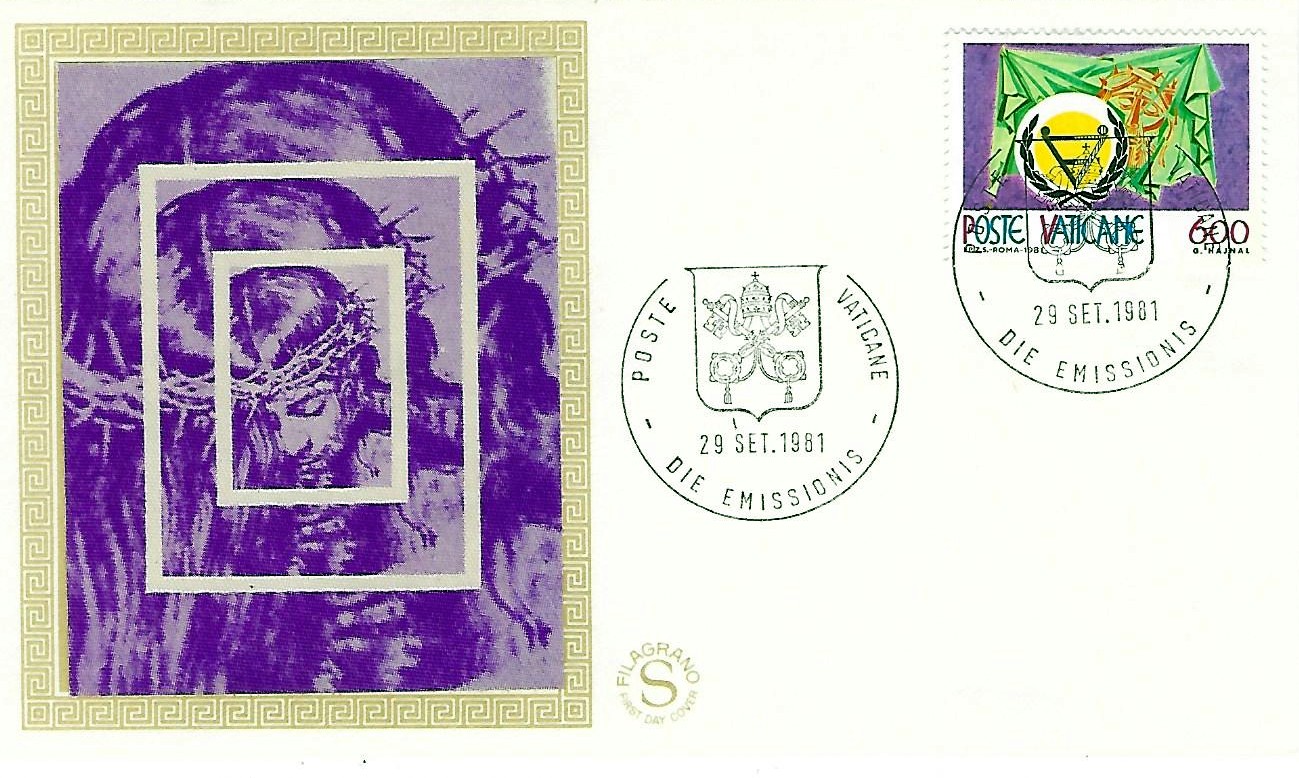


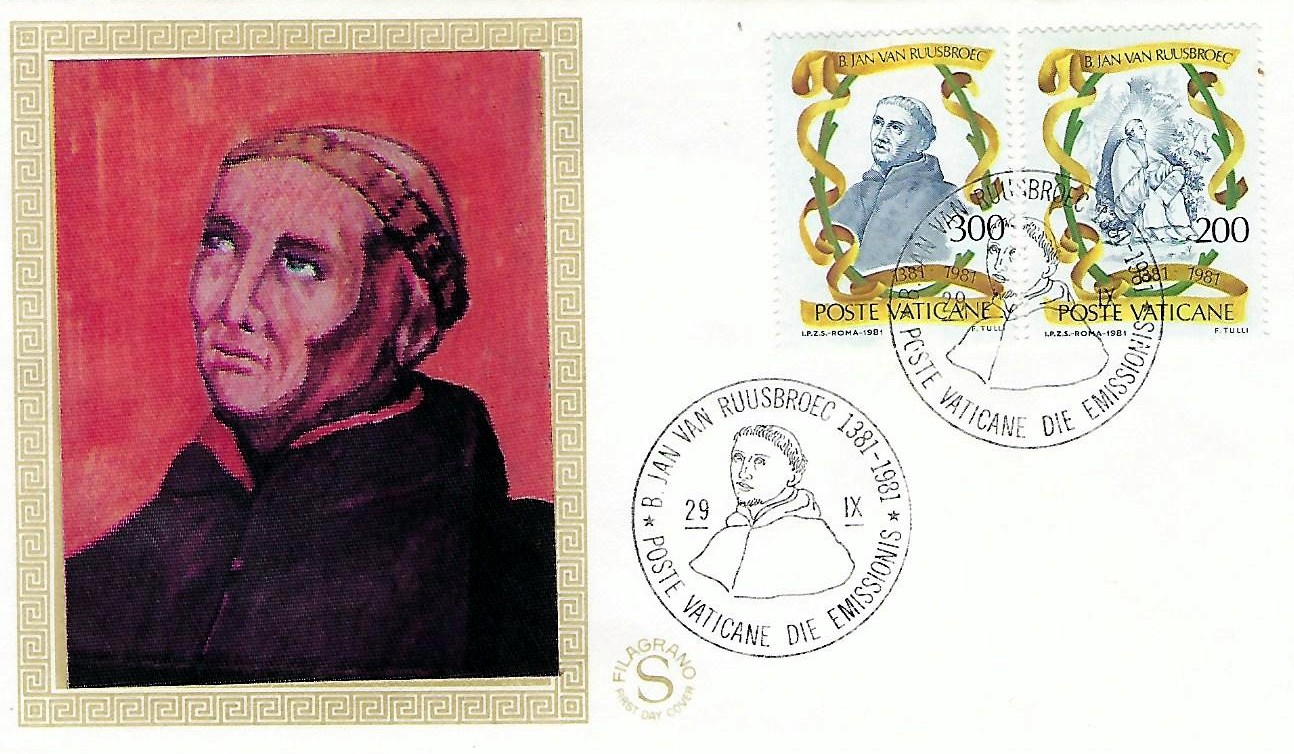




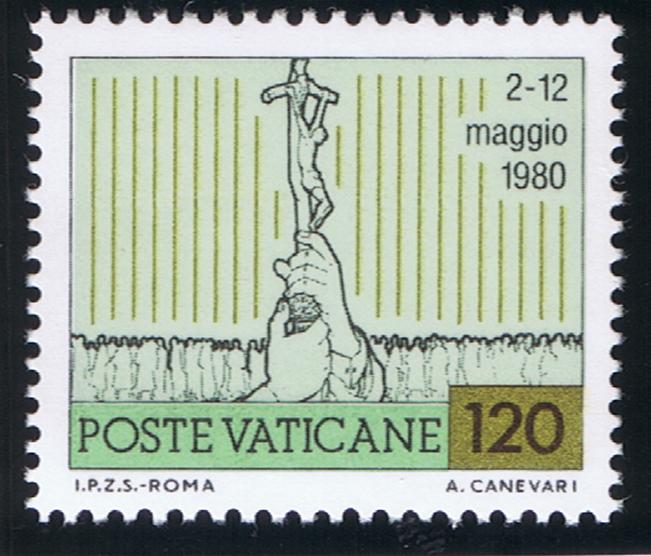





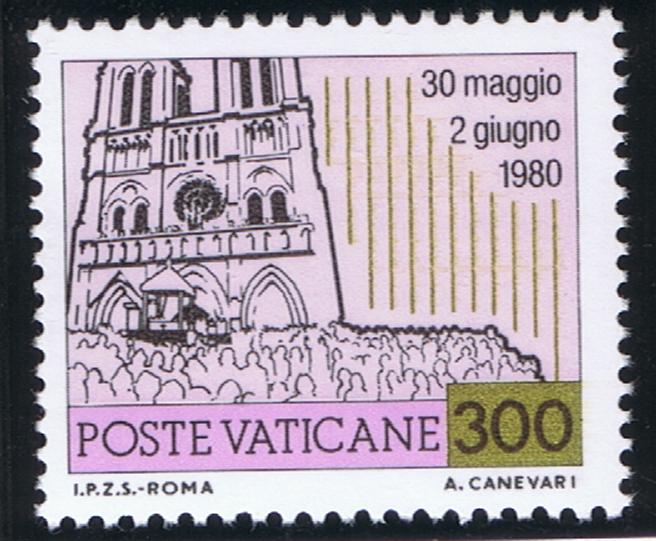




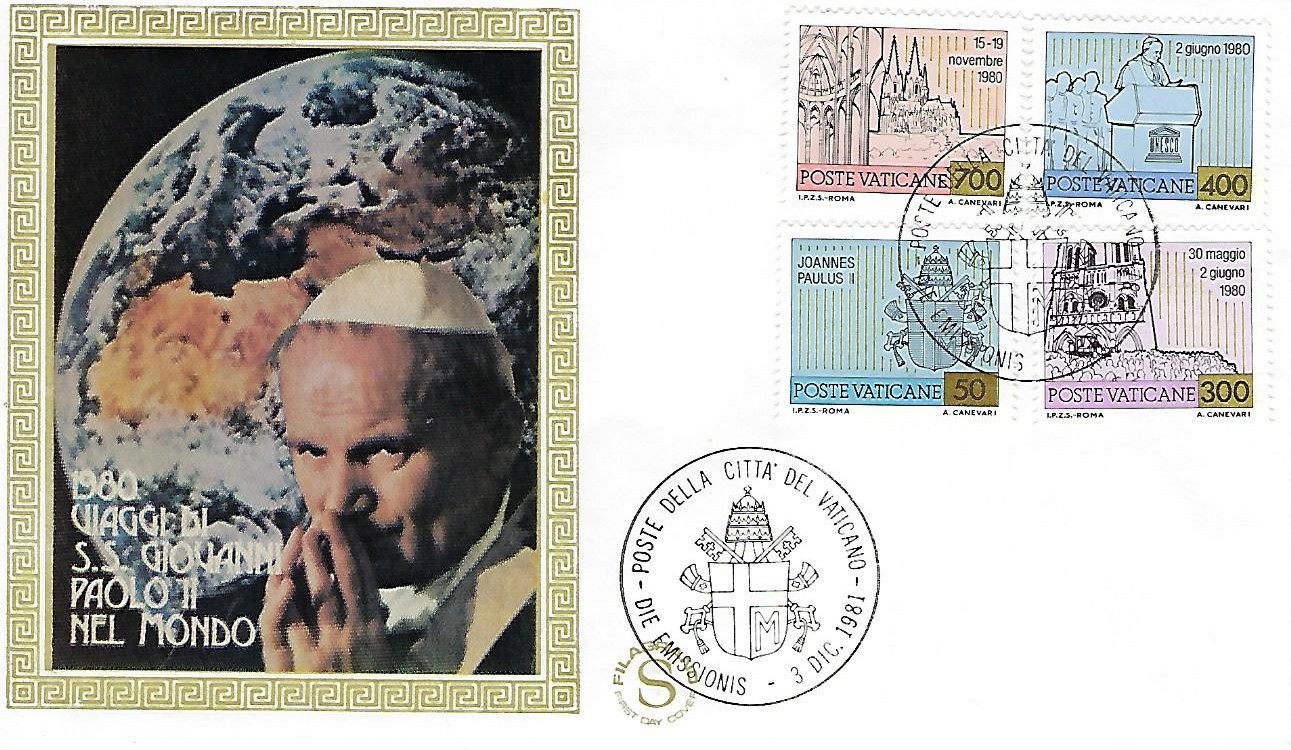
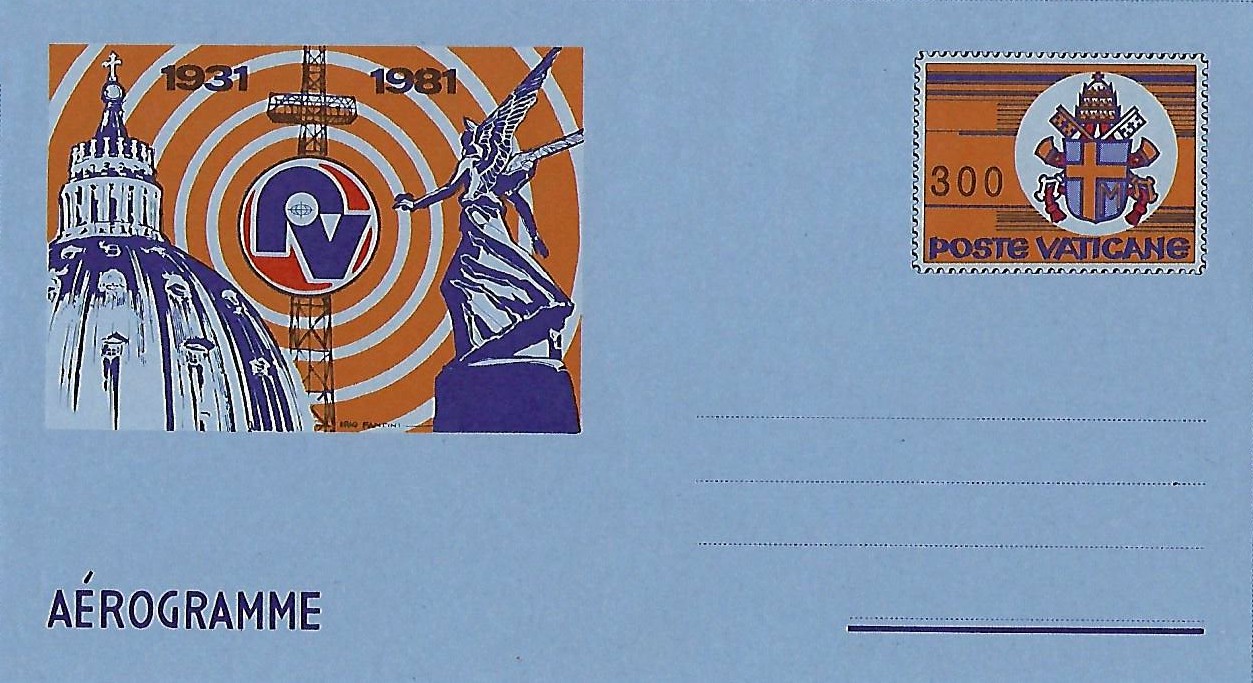

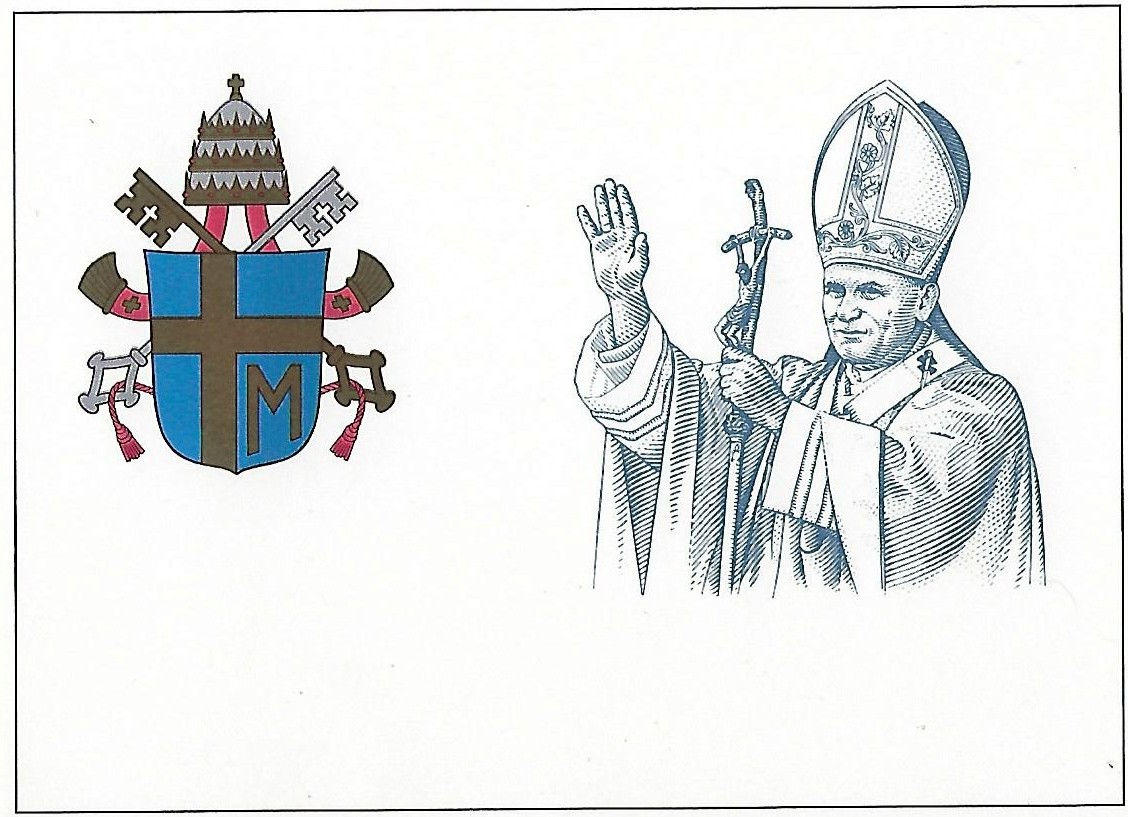

Saint Agnes of Prague



Lucca della Robbia's 'The Madonna and Child'


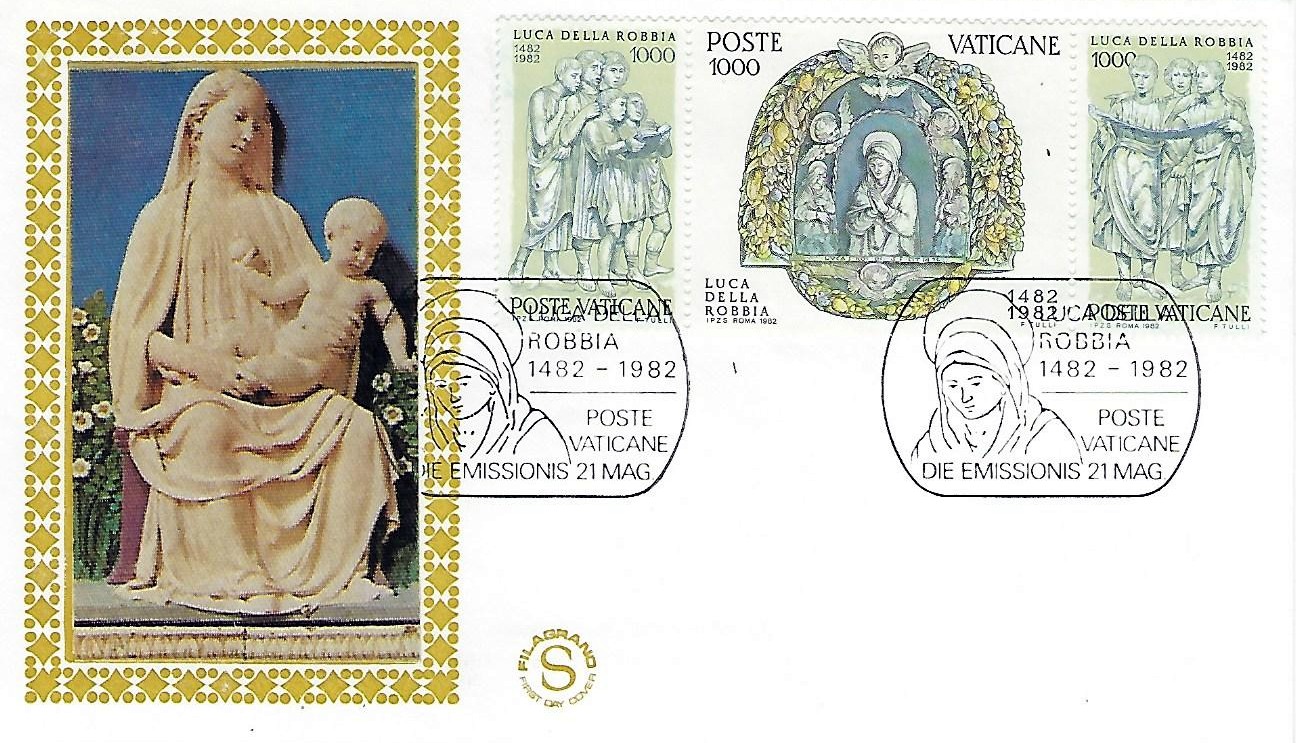
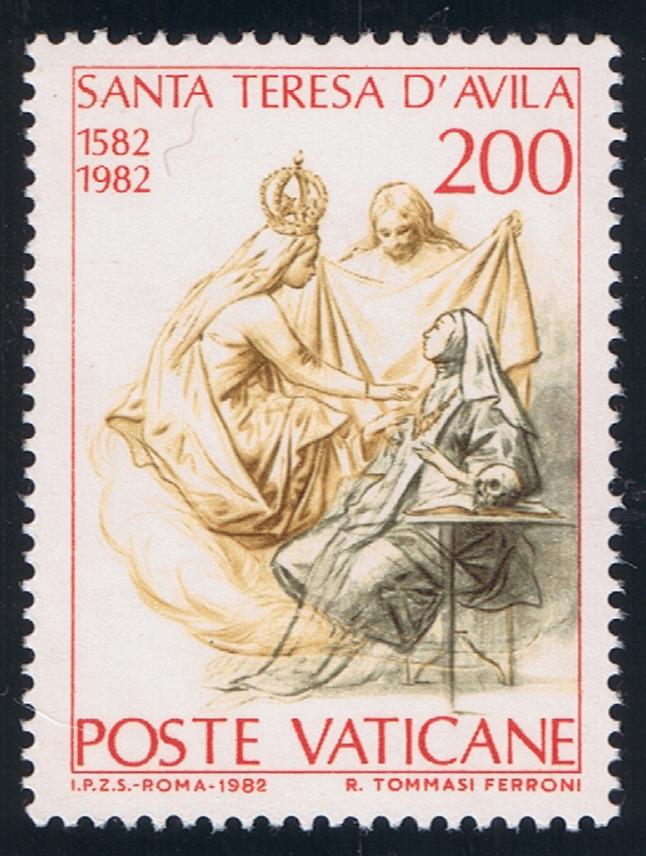
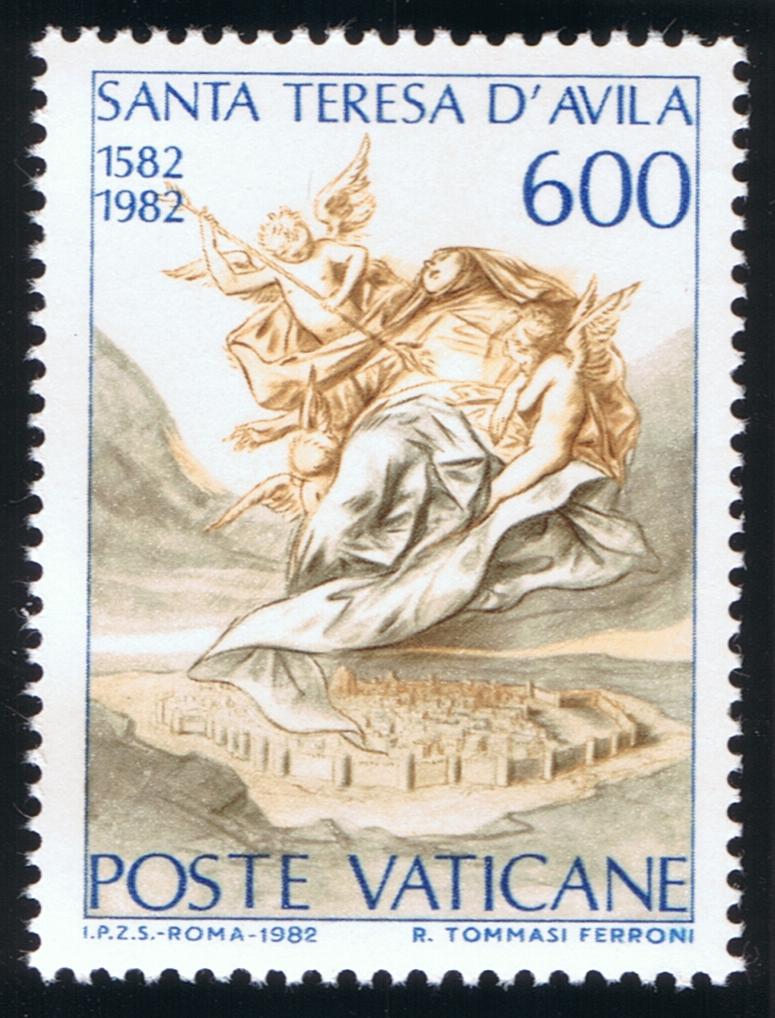
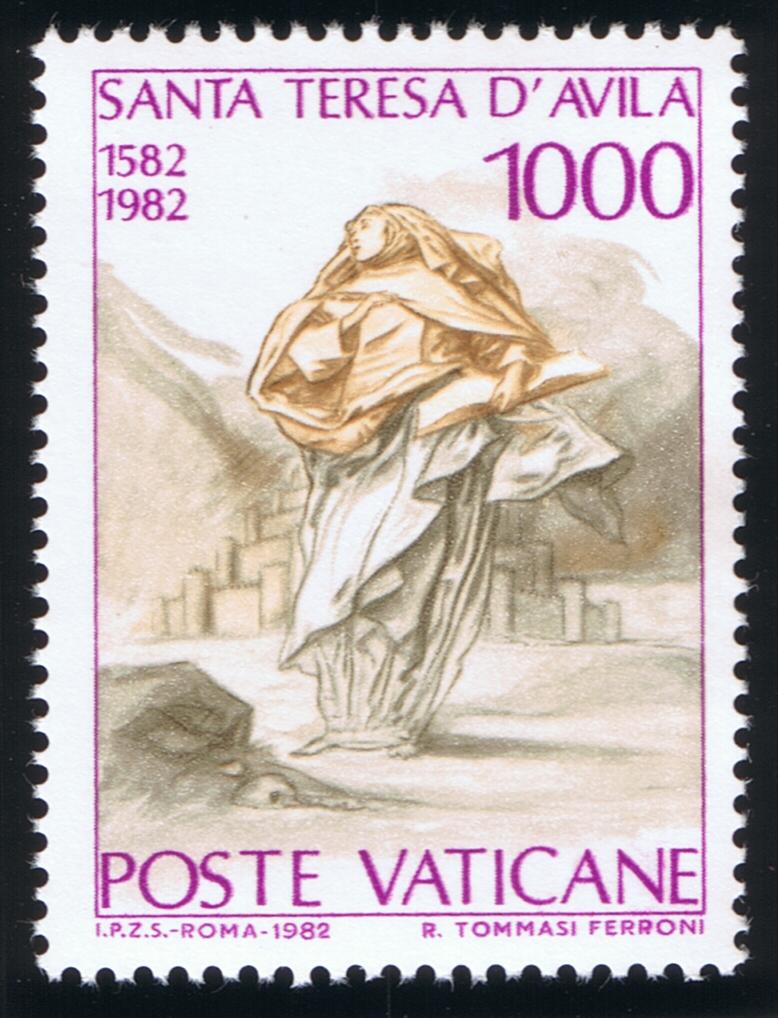
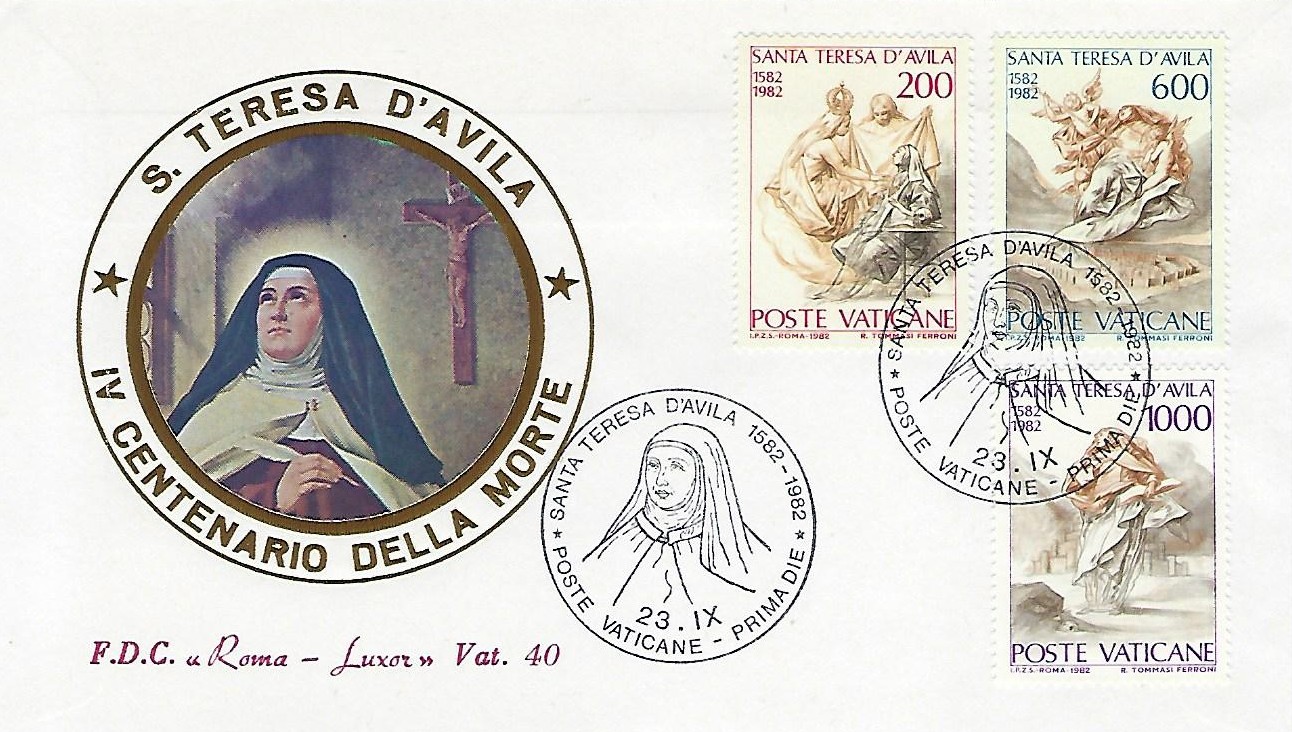




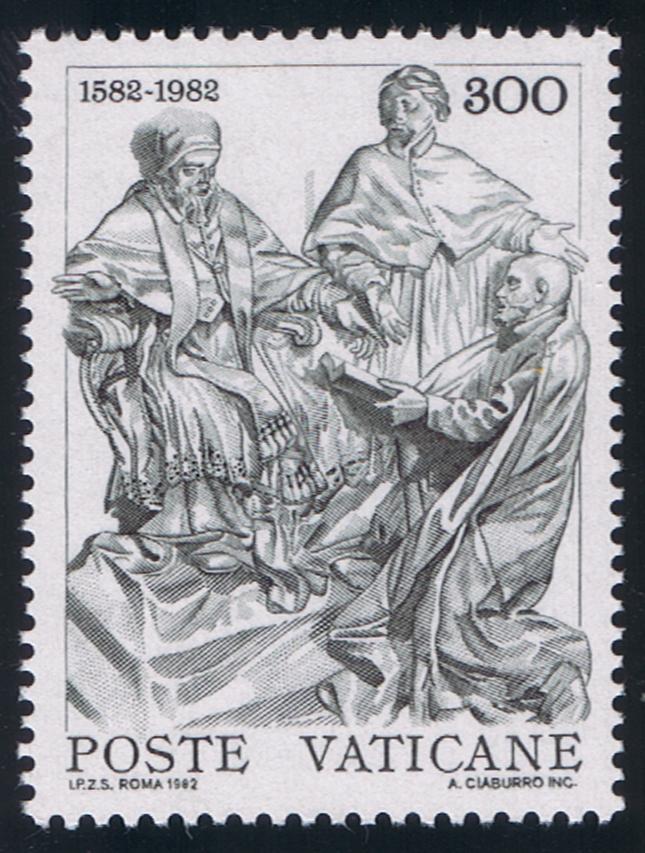
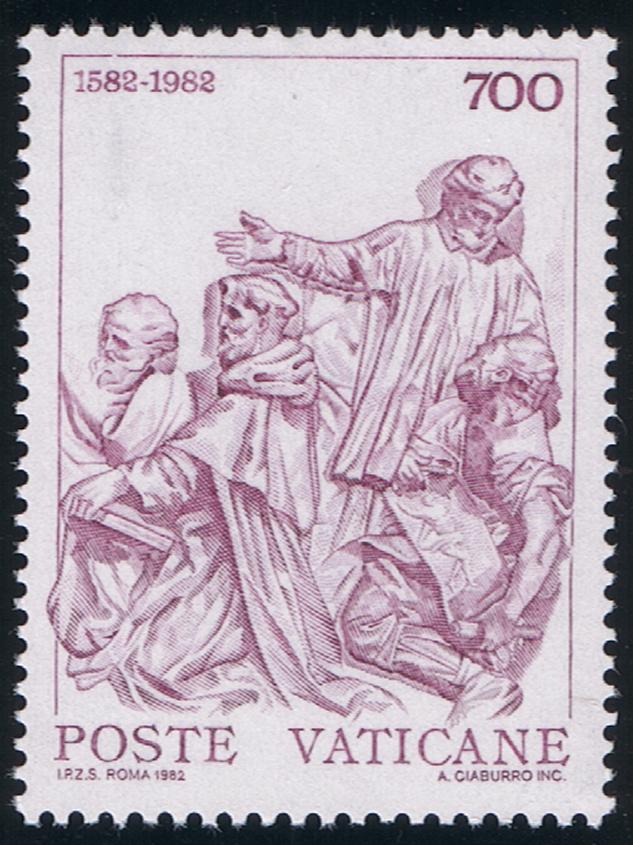
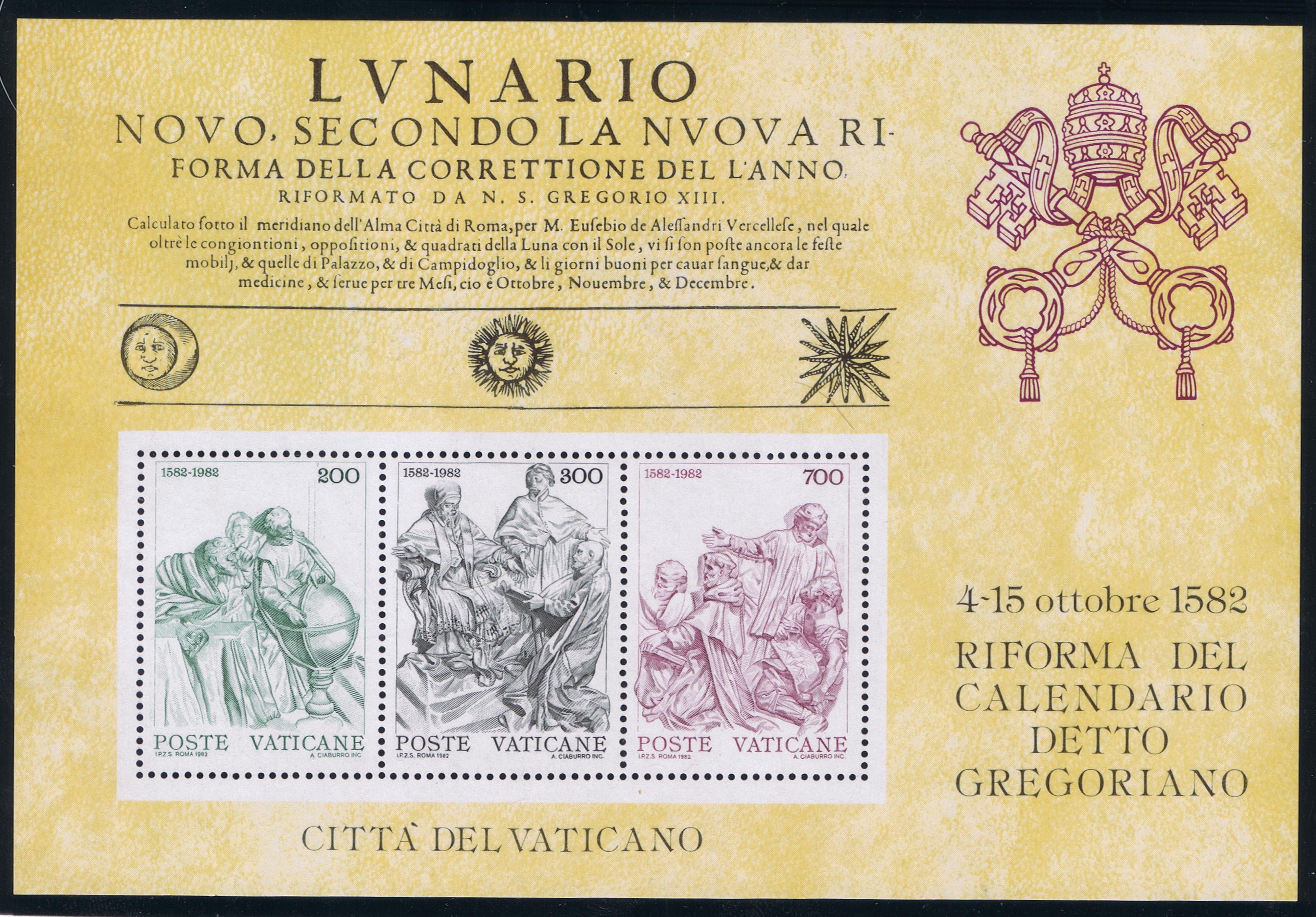



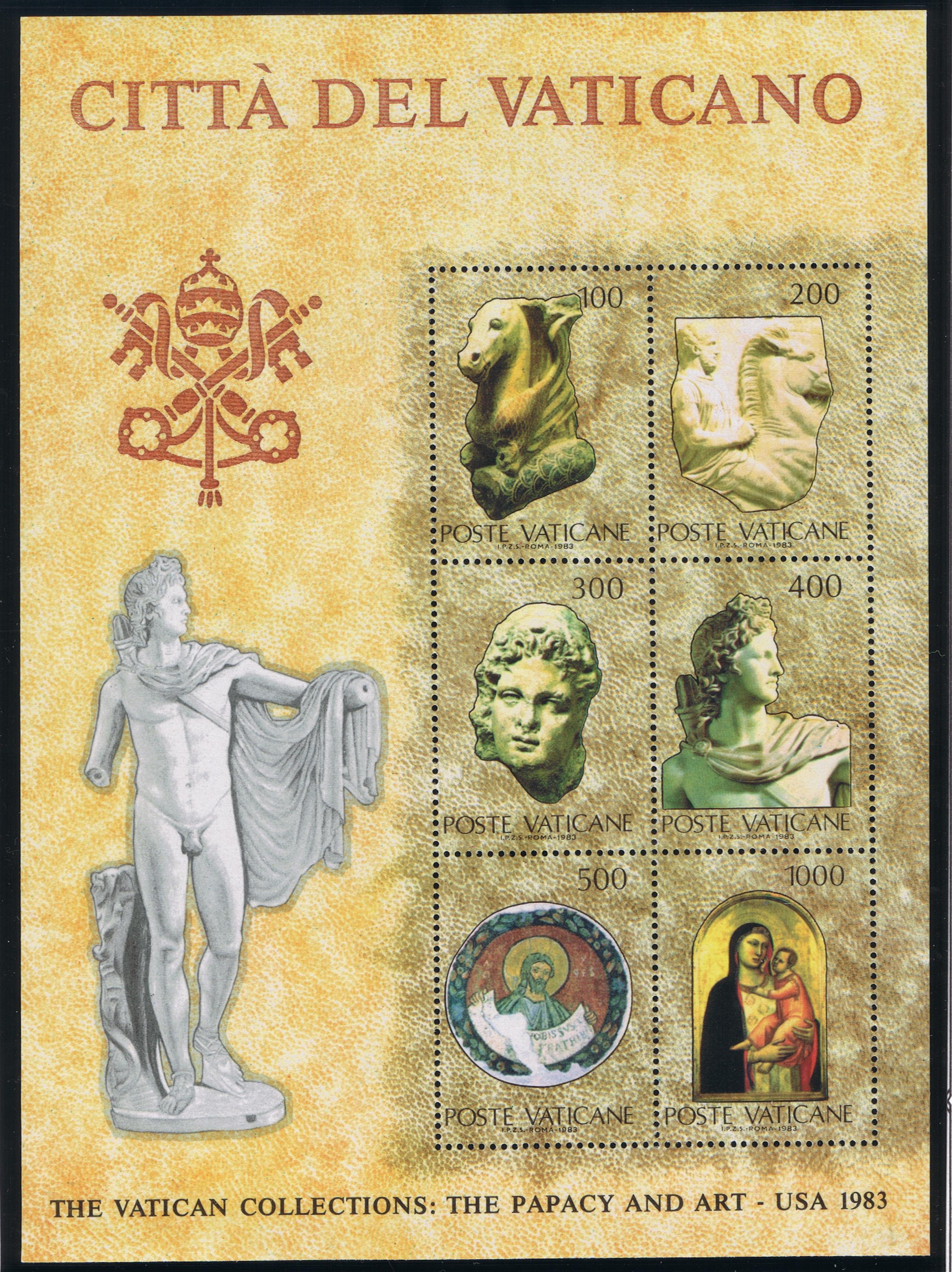

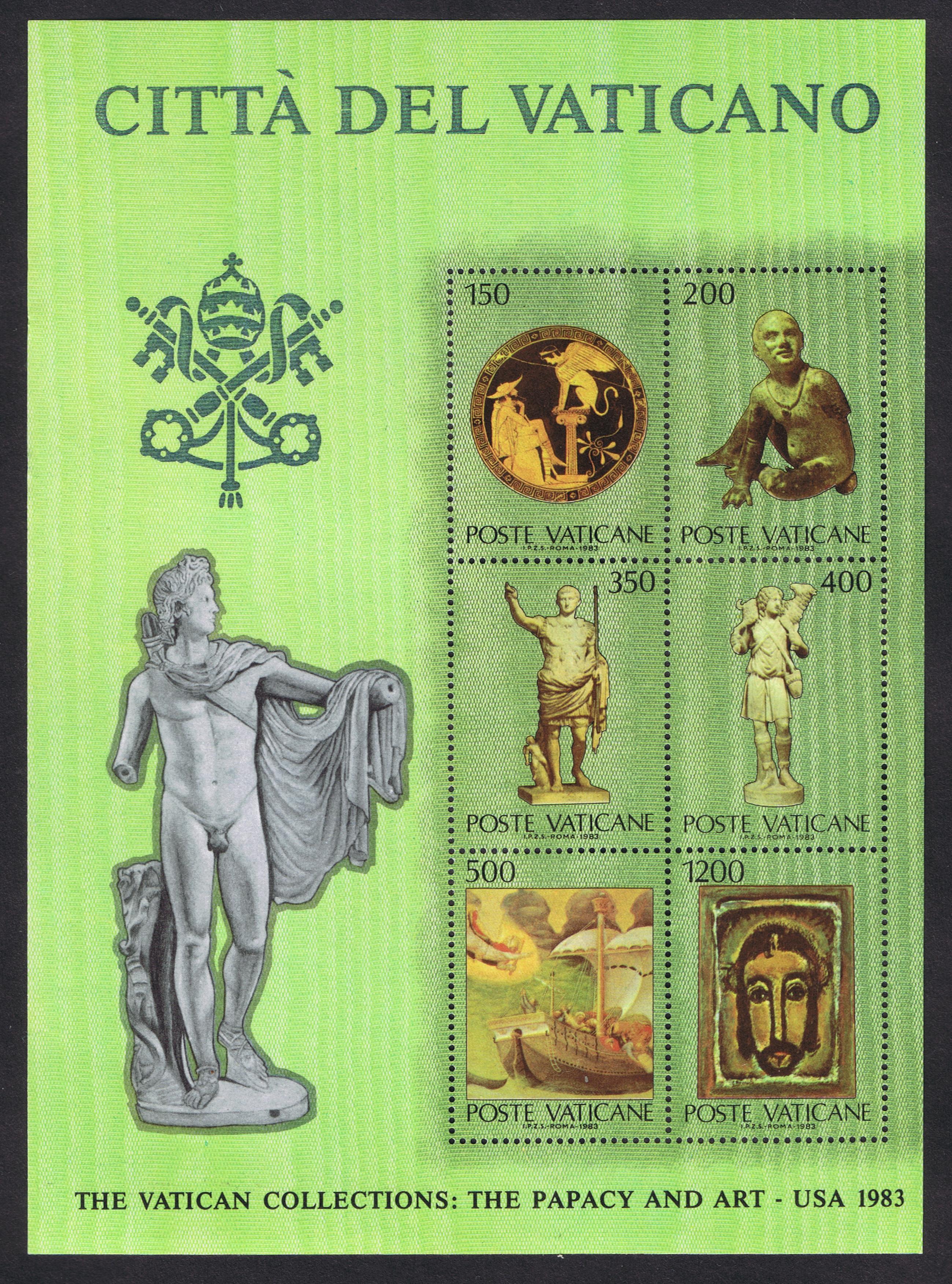










5th Centenary Of Birth Of Raphael Sanzio
On June 14th, 1983, Vatican City issued a series of four stamps to commemorate the fifth centenary of the Italian Renaissance painter Raphael Sanzio. The stamps depict four "allegories" painted by Raphael on the vault of the Stanza della Segnatura (Room of the Segnatura) at the Vatican. The denominations and subjects are as follows:

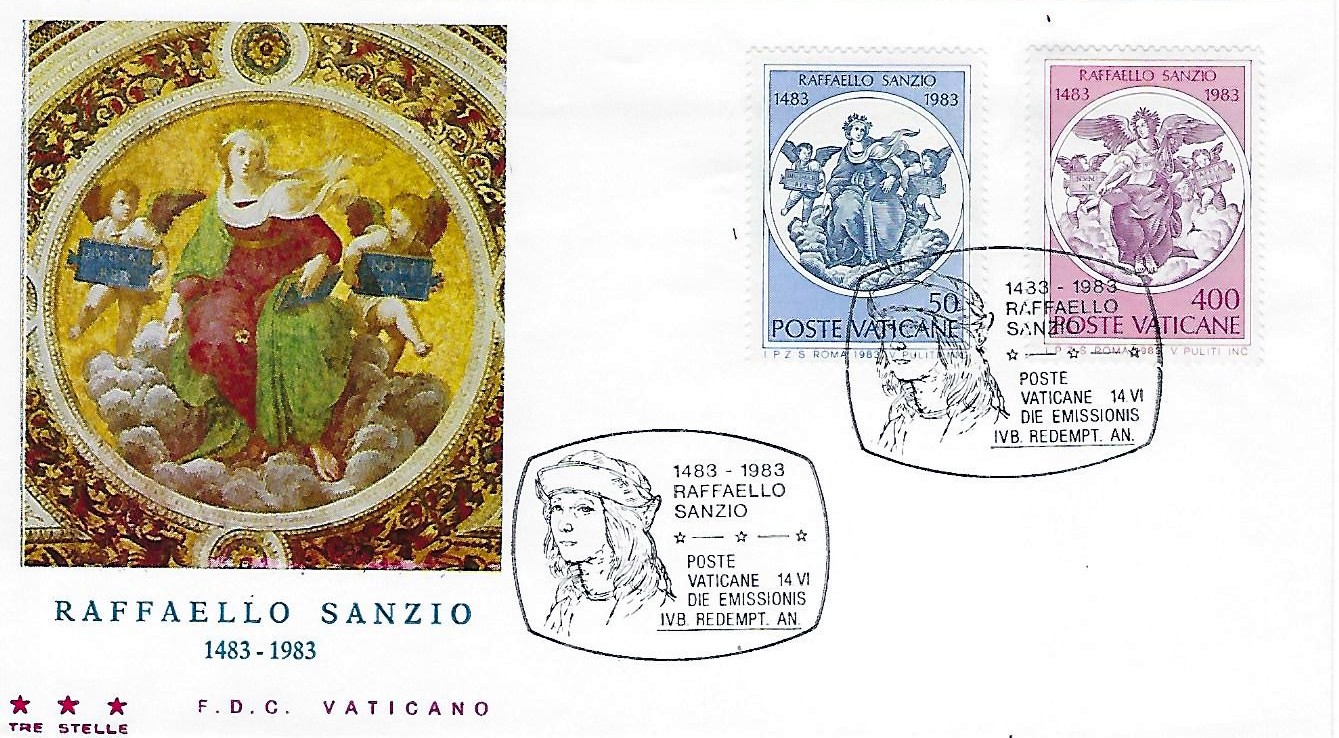





Centenary of Death of Gregor Mendel
On February 28, 1984, the Vatican issued a series of stamps to commemorate the centenary of the death of the noted biologist Gregor J. Mendel.
The series consists of two values: 450 and 1,500 lire. Roth stamps share a common horizontal design. At the right is a portrait of Gregor J. Mendel. To the left is an illustration of his experiments on the descent of hybrids in garden peas. The design was engraved by Mario Codoni. The inscription GREGORIO J. MENDEL 1884 1984 may be found at the top center. Along the bottom are the denomination and the words POSTE VATICANE.
The stamps measure 40 x 30mm. and have a perforation of 13-1/4 x 14. They were printed in multicolor photogravure and recess on white chalky paper and were issued in sheets of 40. 950,000 complete series were printed by the Italian State Polygraphic Institute and Mint.
Gregor Johann Mendel was born at Heinzendorf in Silesia in 1822. He was educated at the University of Vienna. In 1843 he entered the Augustinian monastery at Brno. Men-del became abbot of the monastery in 1860. His experiments on the hybridization of peas led him to formulate the fundamental laws on the transmission of hereditary characteristics. These laws constitute the basis of the modern science of genetics.
(Author - Unknown, From Vatican Notes Volume 32, Number 6, May 1984, Page 1)

Saint Casimir of Lithuania









1984 Cultural Issue
On June 18 1984, Vatican City issued a series of four stamps honoring cultural and scientific institutions of the Holy See. The denominations and subjects are as follows:
150 lire - external view of the Pontifical Academy of Sciences.
450 lire - seals on a document preserved in the Vatican Secret Archives.
550 lire - the entrance to the Vatican Apostolic Library.
1.500 lire - the Vatican Observatory at Castelgandolfo.
The designs include the names of each institution. Along the bottom of the stamps are the words POSTE VATICANE as well as the denomination. The illustrations were based on sketches by Professor Lino Bianchi Barriviera. They were engraved by G. Verdelocco, M. Codoni, V. Puliti and F. Borrelli, respectively. The stamps are horizontal in format, measuring 48 x 40 mm., and are perforated 14 x 14. They were produced on white chalky paper in multicolored offset, recess, and photogravure, and were issued in sheets of 25. 900,000 complete series were printed by the Italian State Polygraphic and Mint.
The Vatican Apostolic Library was established by Pope Sixtus IV in 1475 ( See Vatican *579-81). Since the late sixteenth century, the Library has been located in a special wing of the Vatican Galleries adjacent to the Belvedere Courtyard. The Library's collections include both printed works and priceless manuscripts. (Editor's Note: See Vatican Notes Volume 30-No. 6. page 6)
The Vatican Observatory was founded by Pope Gregory XIII in 1576. It was originally located in the Vatican's "Torre del Venti" (Tower of the Winds). In 1930, the Observatory was transferred to the Papal Palace at Castelgandolfo. It is the oldest astronomical institution in Europe.
The Pontifical Academy of Science has been in existence since 1603. In October of 1936, Pope Pius XI reestablished the Academy in its present location, the Casino of Pius IV in the Vatican Gardens (Vatican *227-28). Today the Academy includes scientists from many countries. Its purpose is to honor pure science by guaranteeing its freedom and promoting research.
The Vatican Secret Archives are the central archives of the Holy See. It was established by Pope Paul V between 1611 and 1614. The Archives contain many important historical documents, including the records of the Curia as well as Papal decrees and briefs. Its collections also include the diplomatic correspondence of Papal ambassadors (nuncios). Access to the Archives was strictly limited until the time of Pope Leo XIII. In 1881, this Pontiff ordered that scholars should have free access to the documents of the Archives. As a result, scholars from all parts of the world have conducted important historical research there. It was originally located in the same wing as the Vatican Library. However, underground extensions of both the Archives and the Library were recently inaugurated by Pope John Paul II.
Technical Details:
Scott Catalogue - 733-736
Date Issued - 18 June 1984
Face Value - 150 l, 450 l, €1.25, 550 l, 1500 l
Printer - Polygraph Institute of the Italian State
(Author - Thomas Crimando, From Vatican Notes Volume 33, Number 2, September 1984, Page 4)


